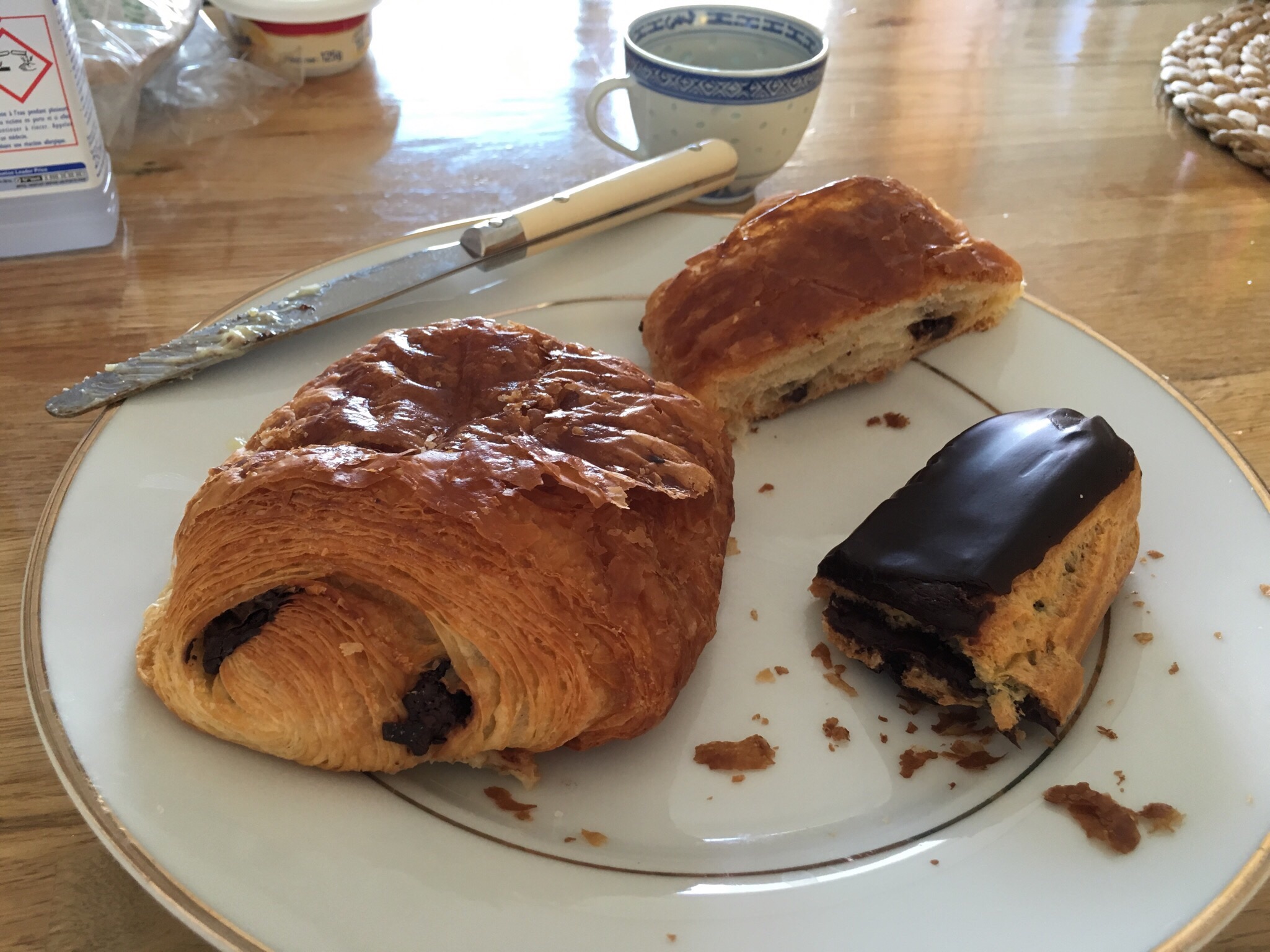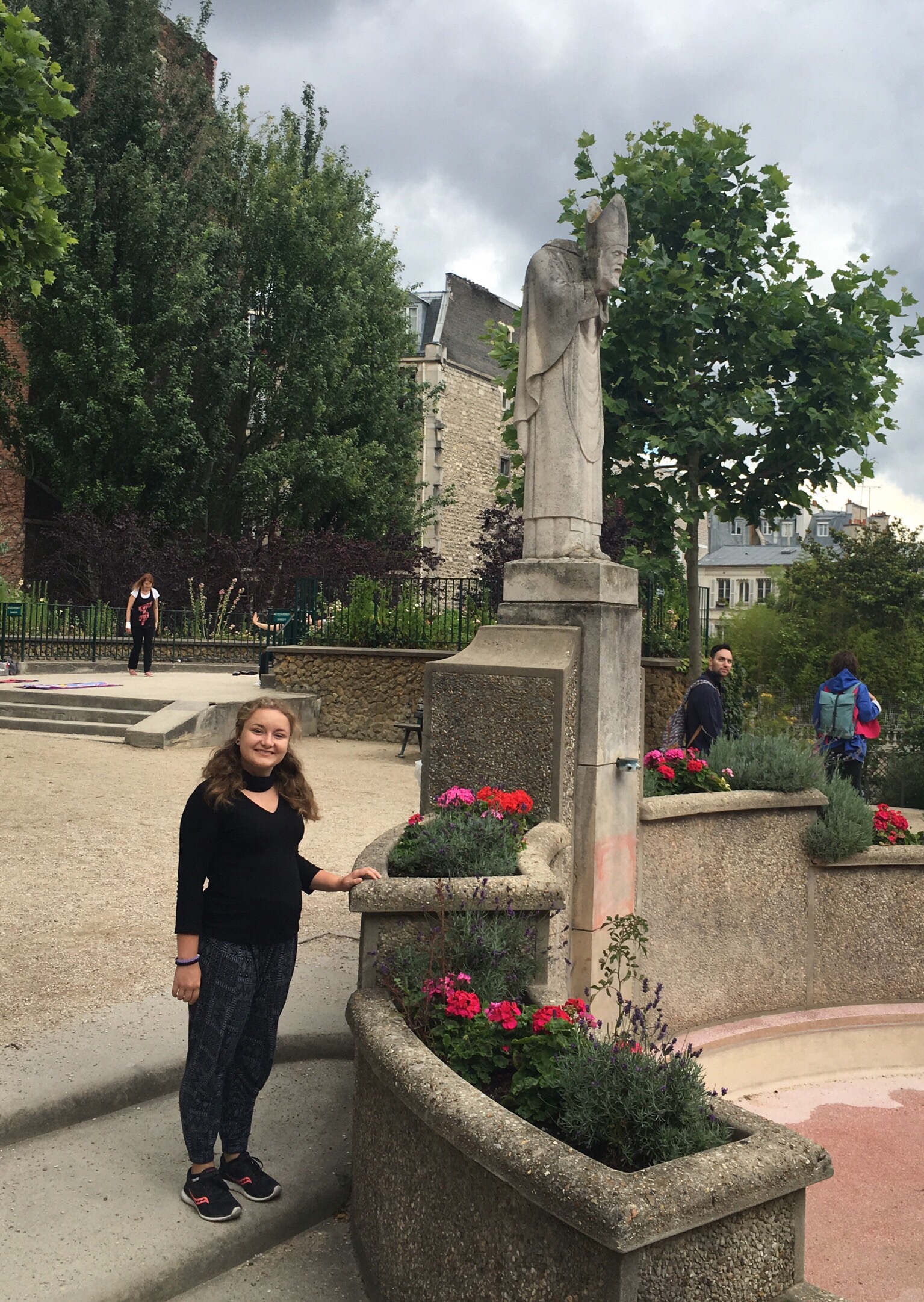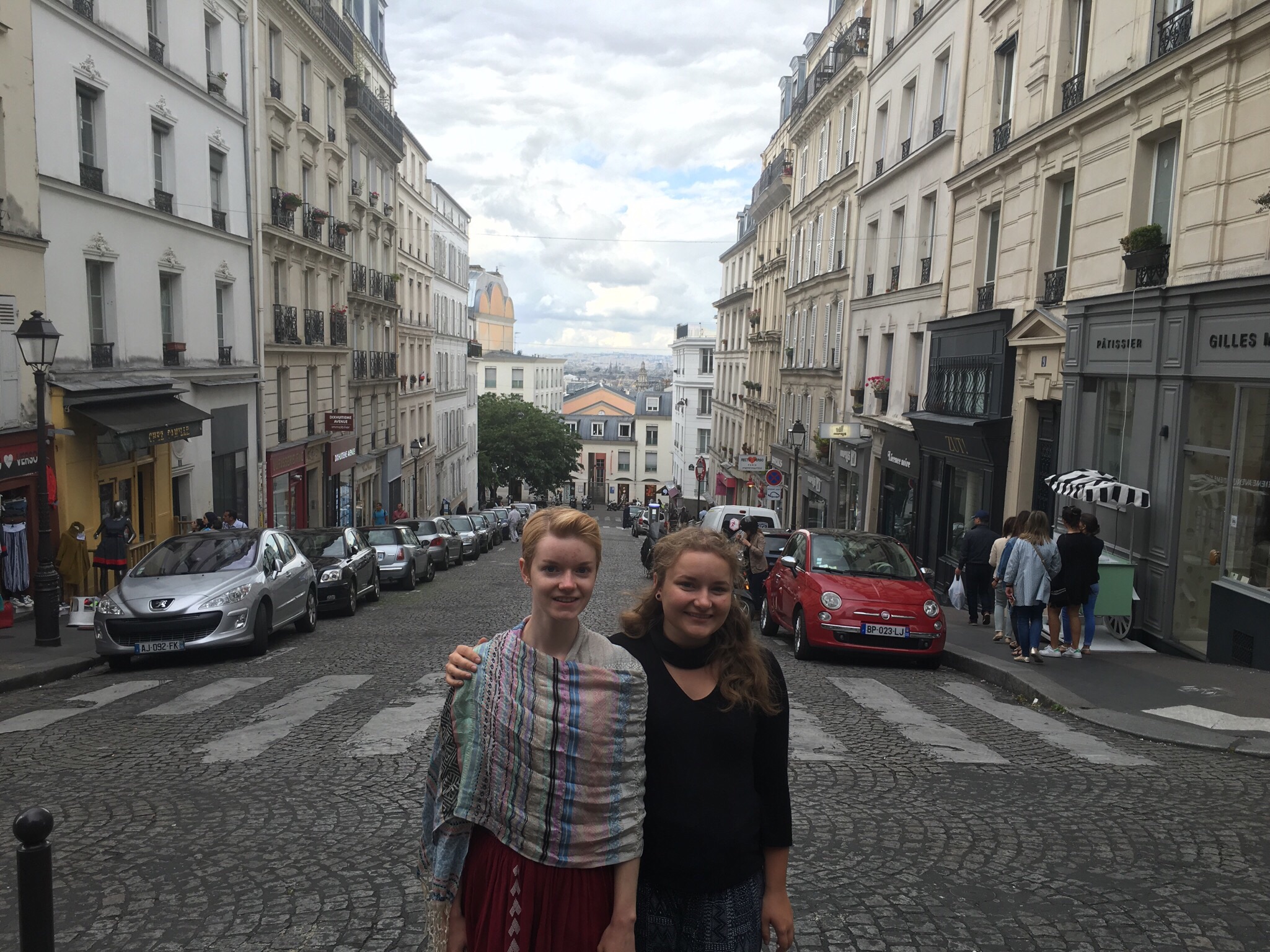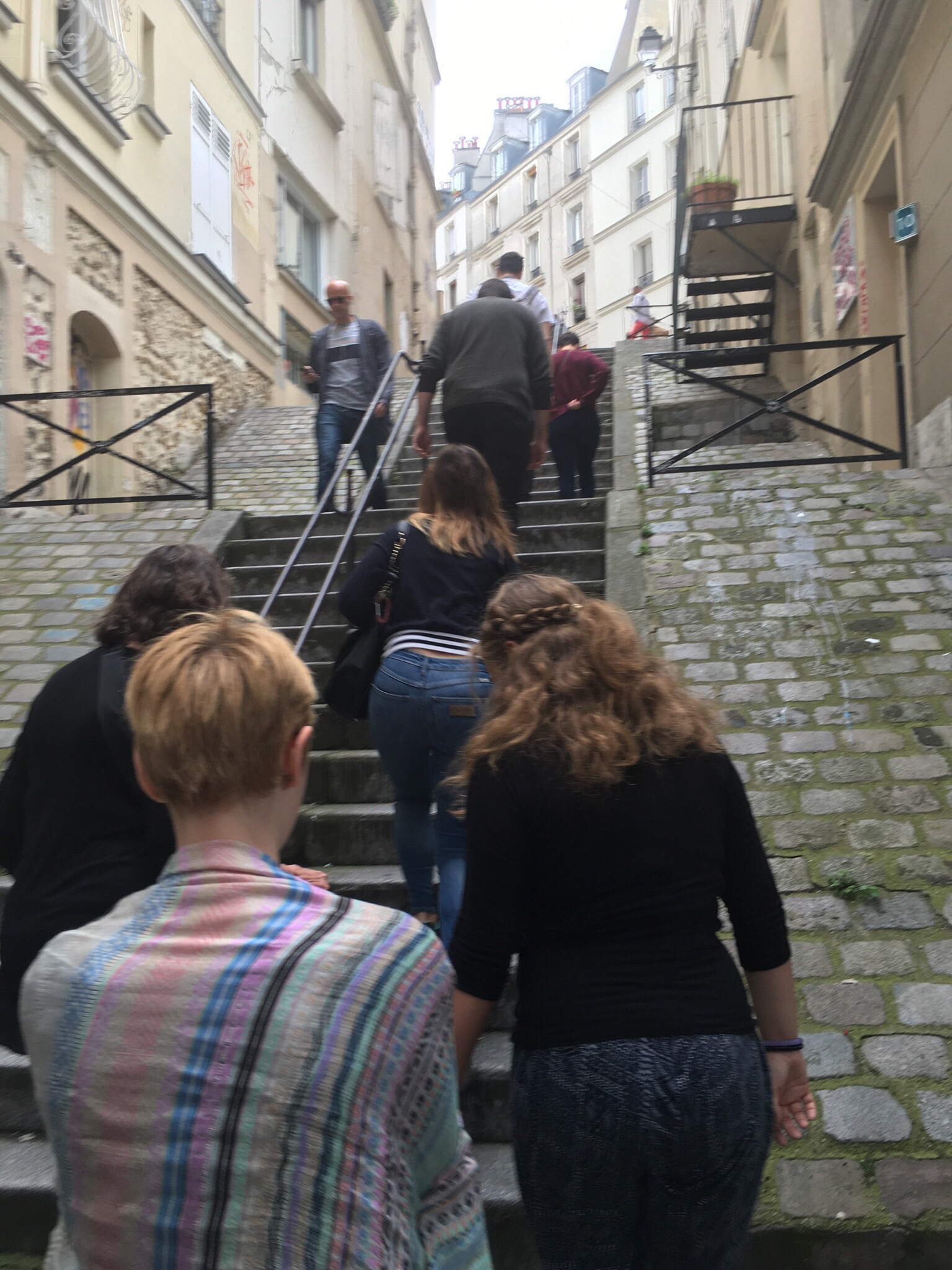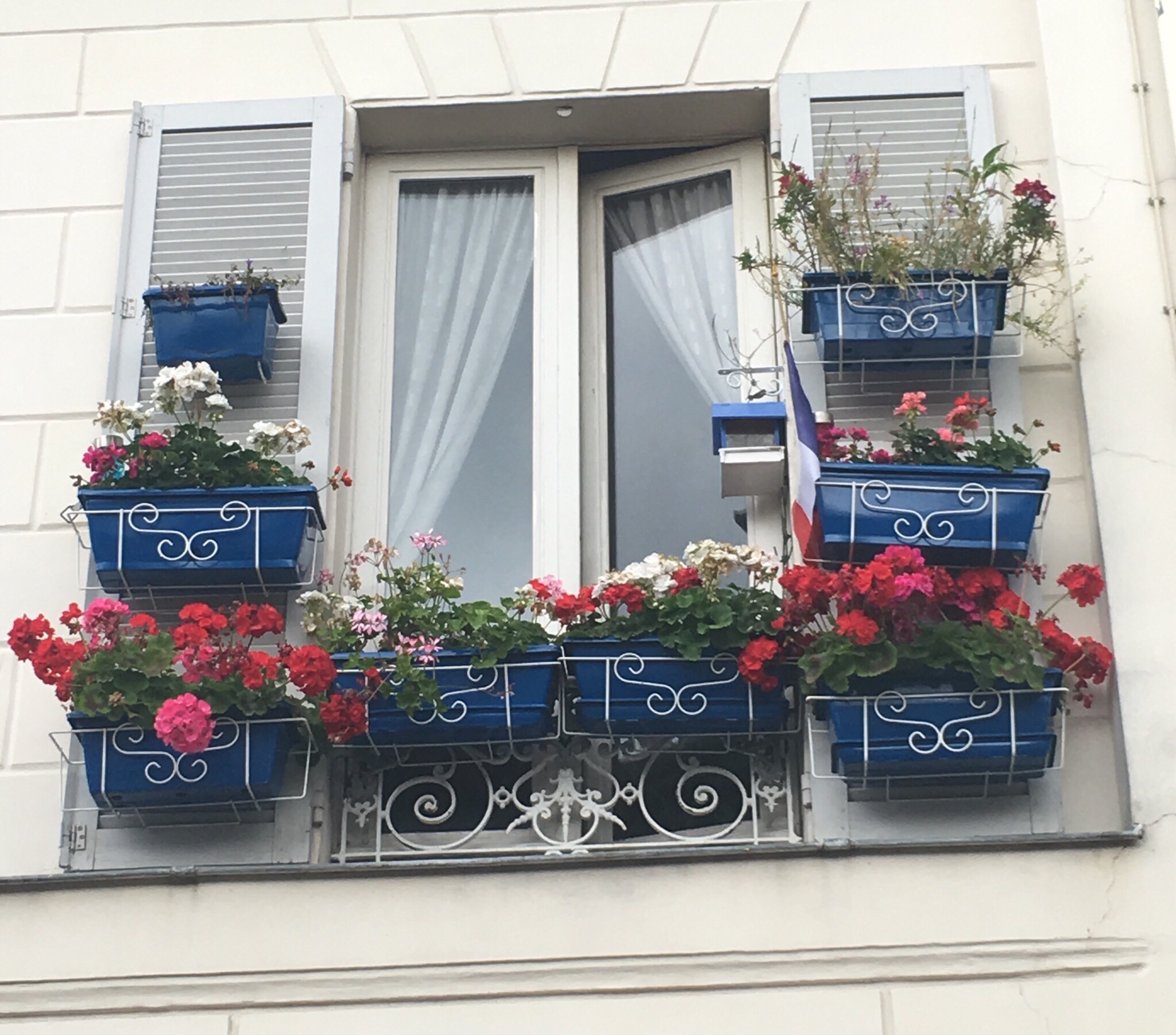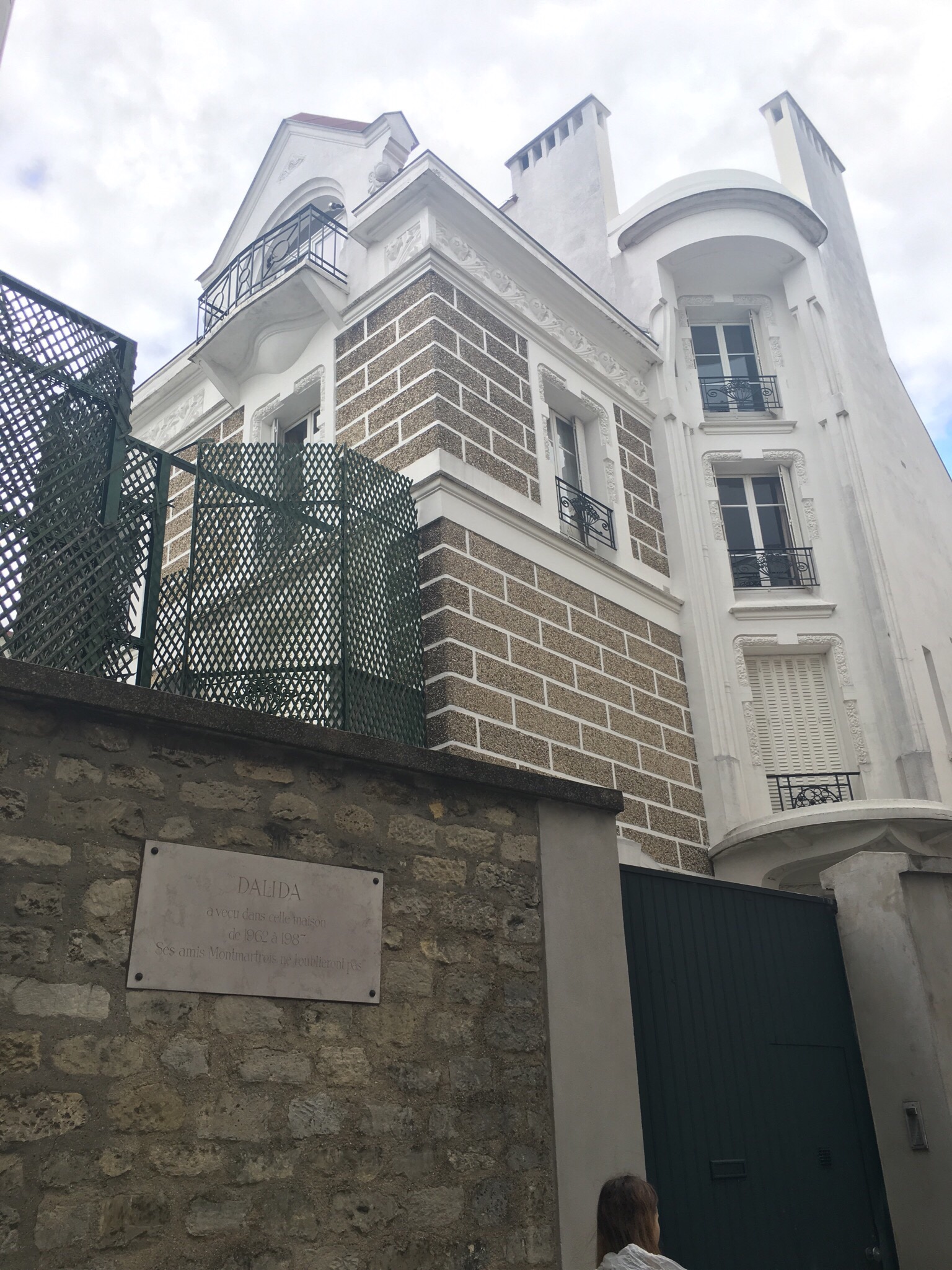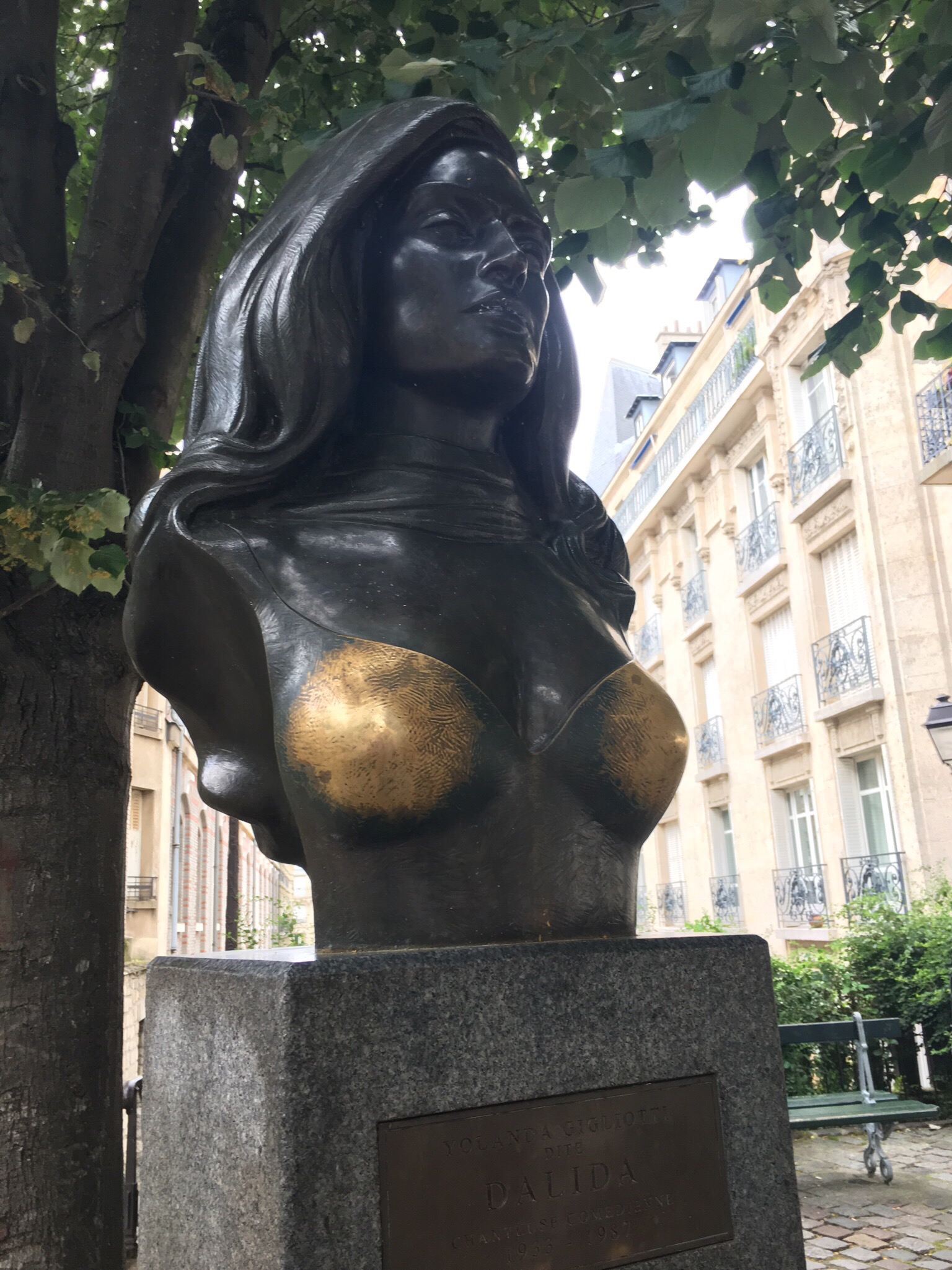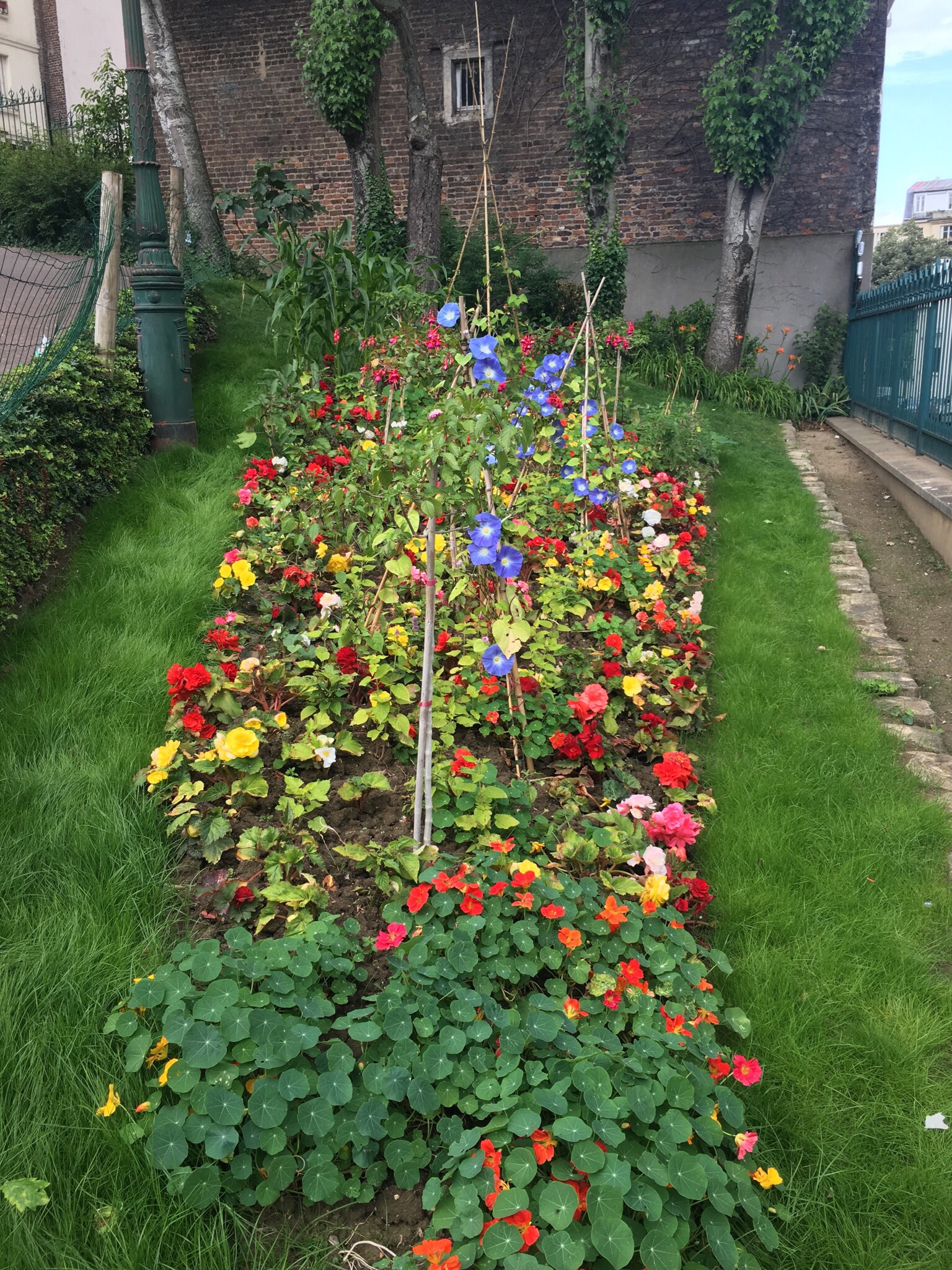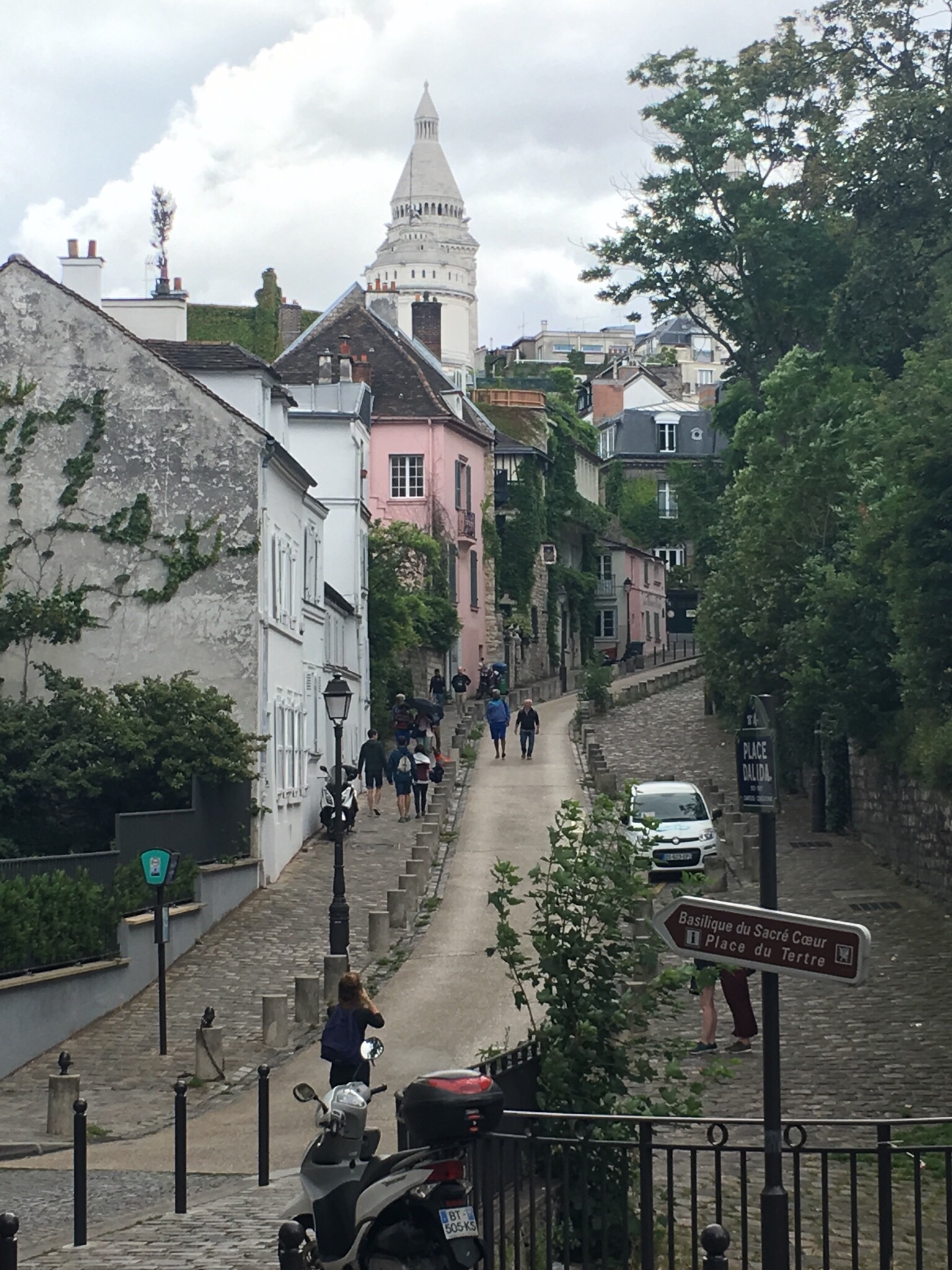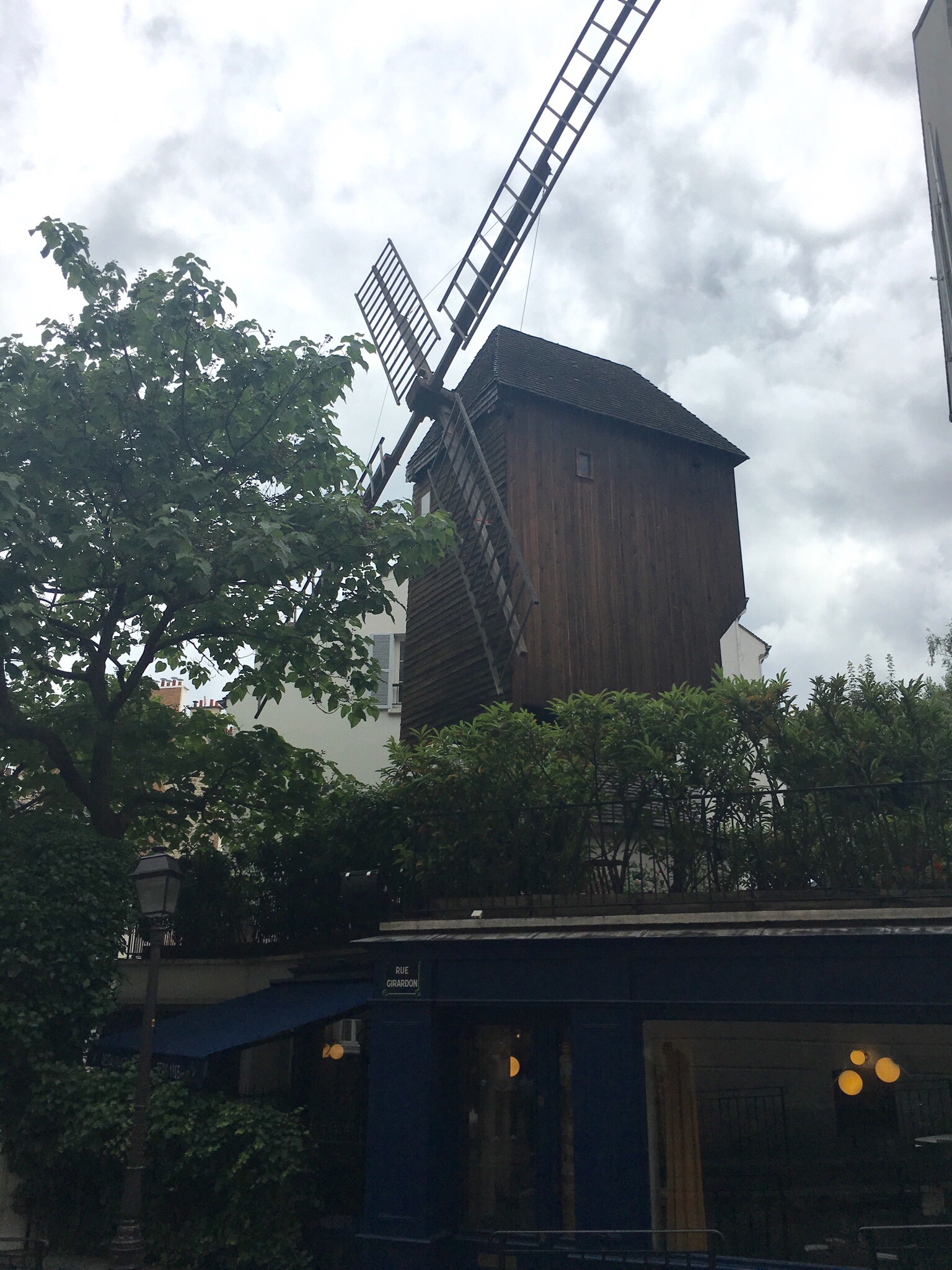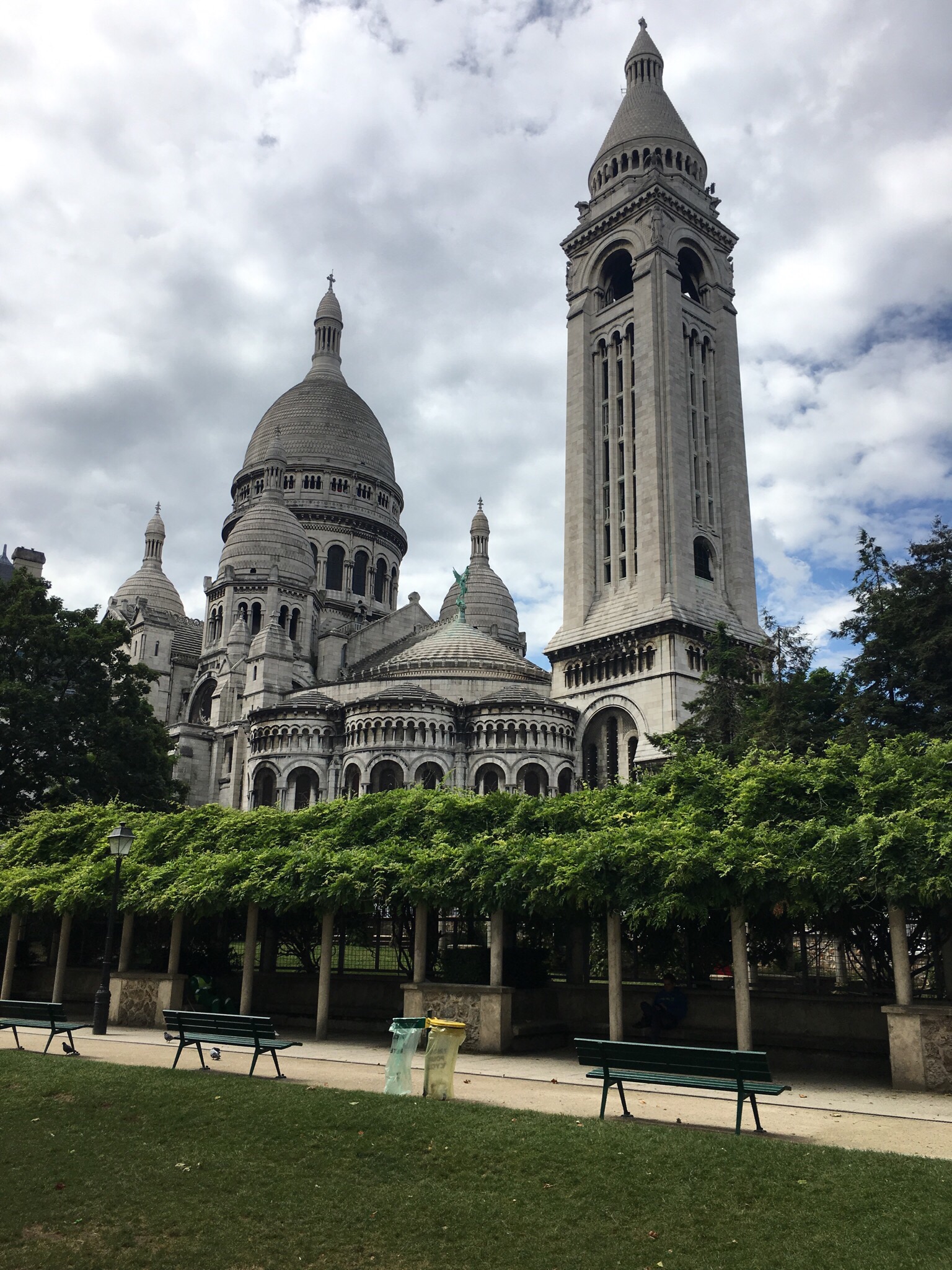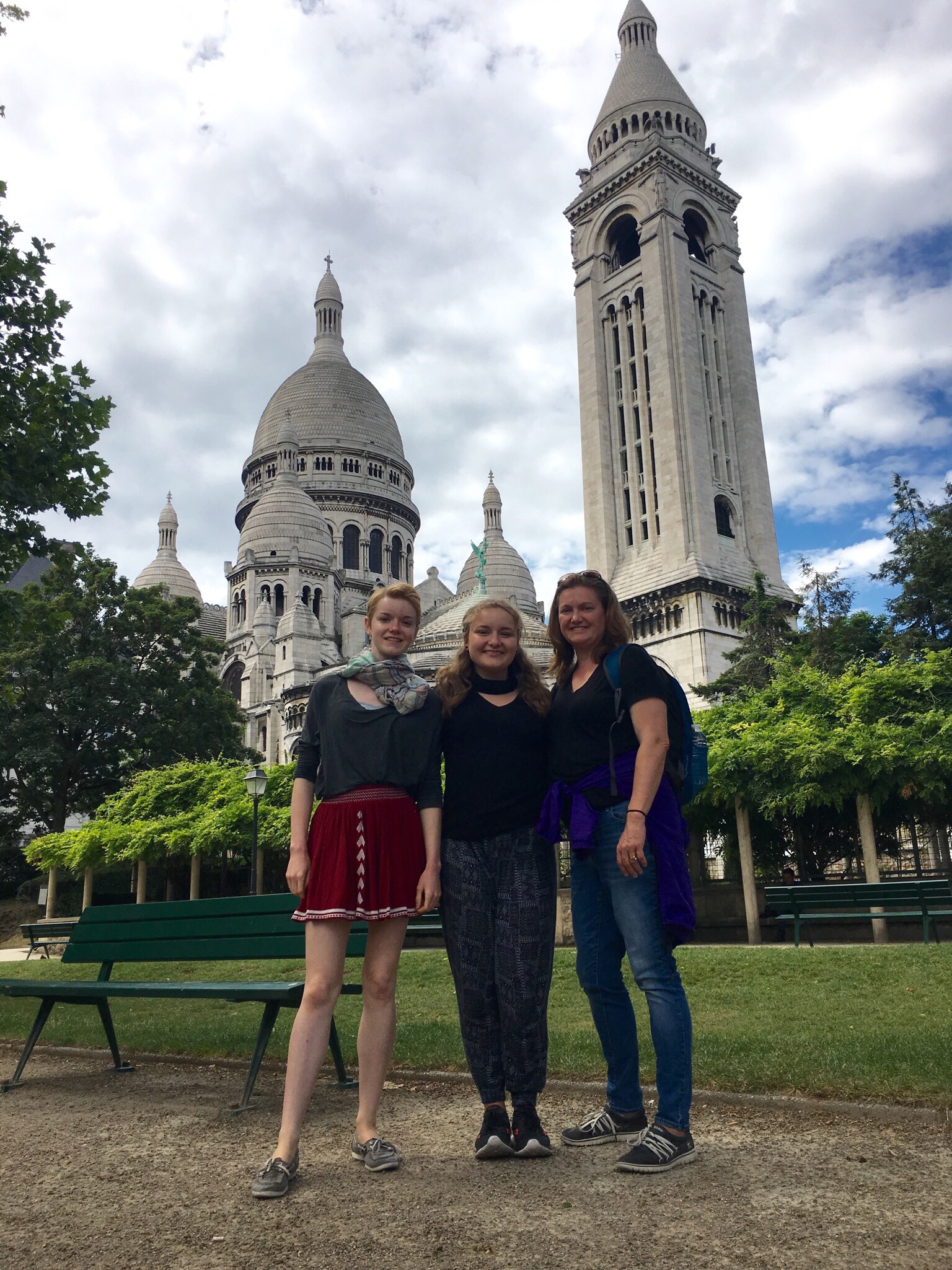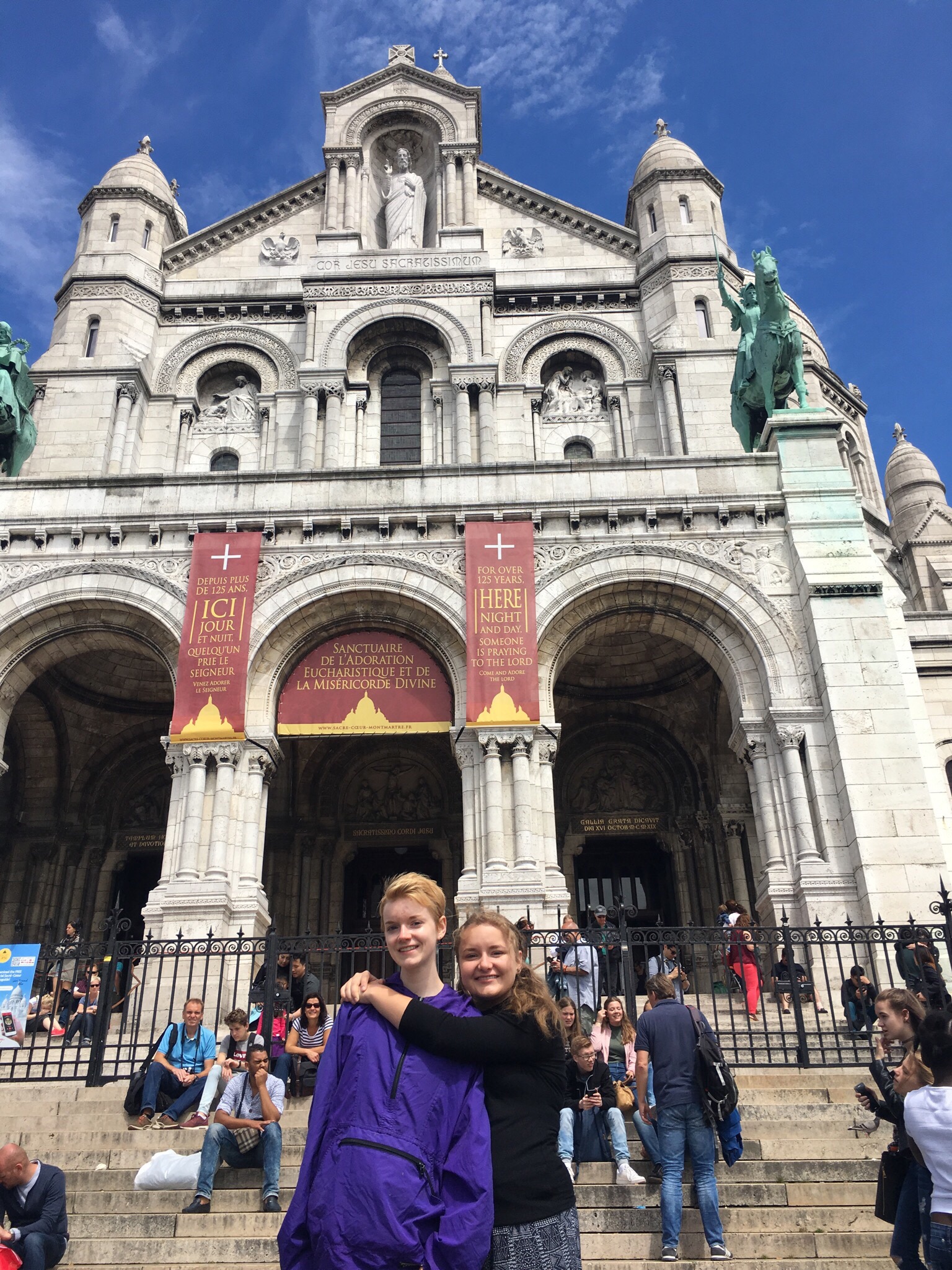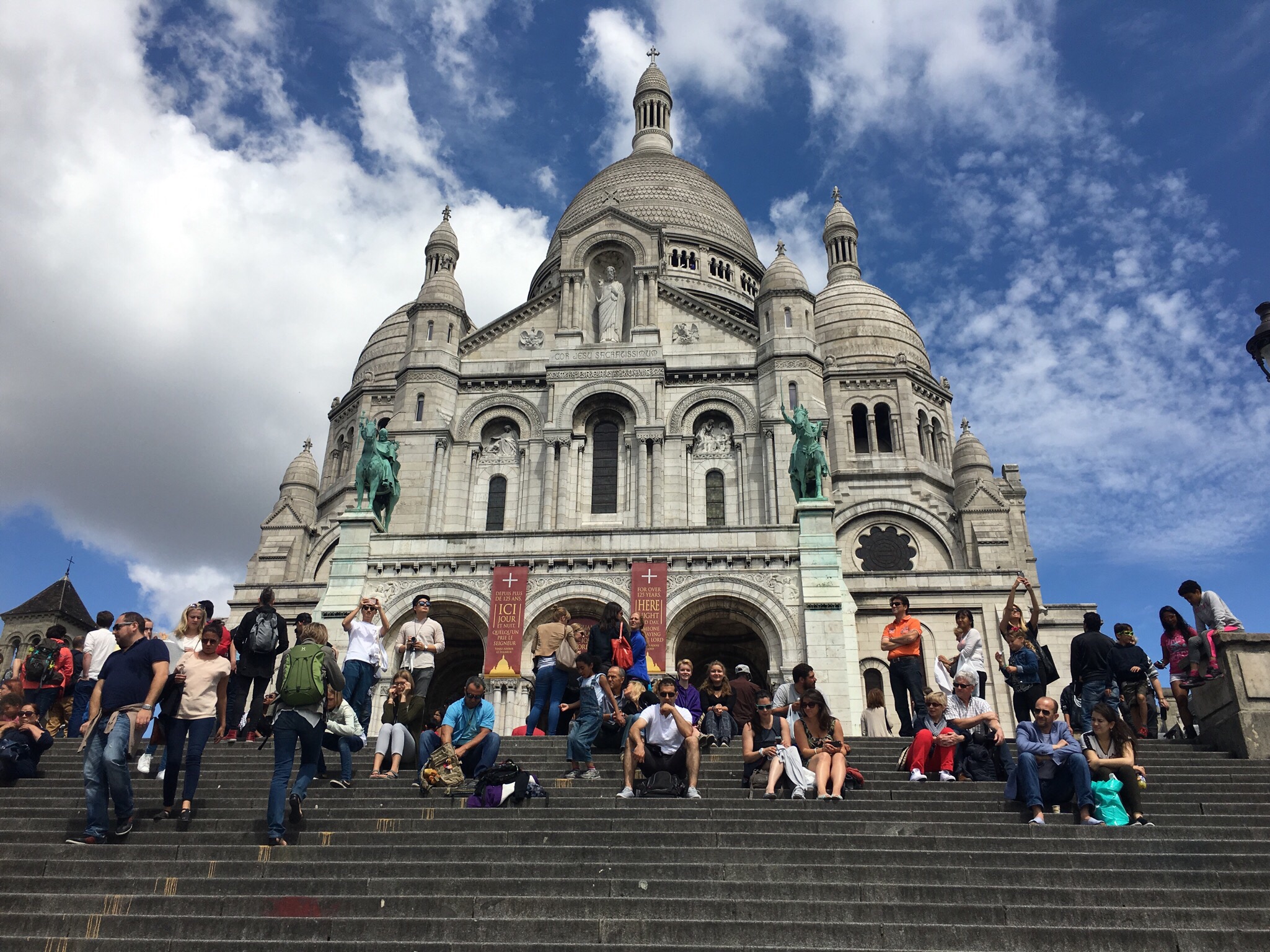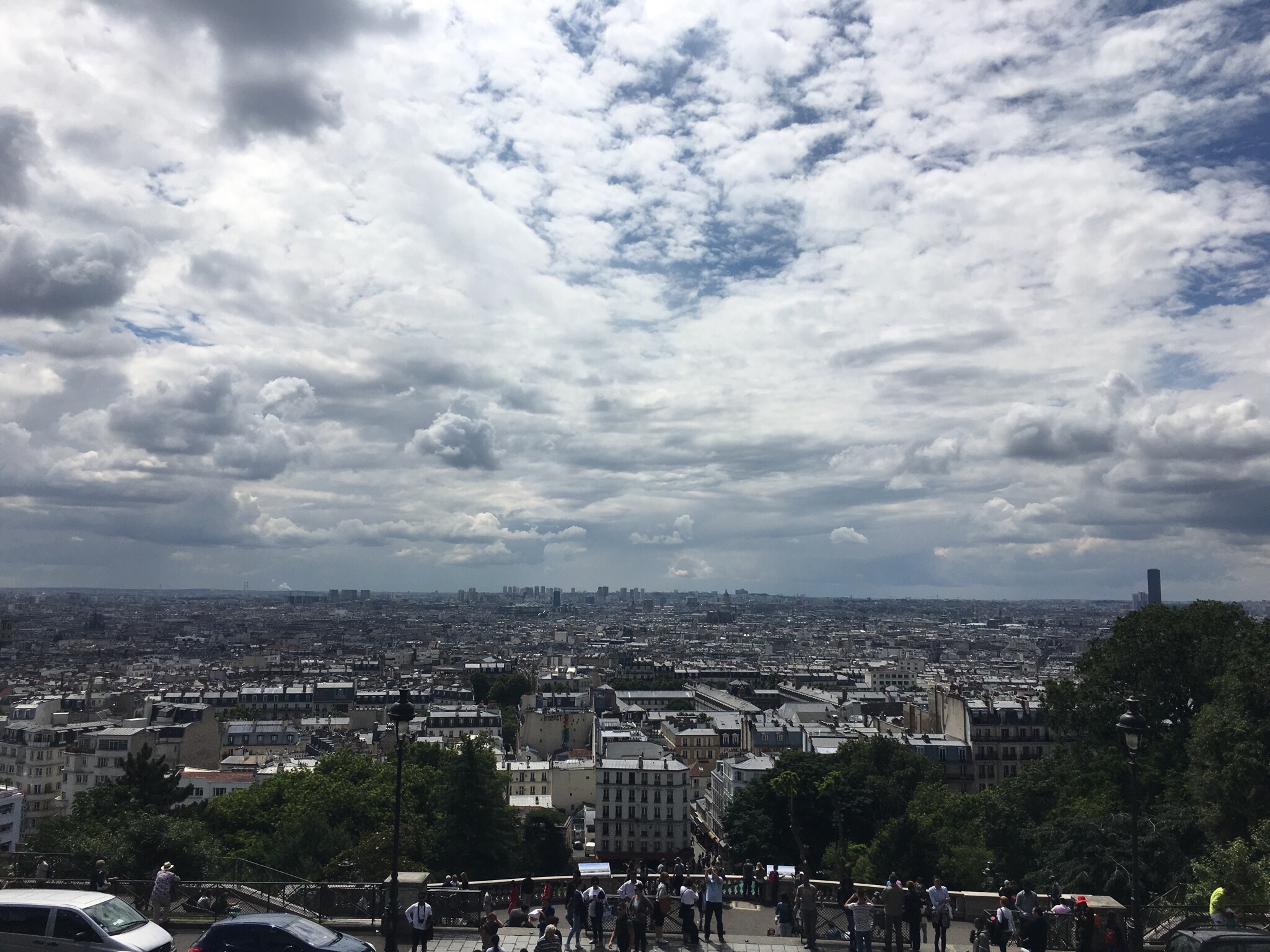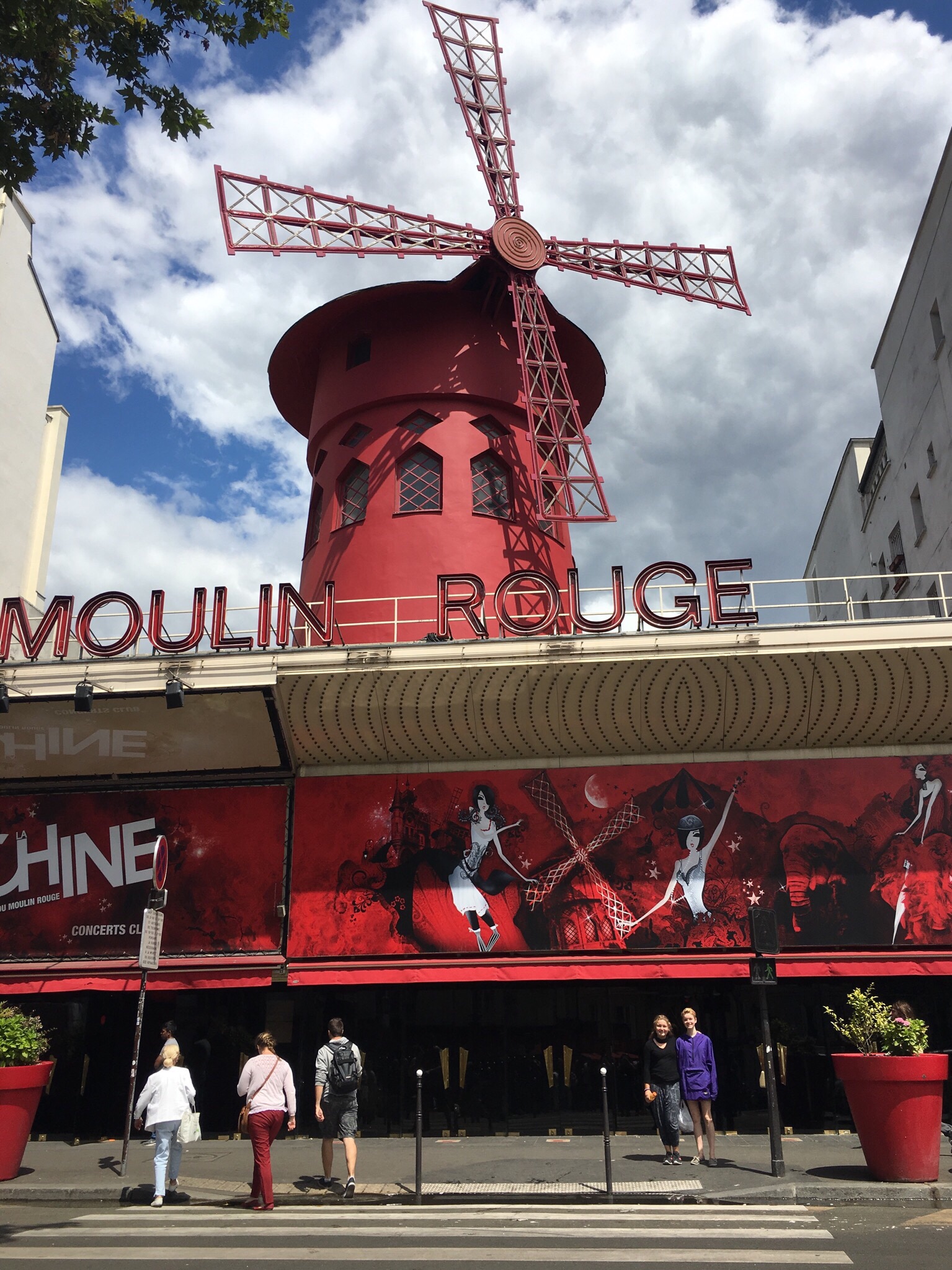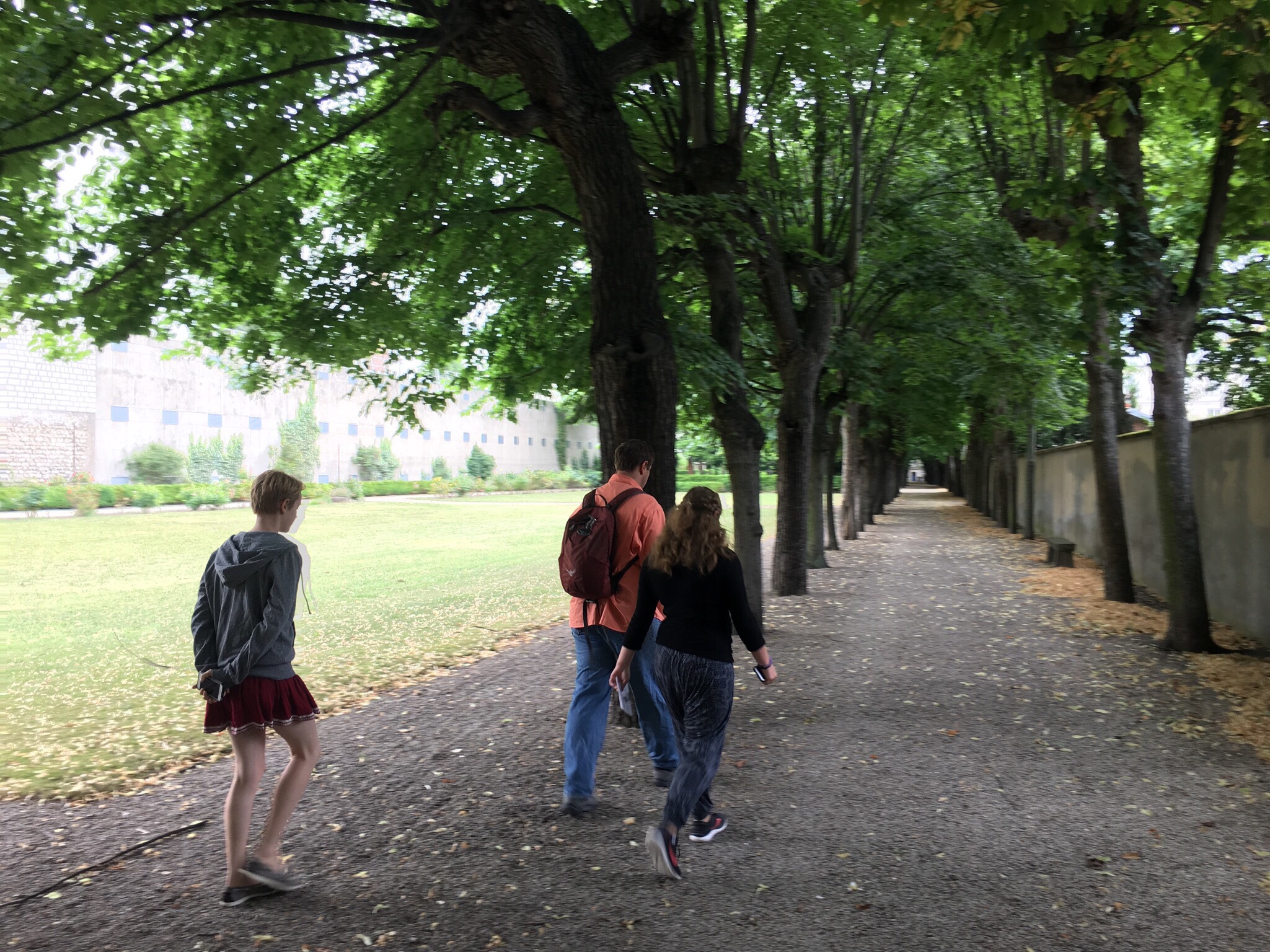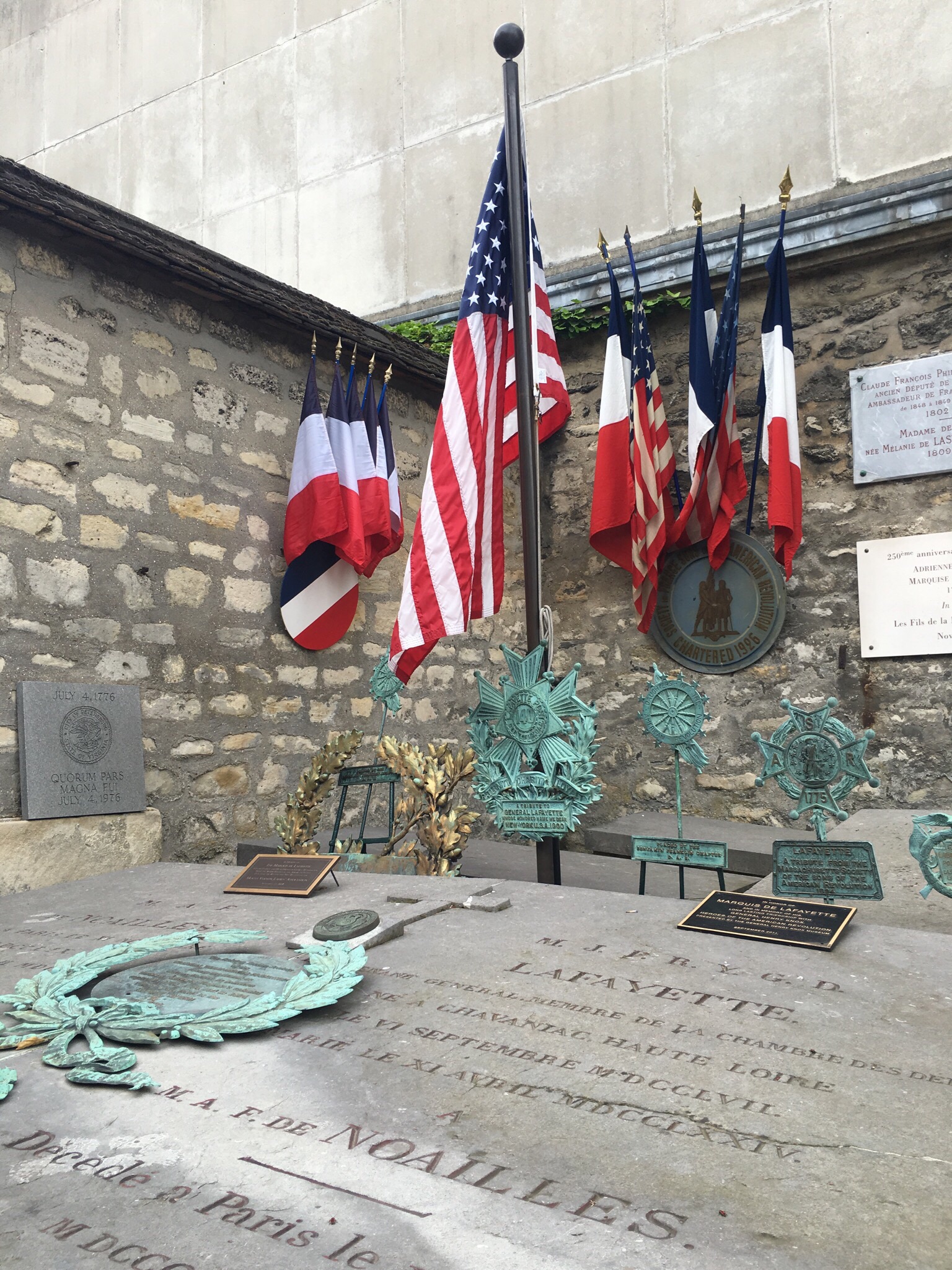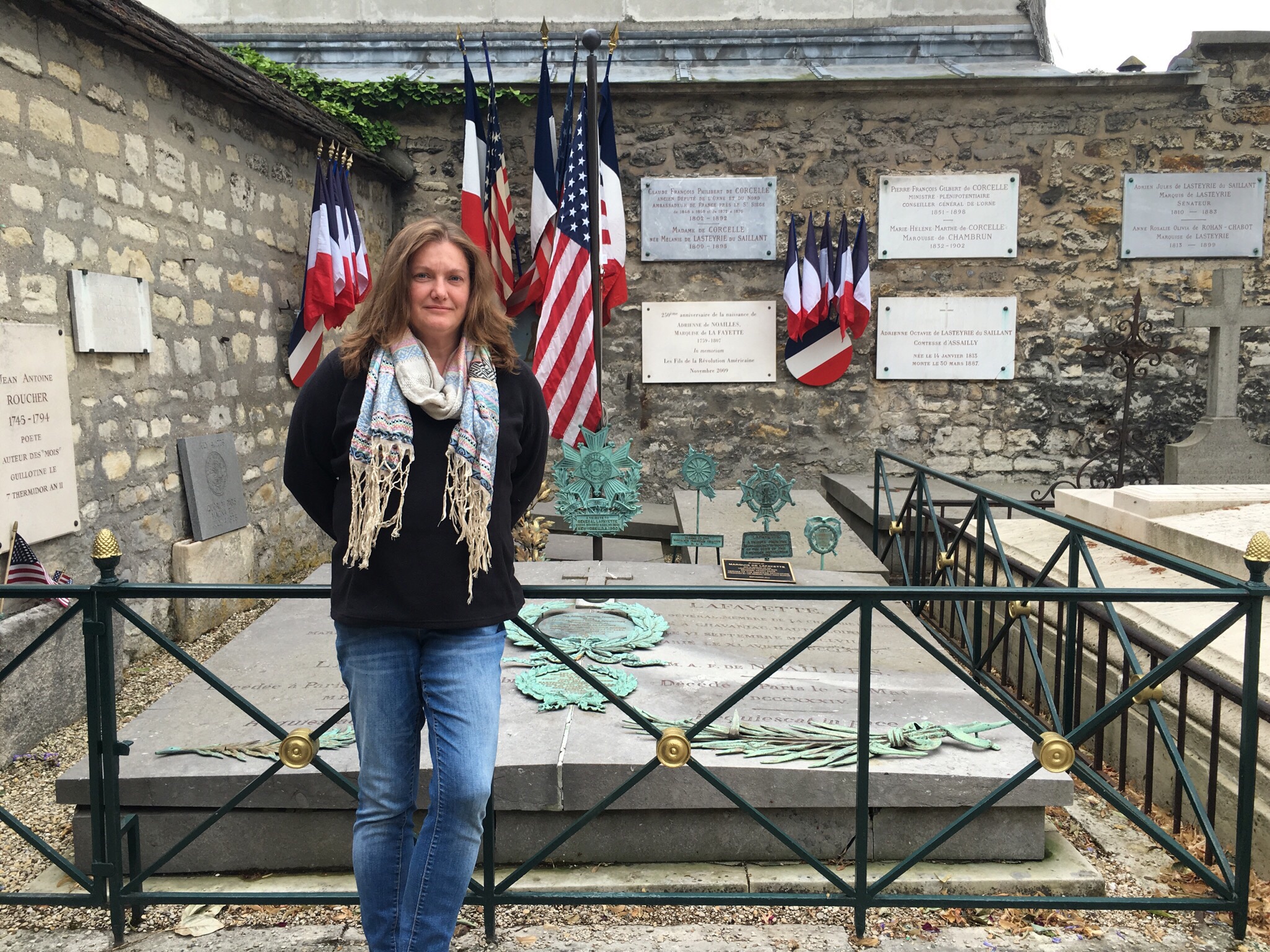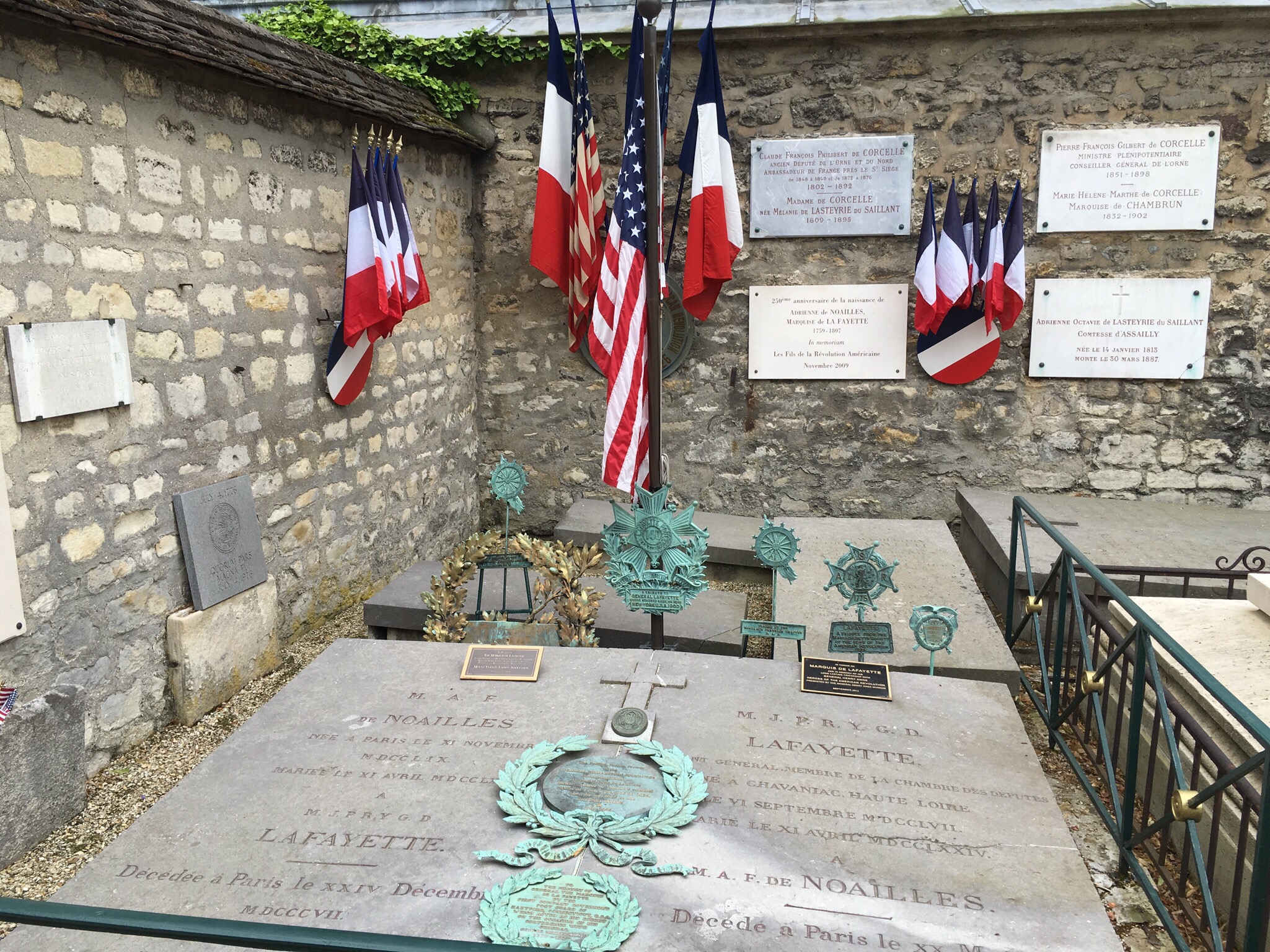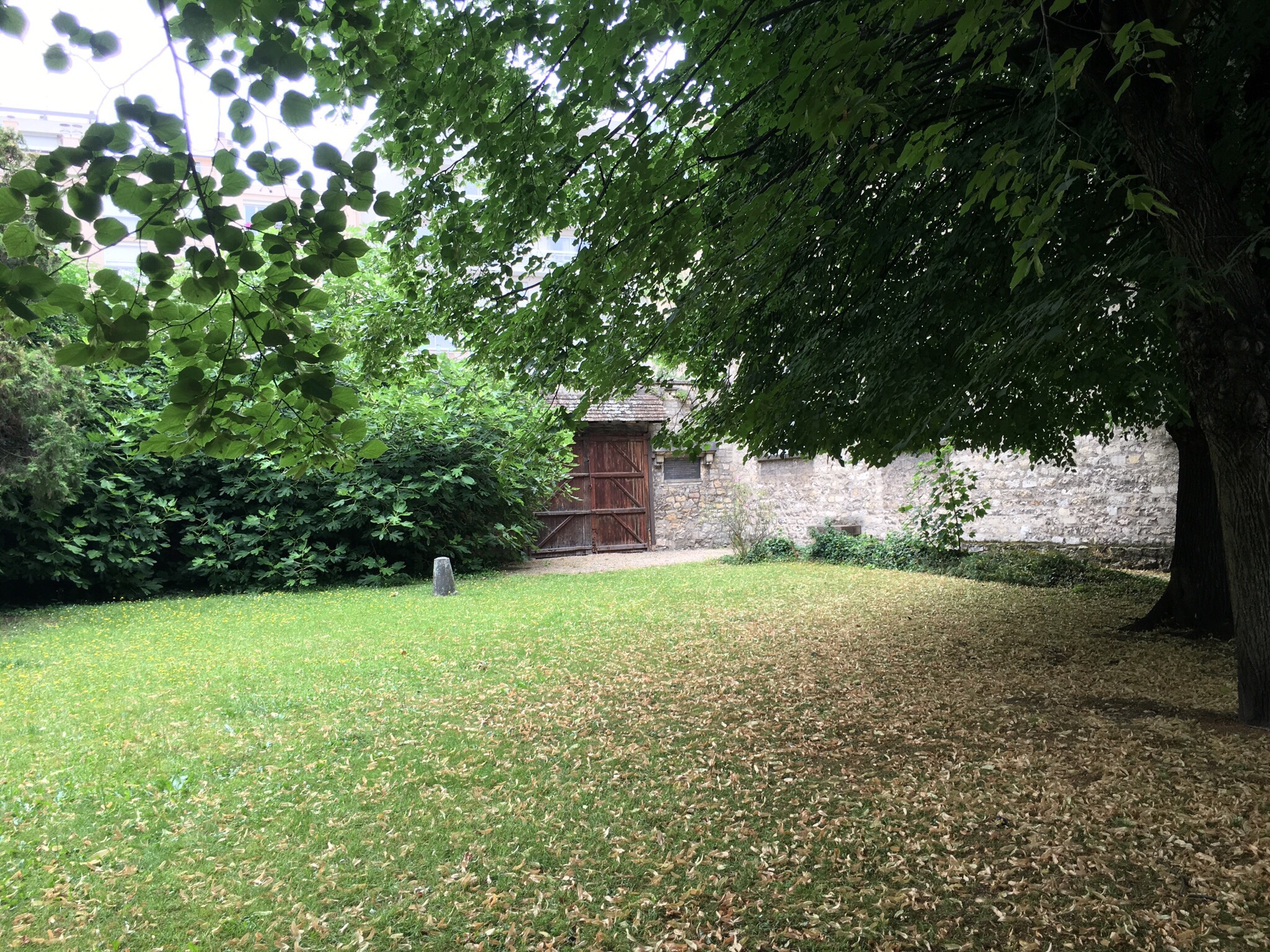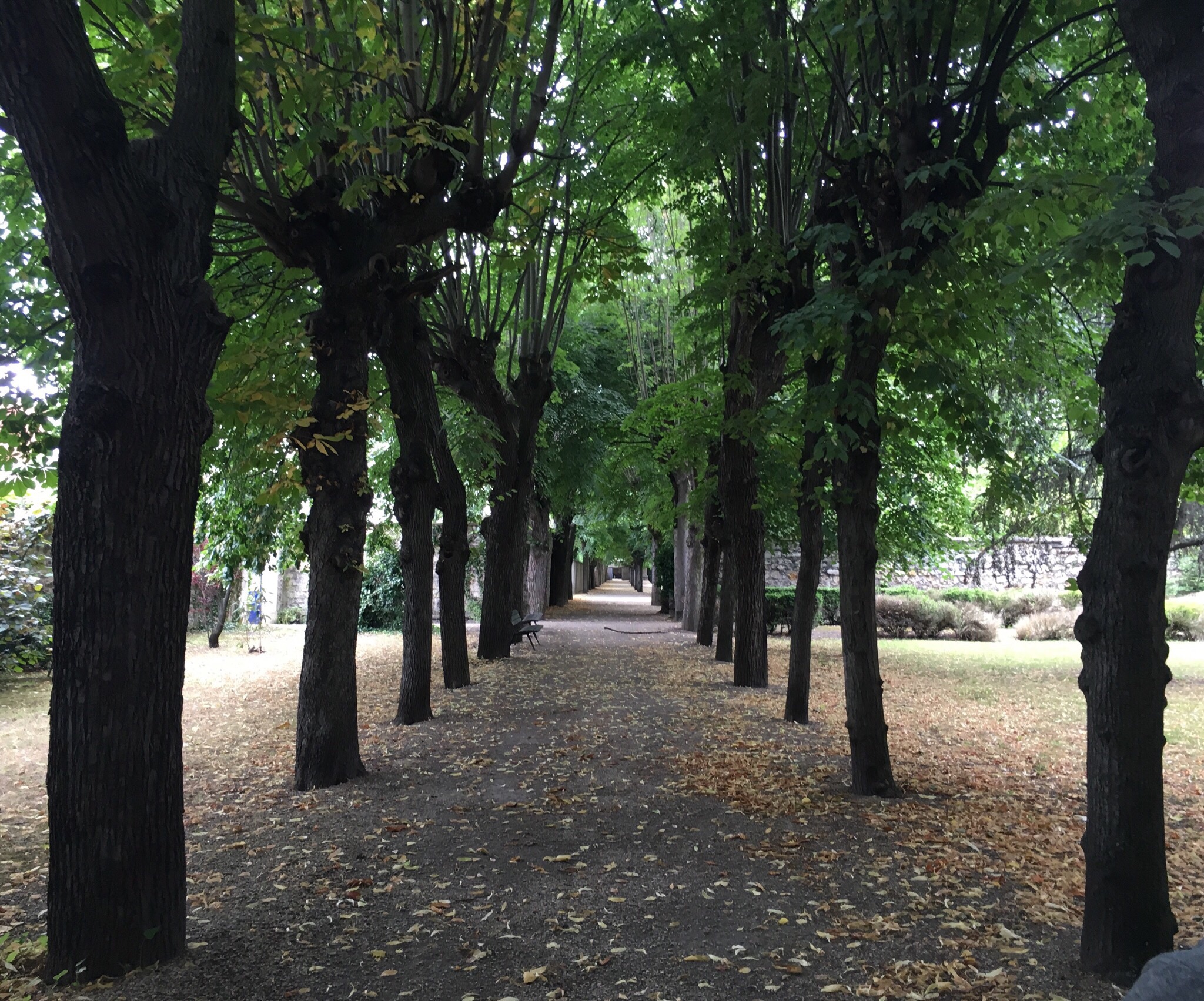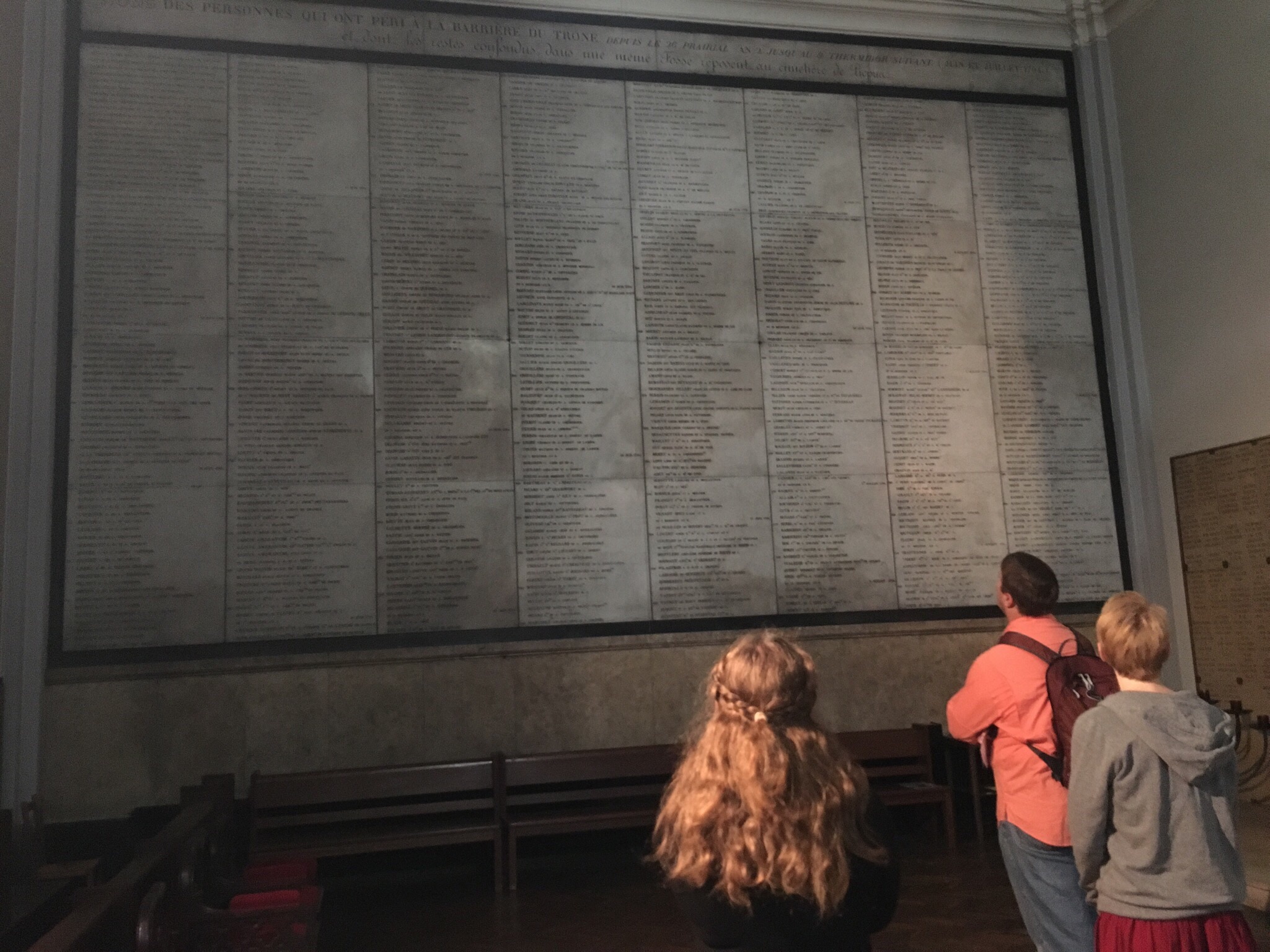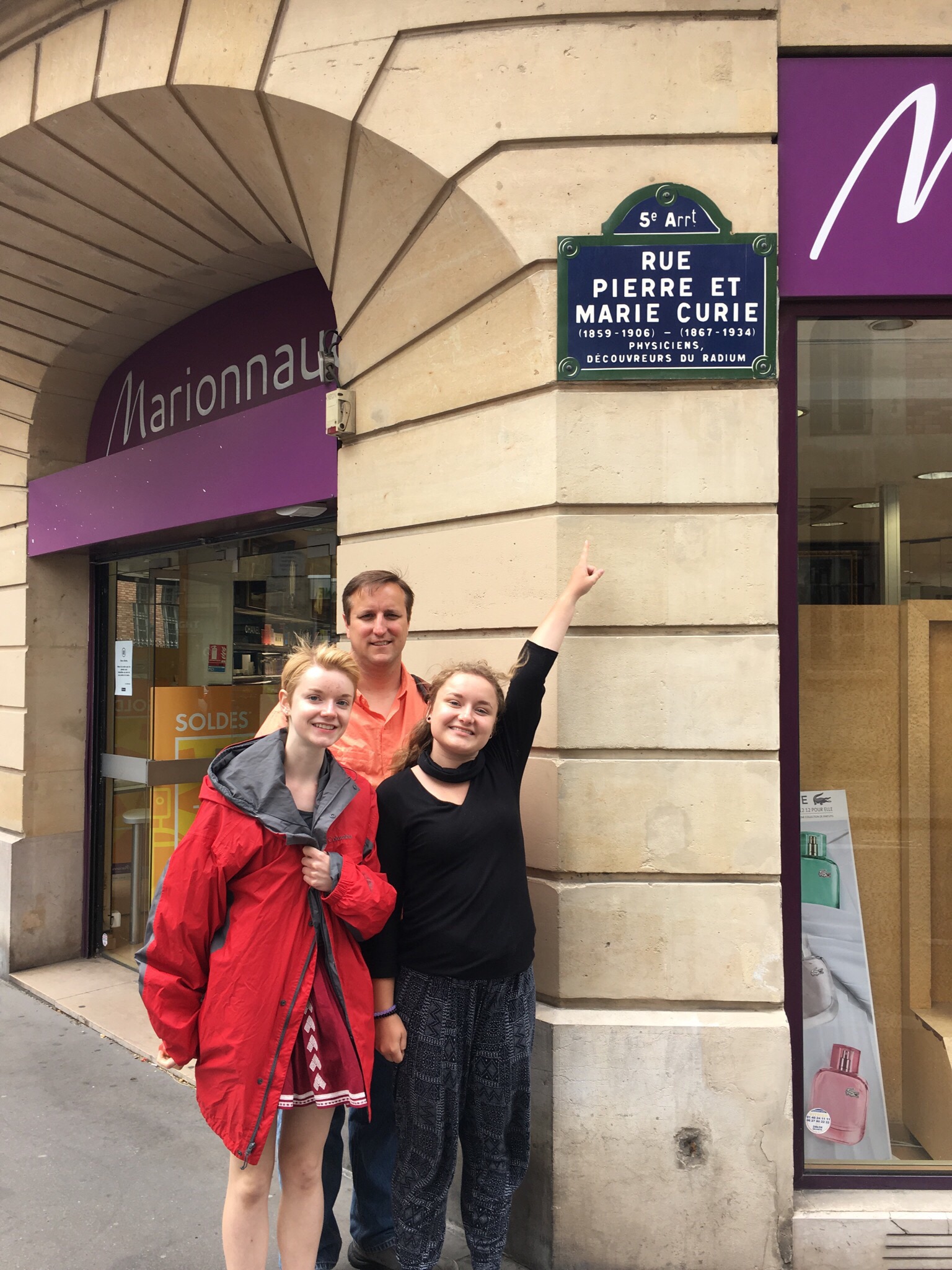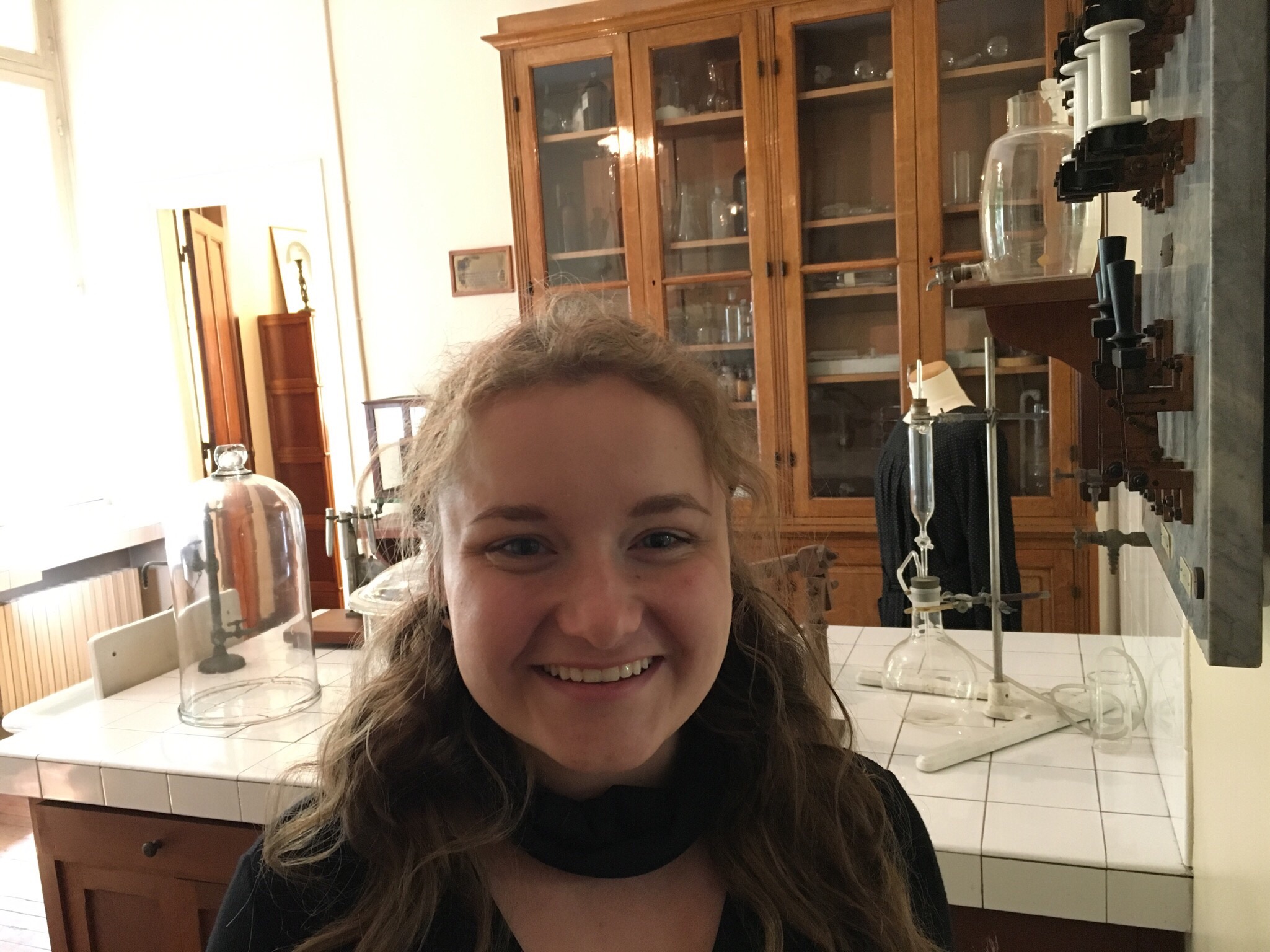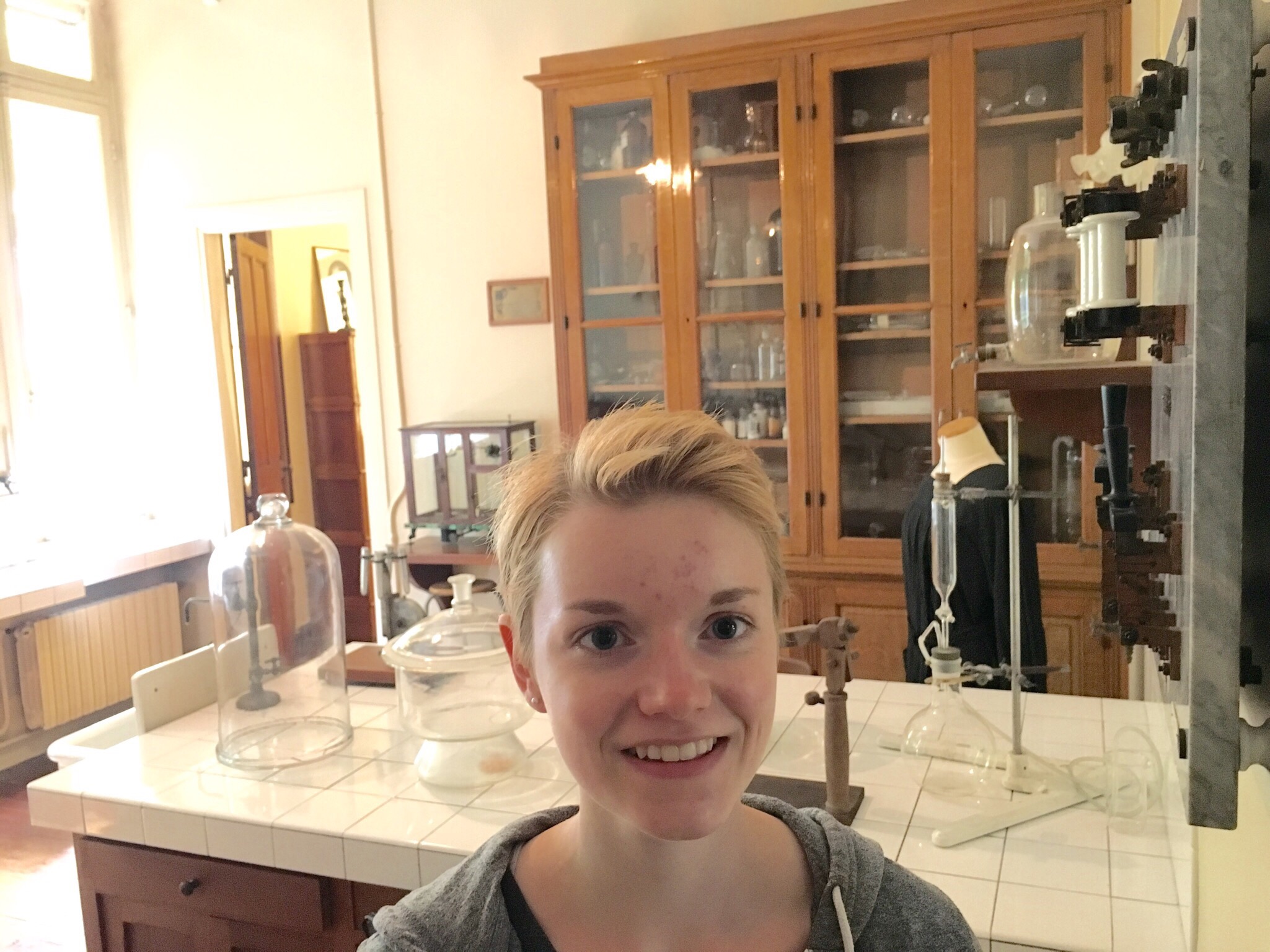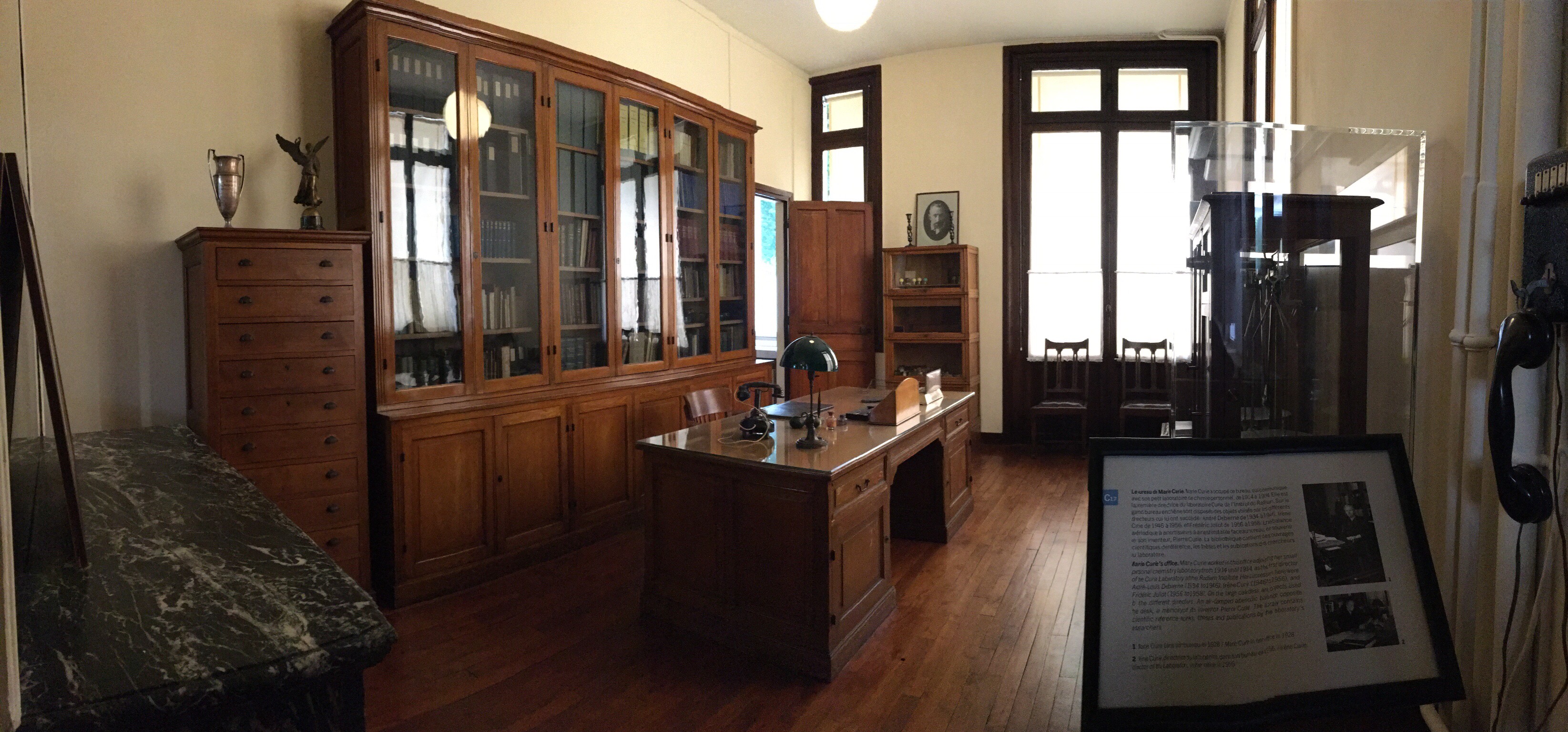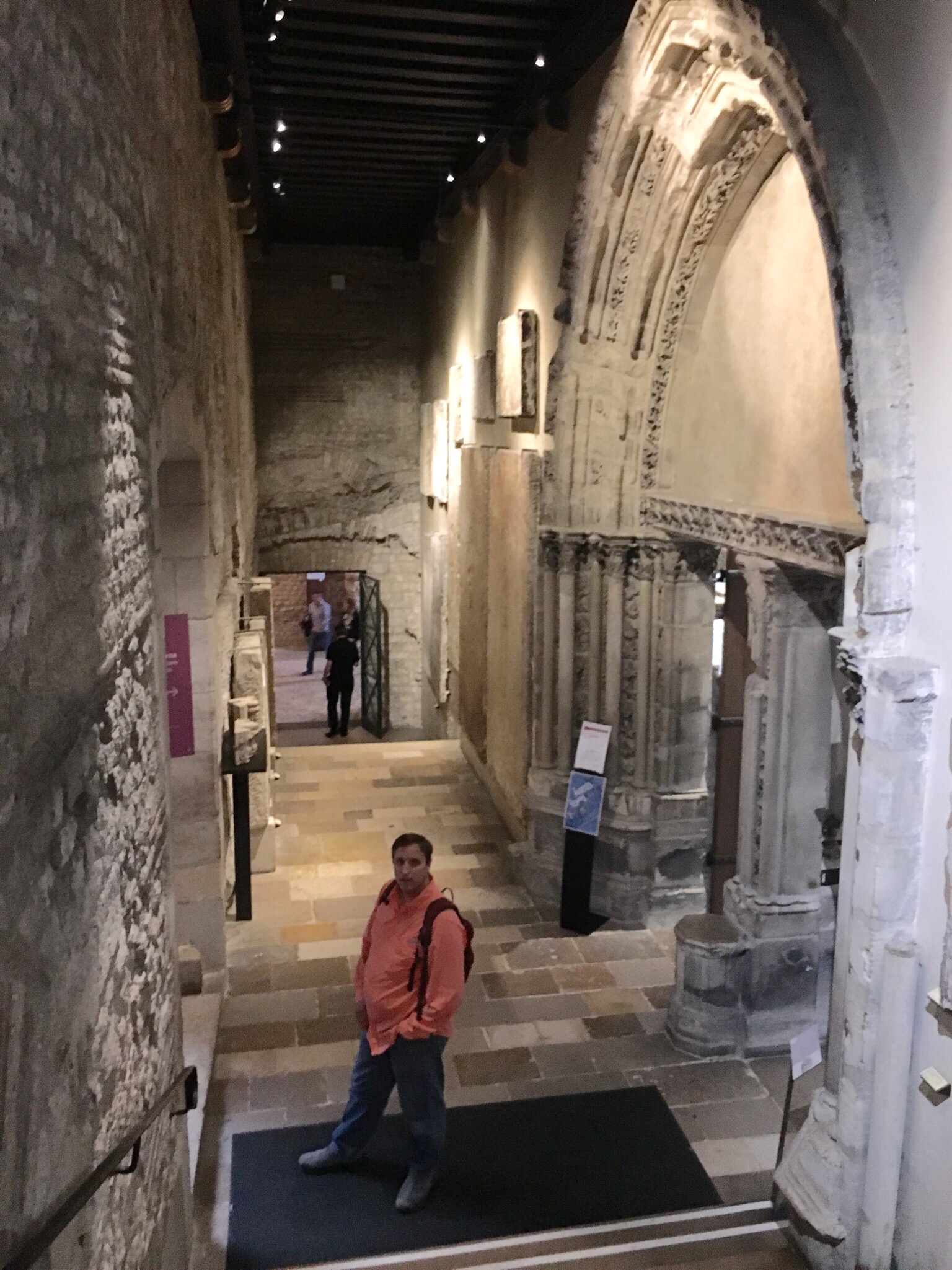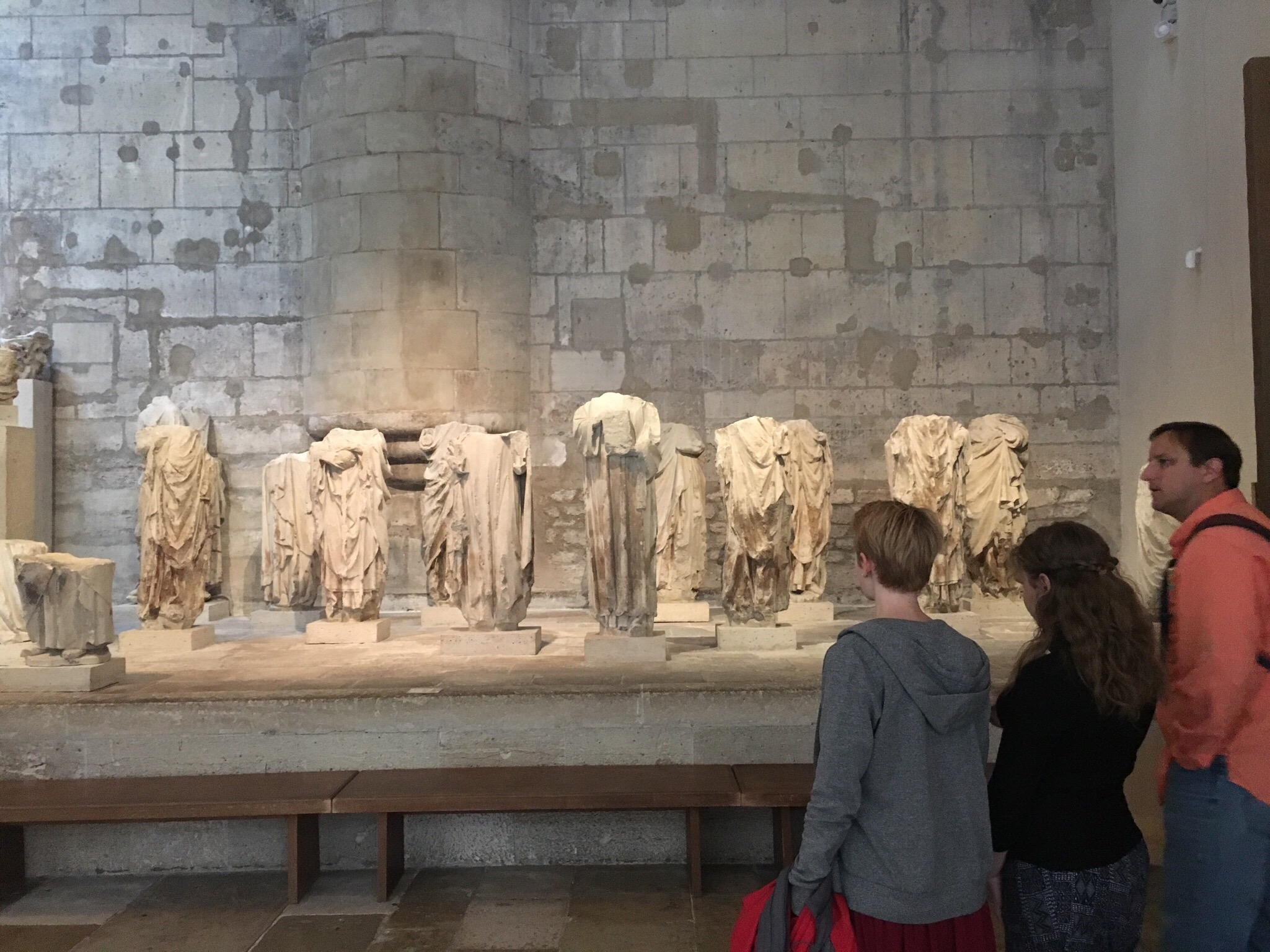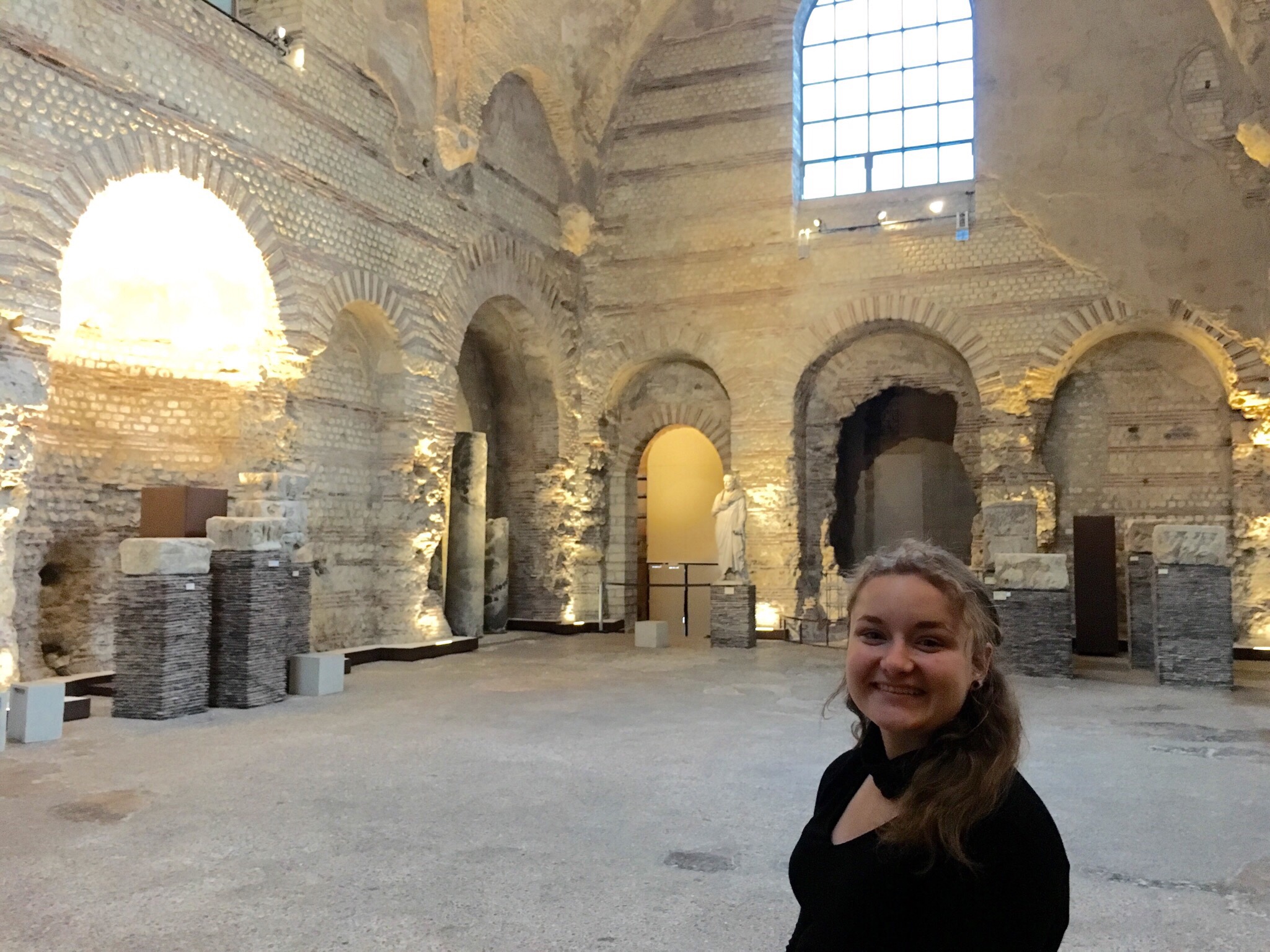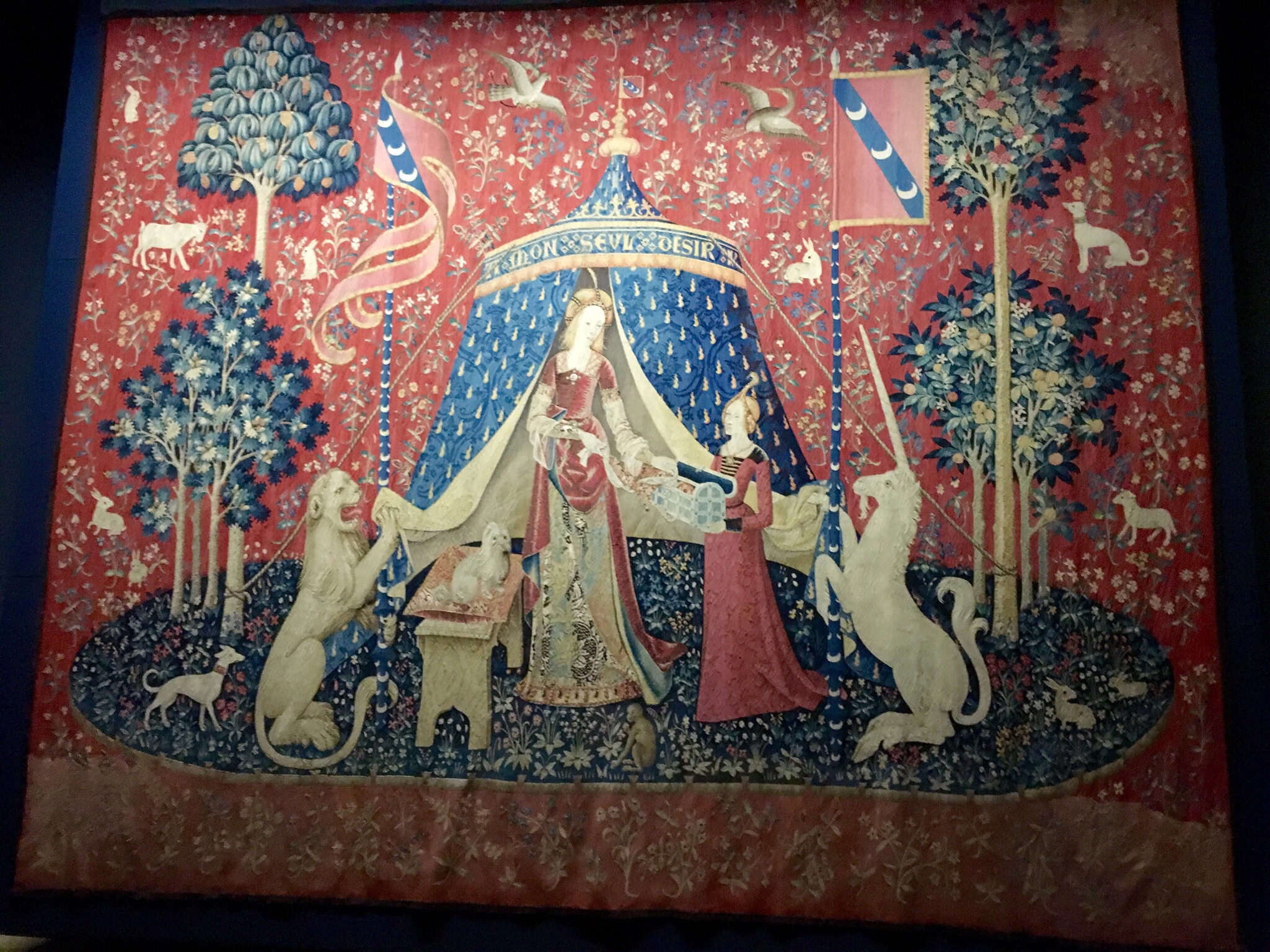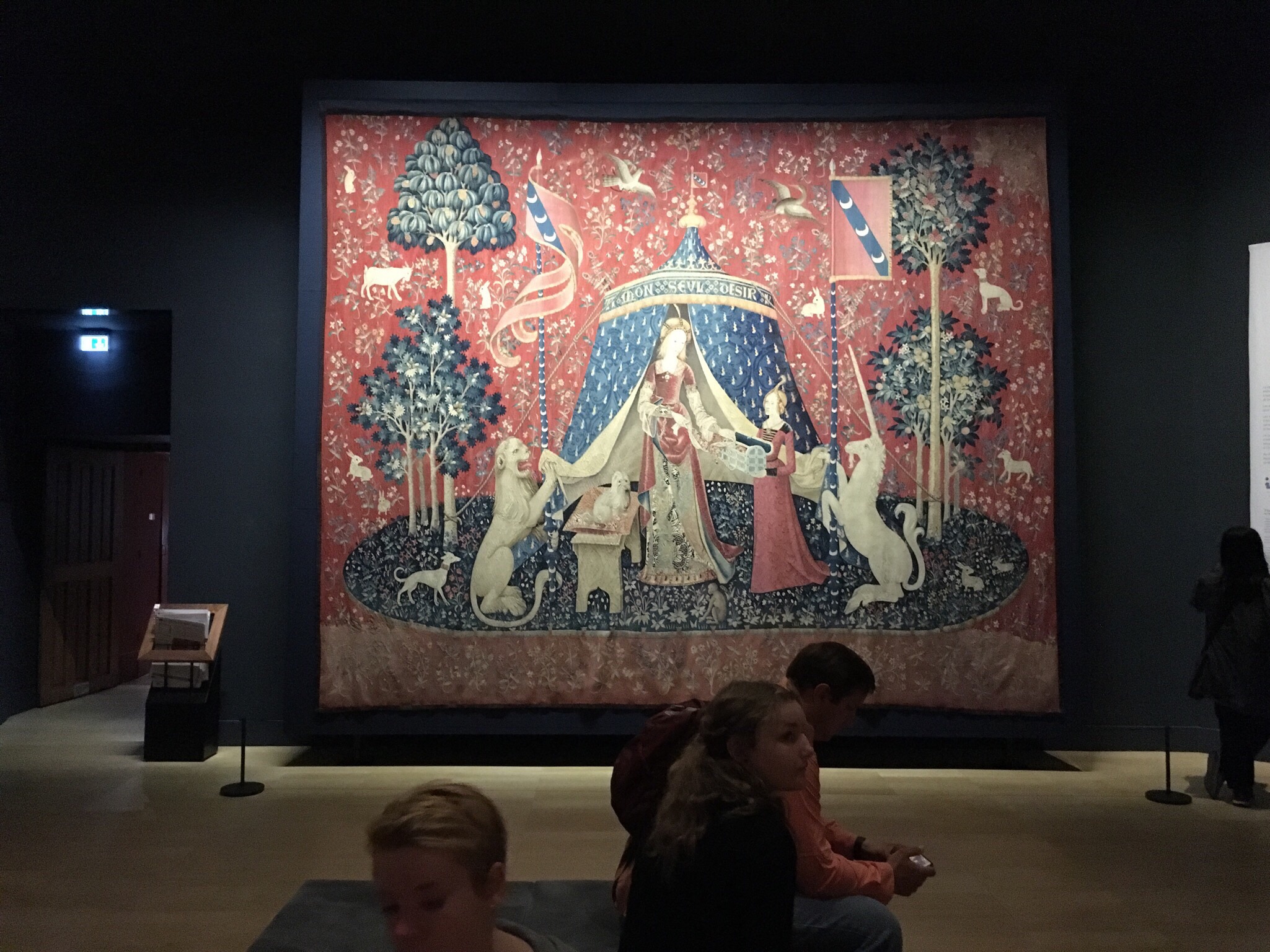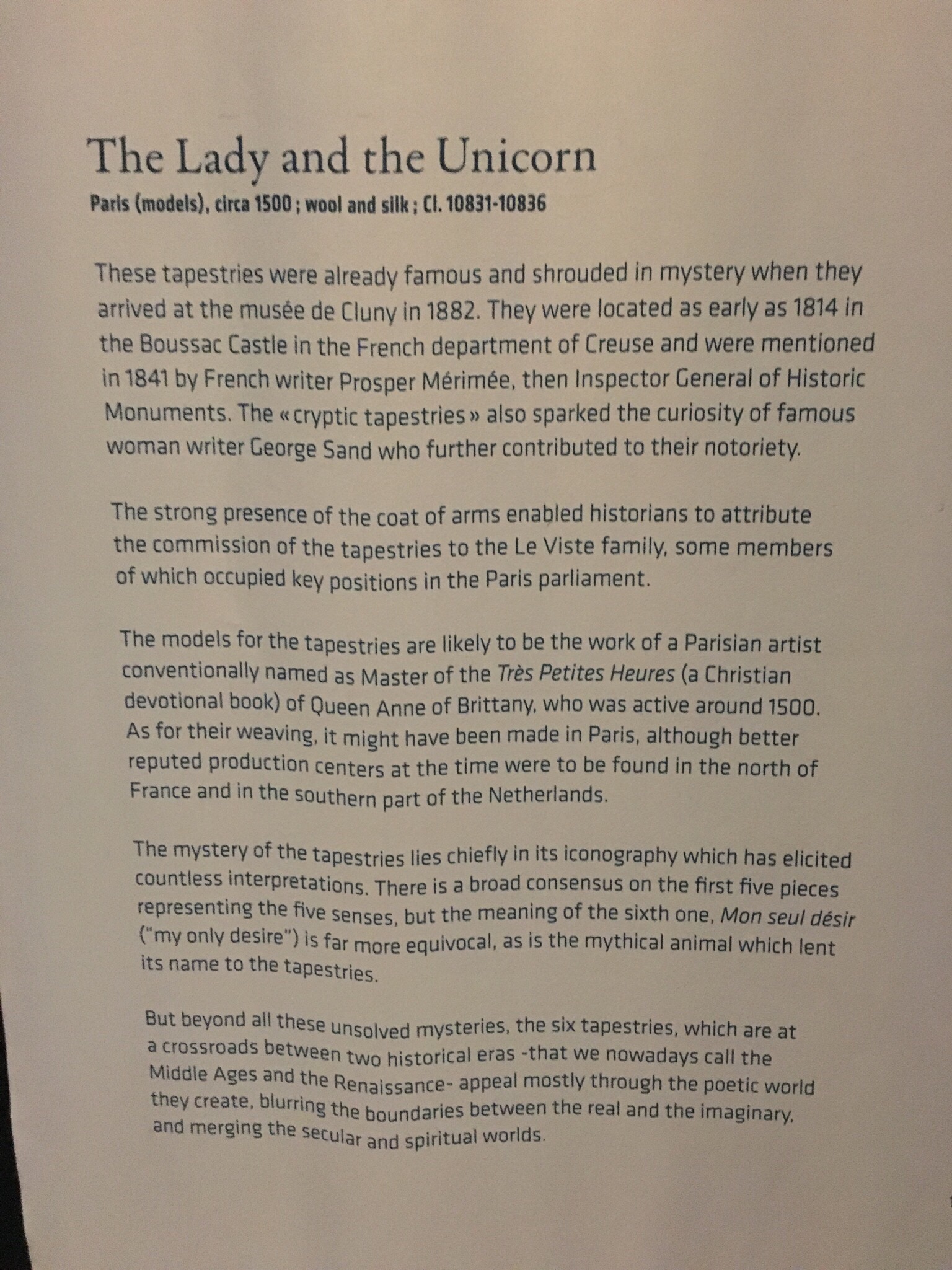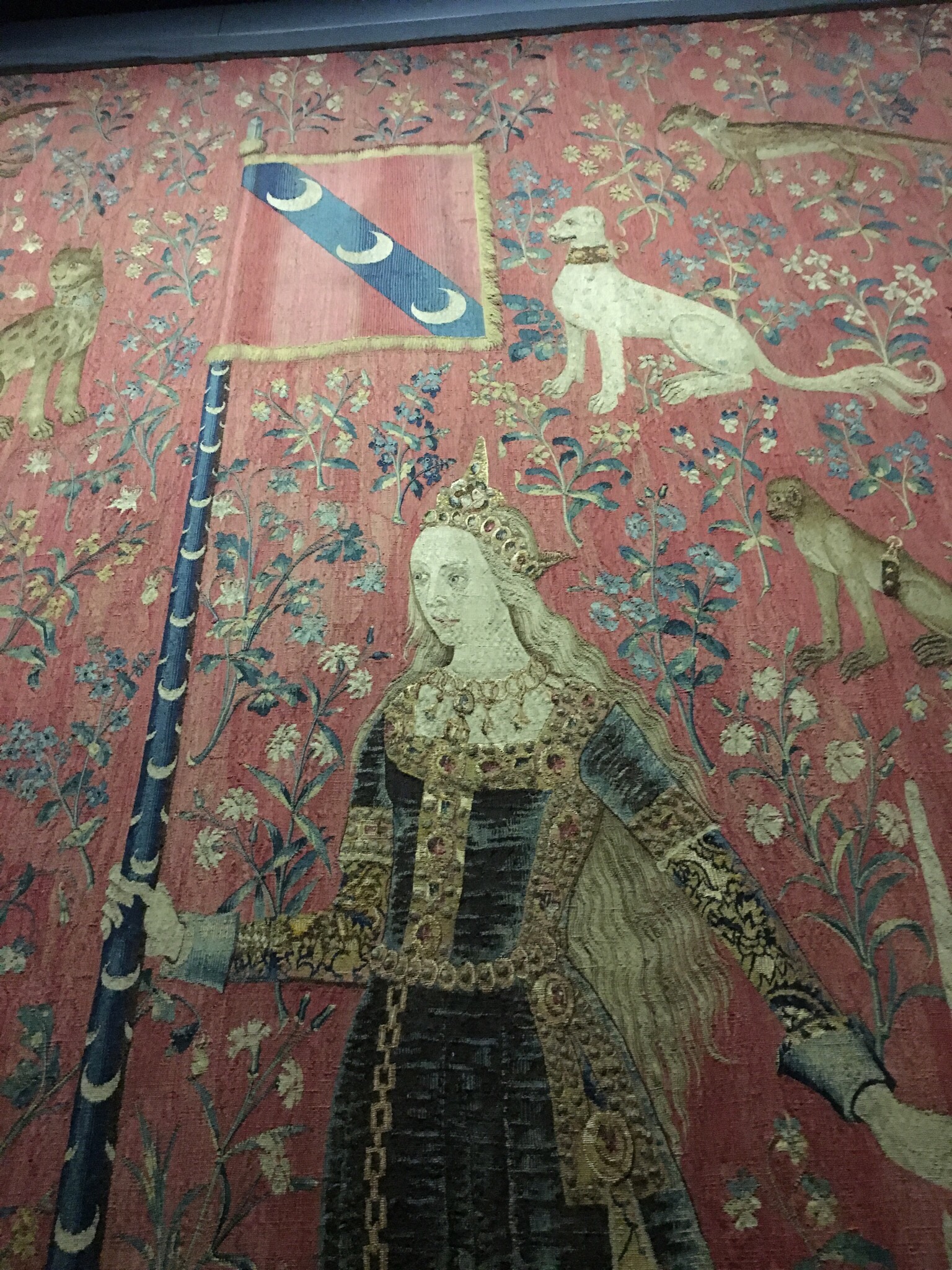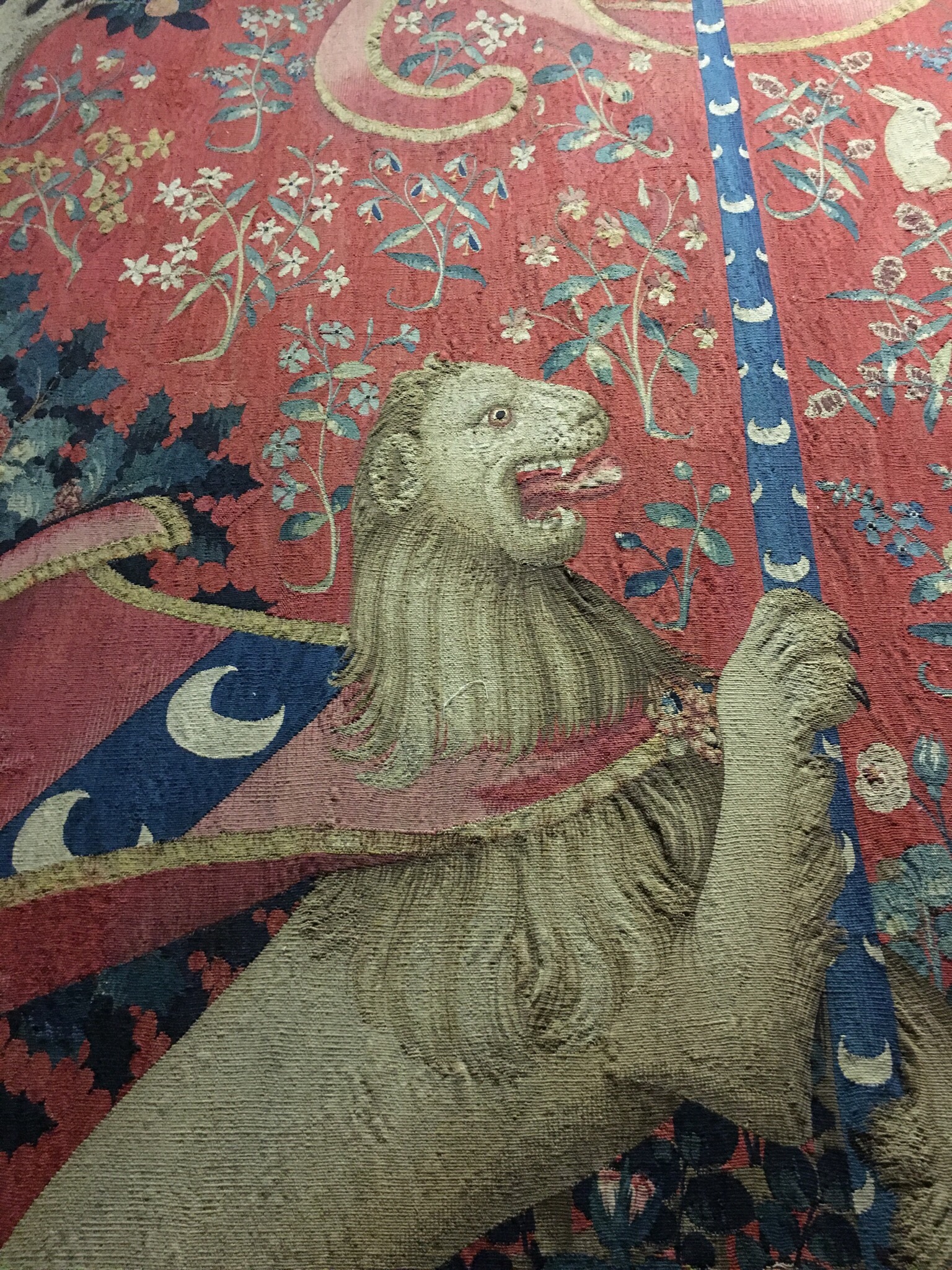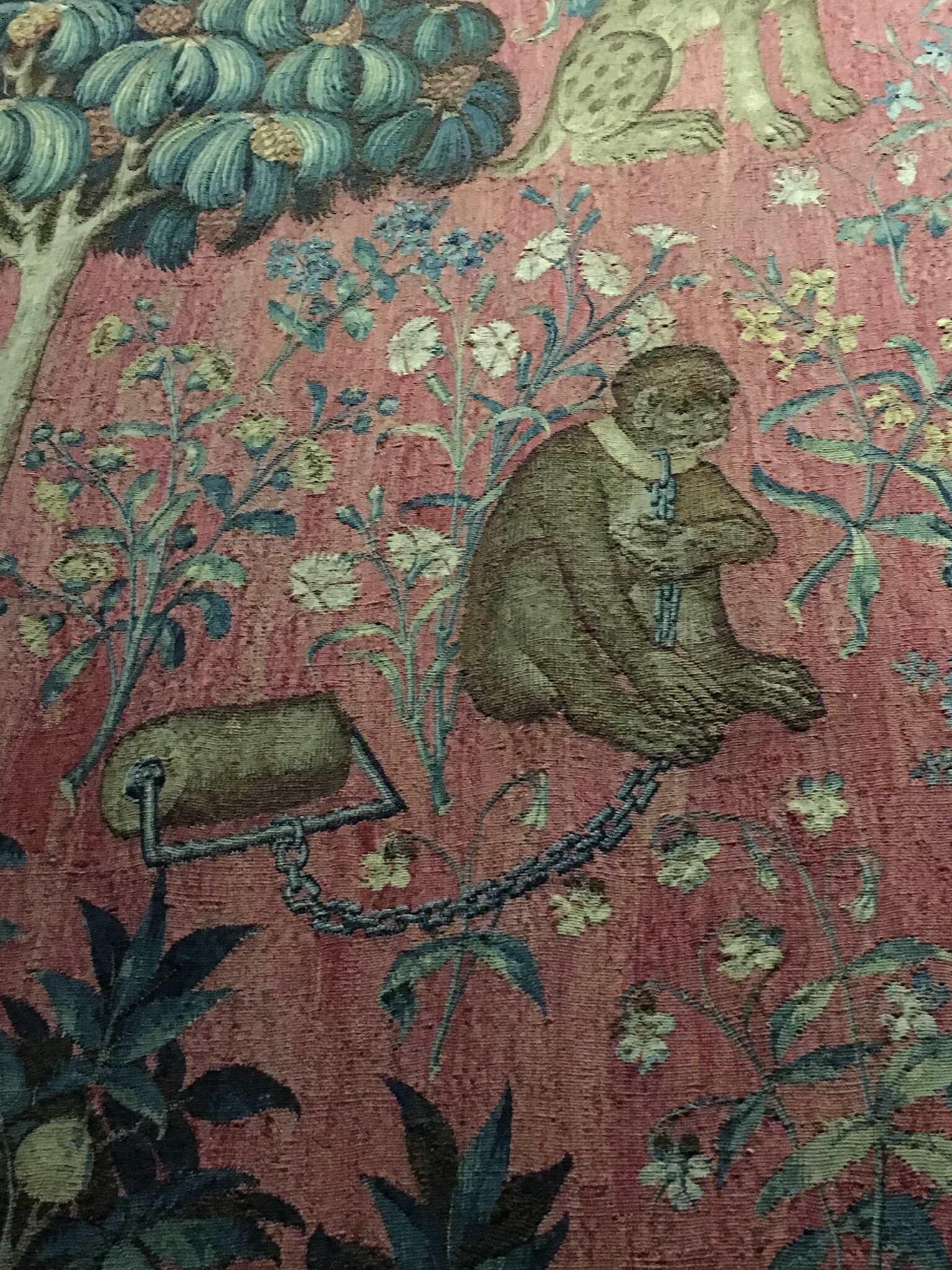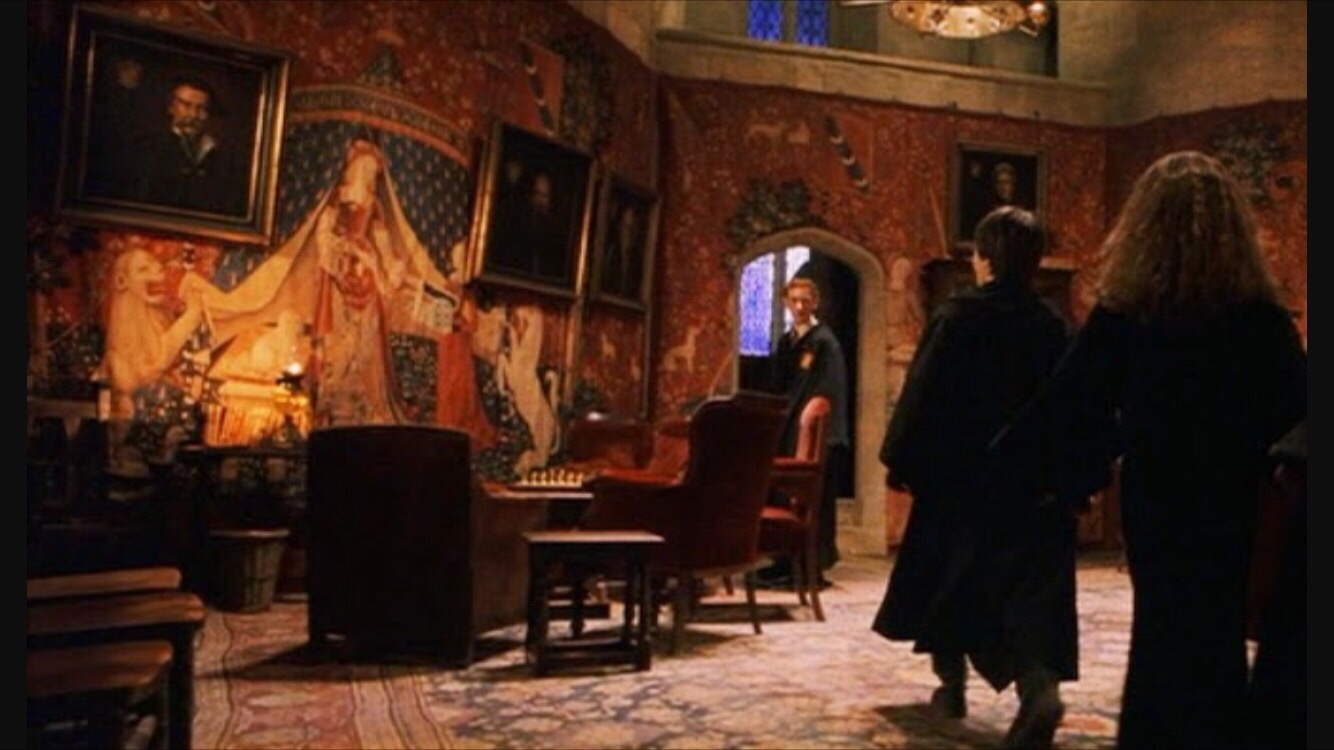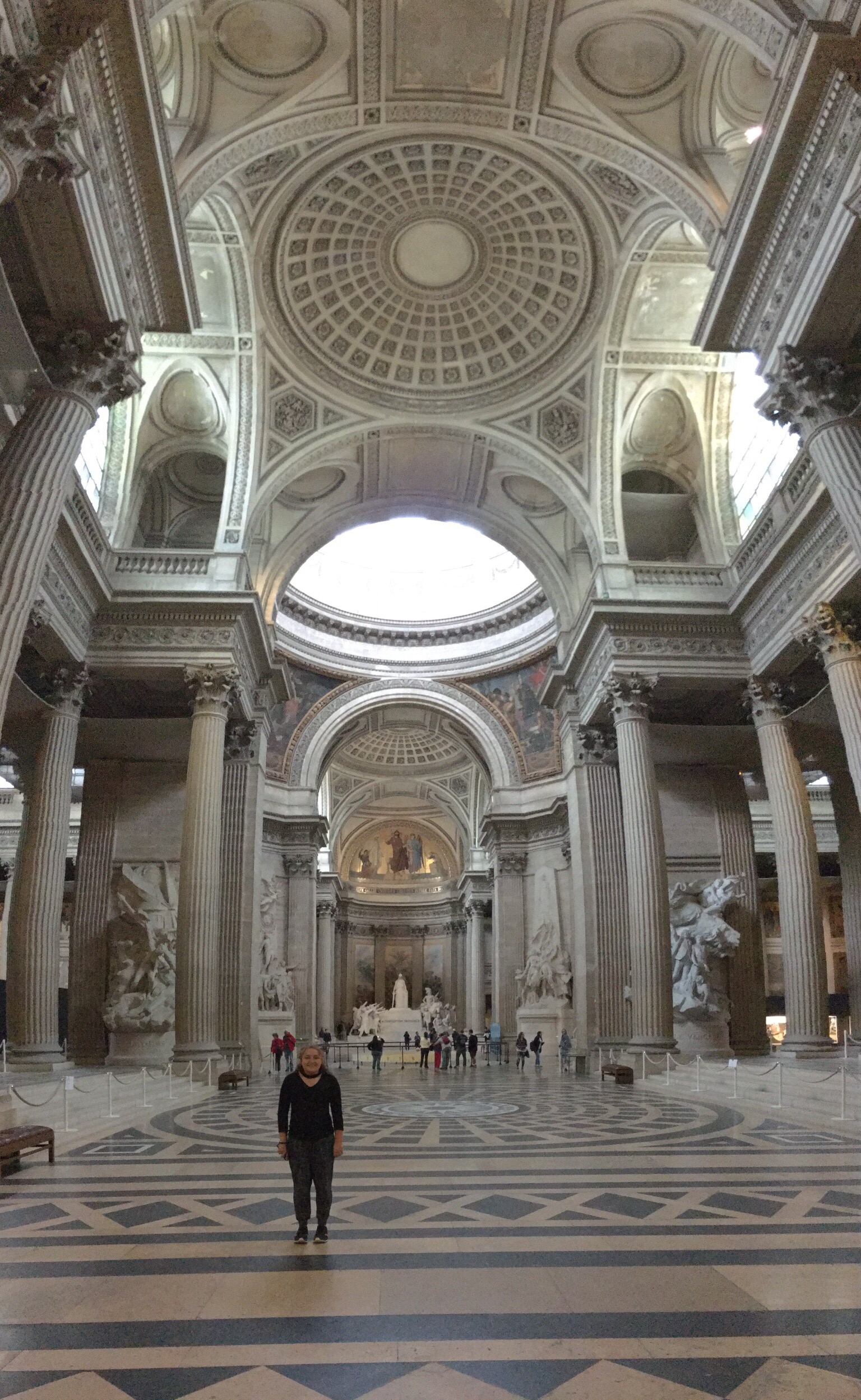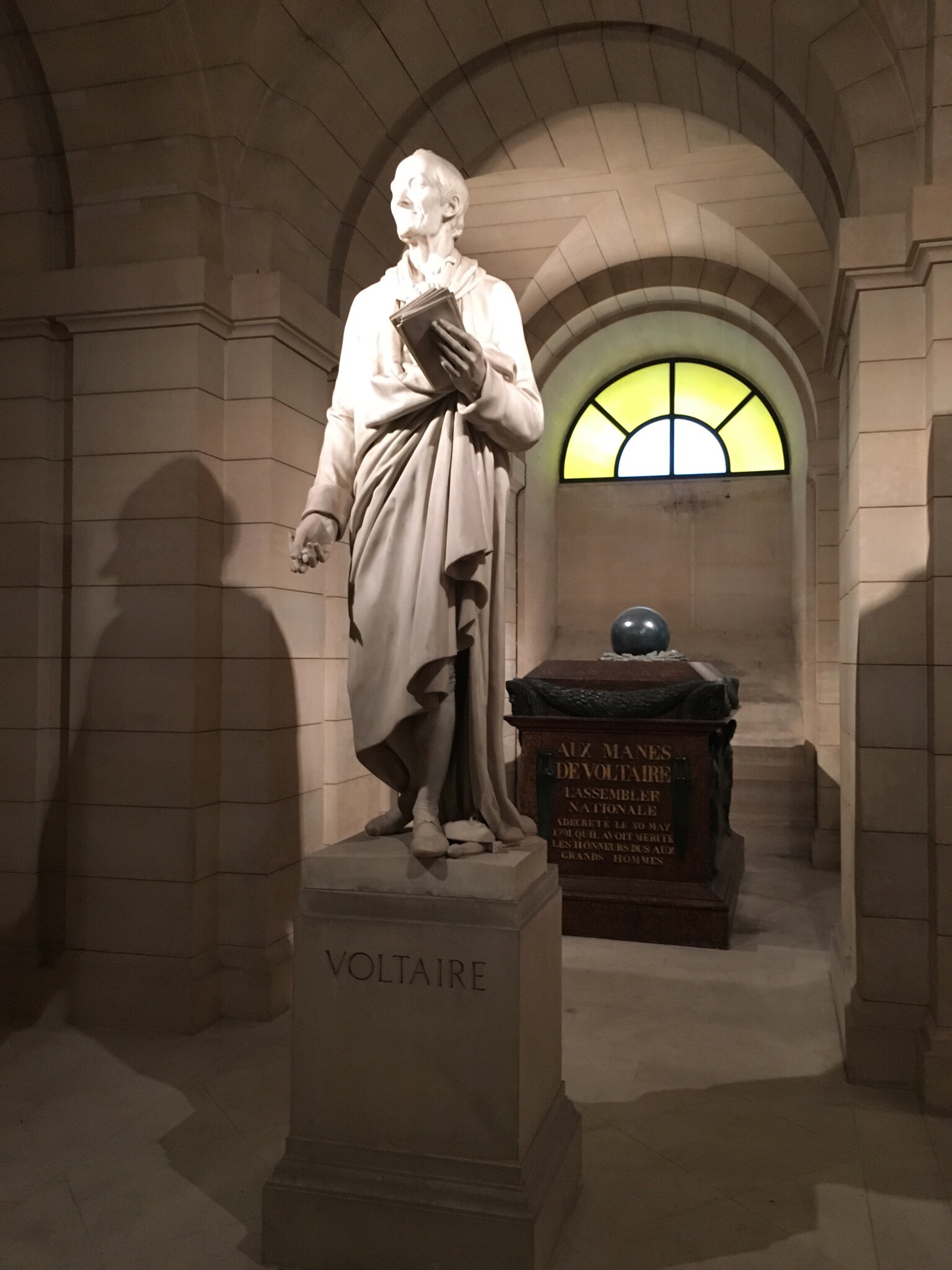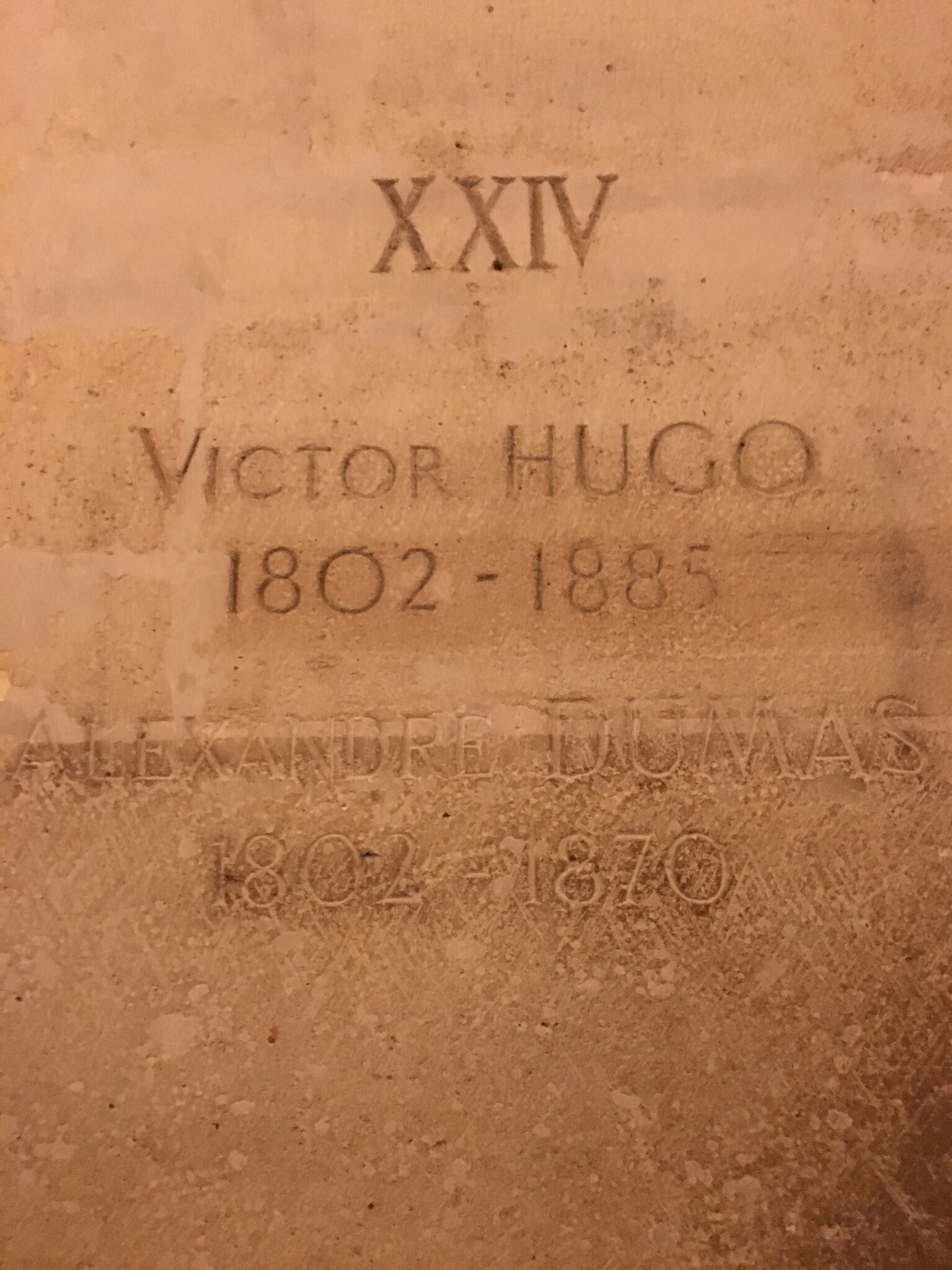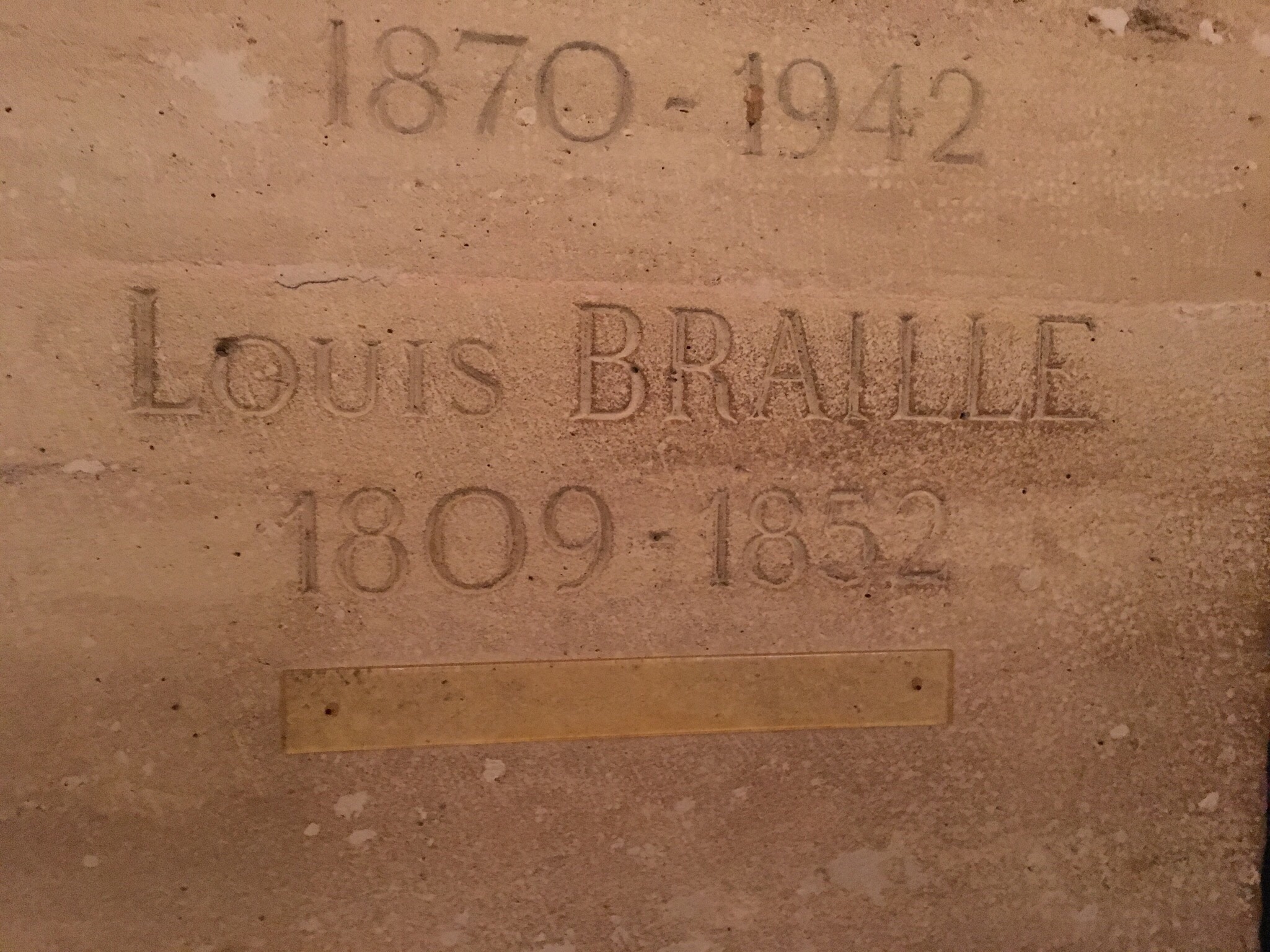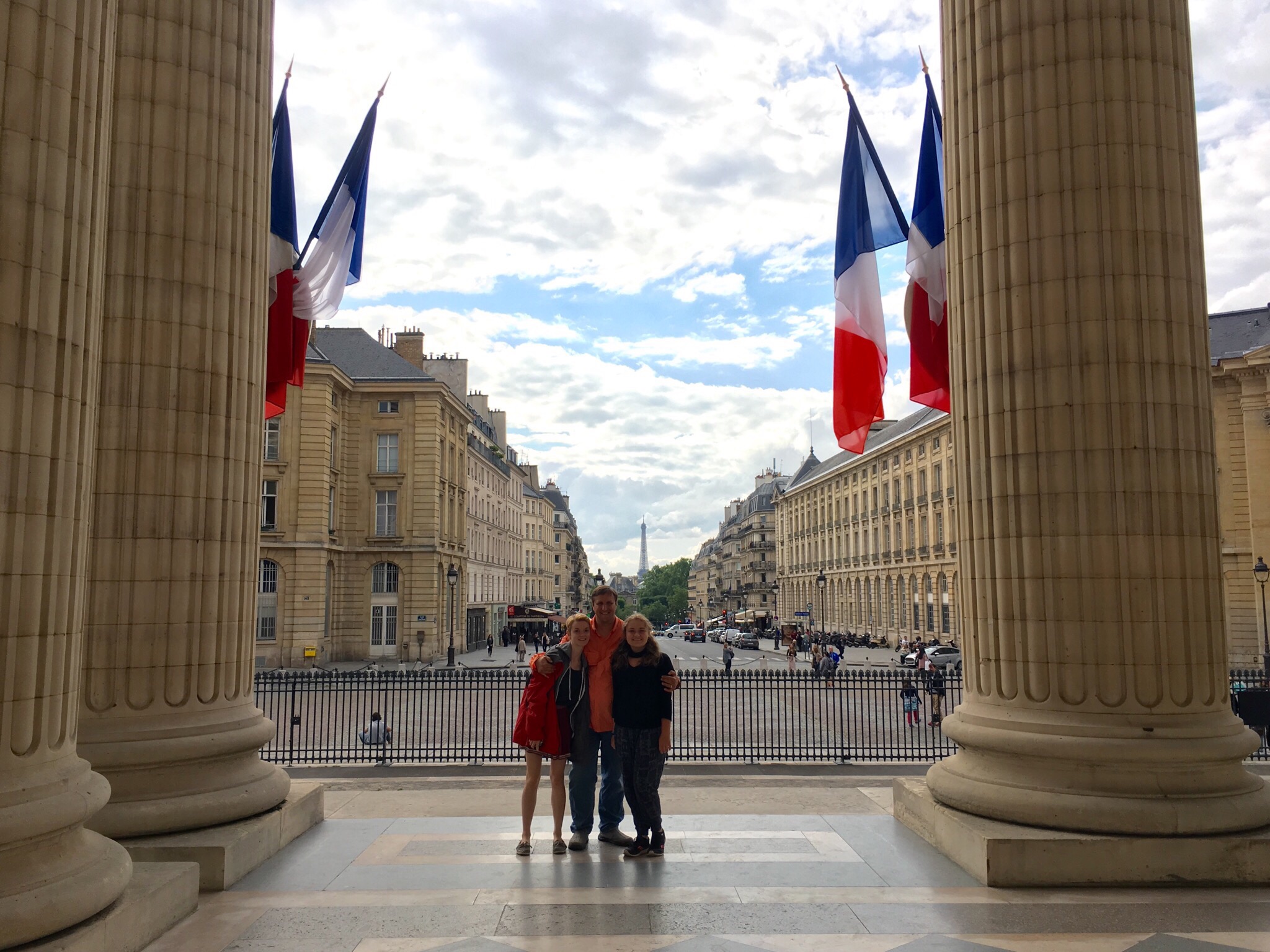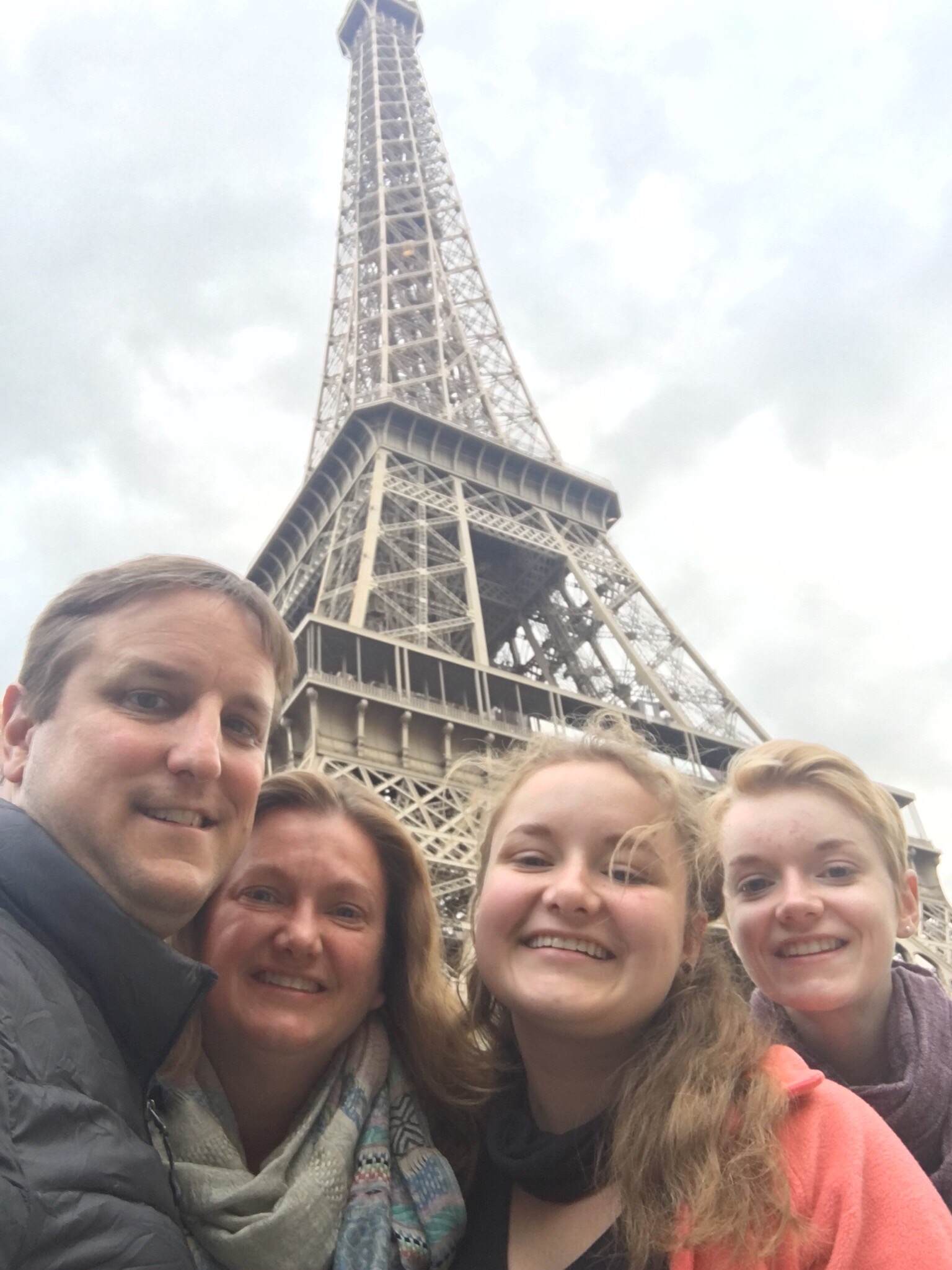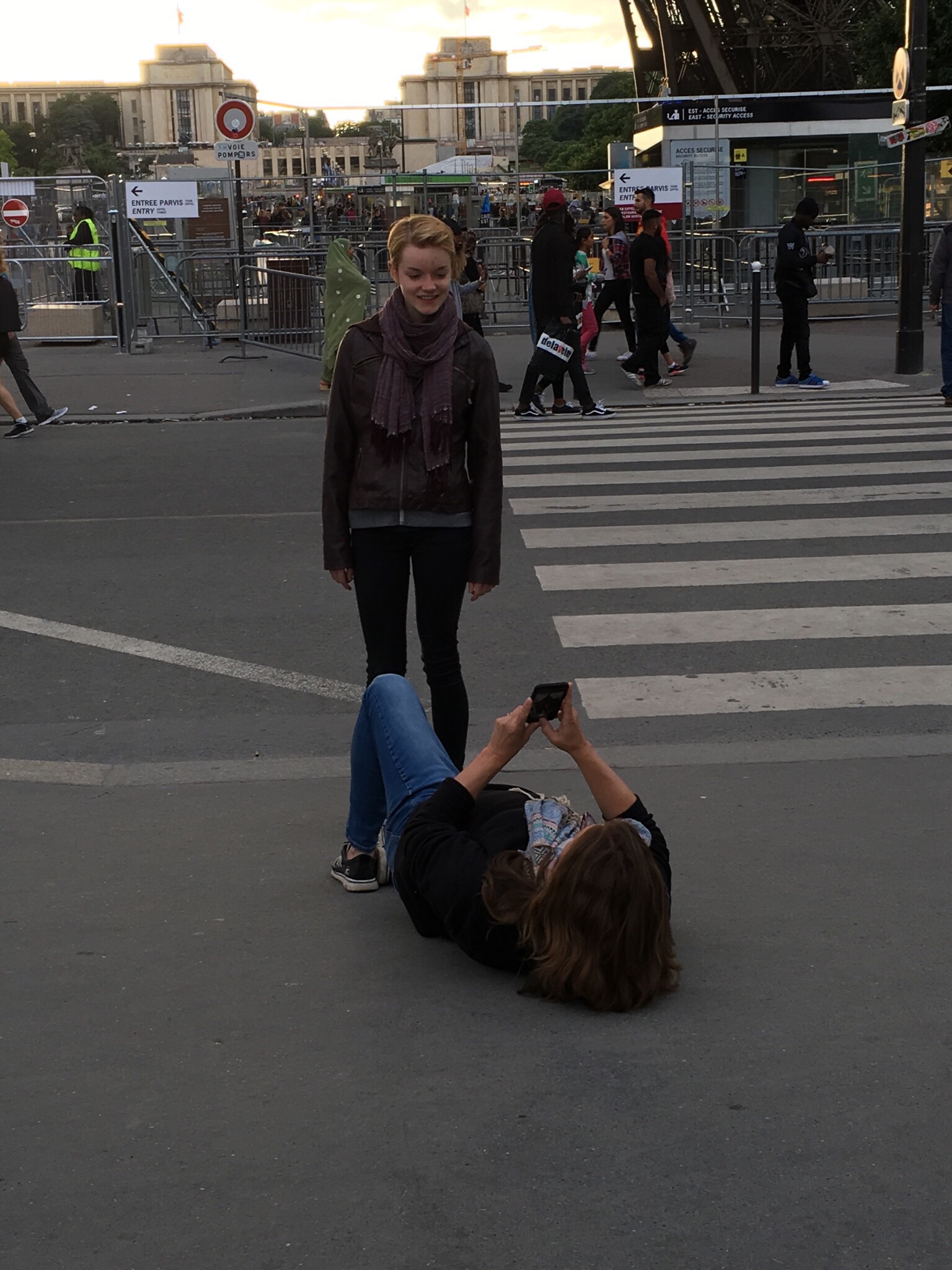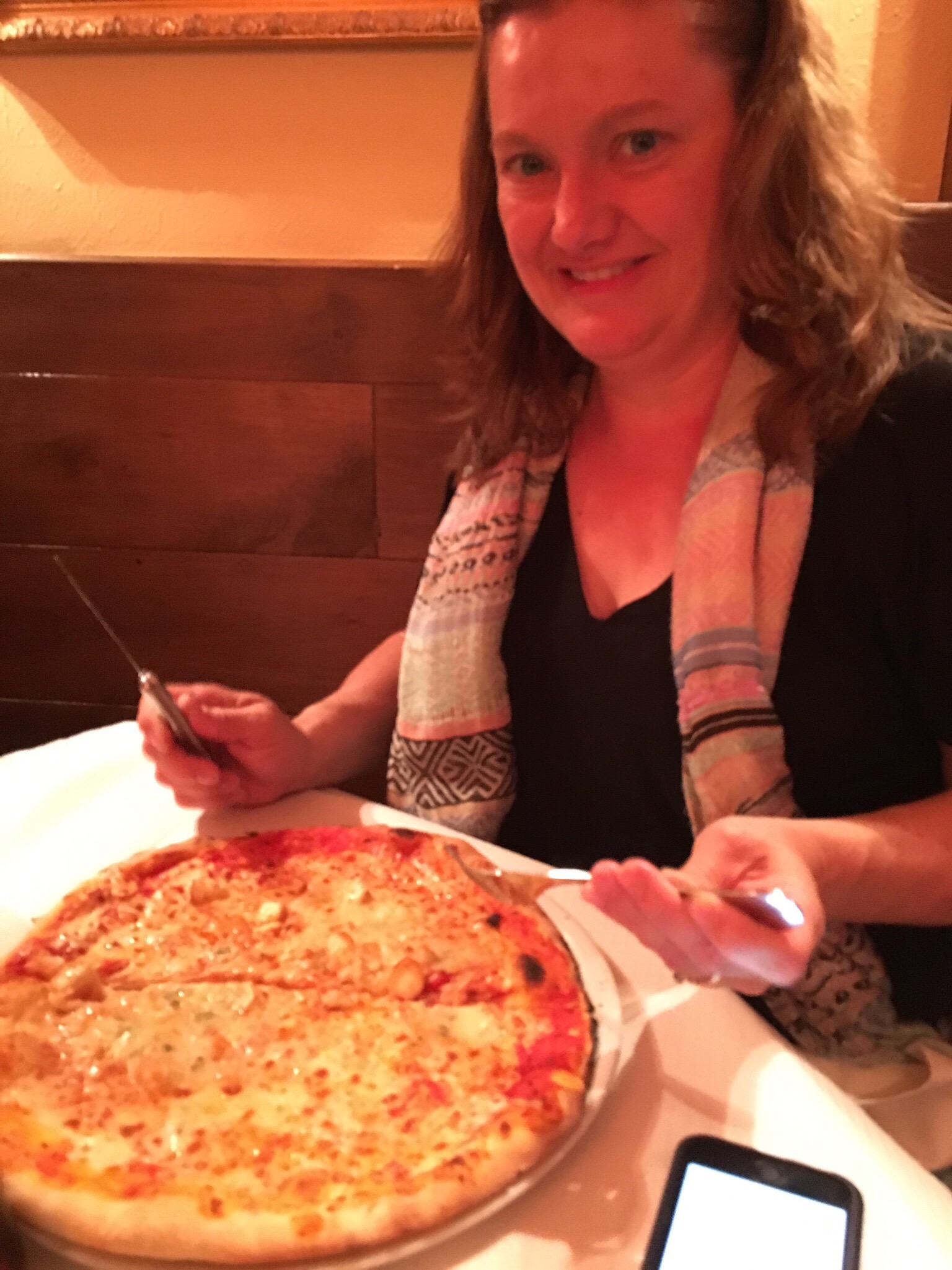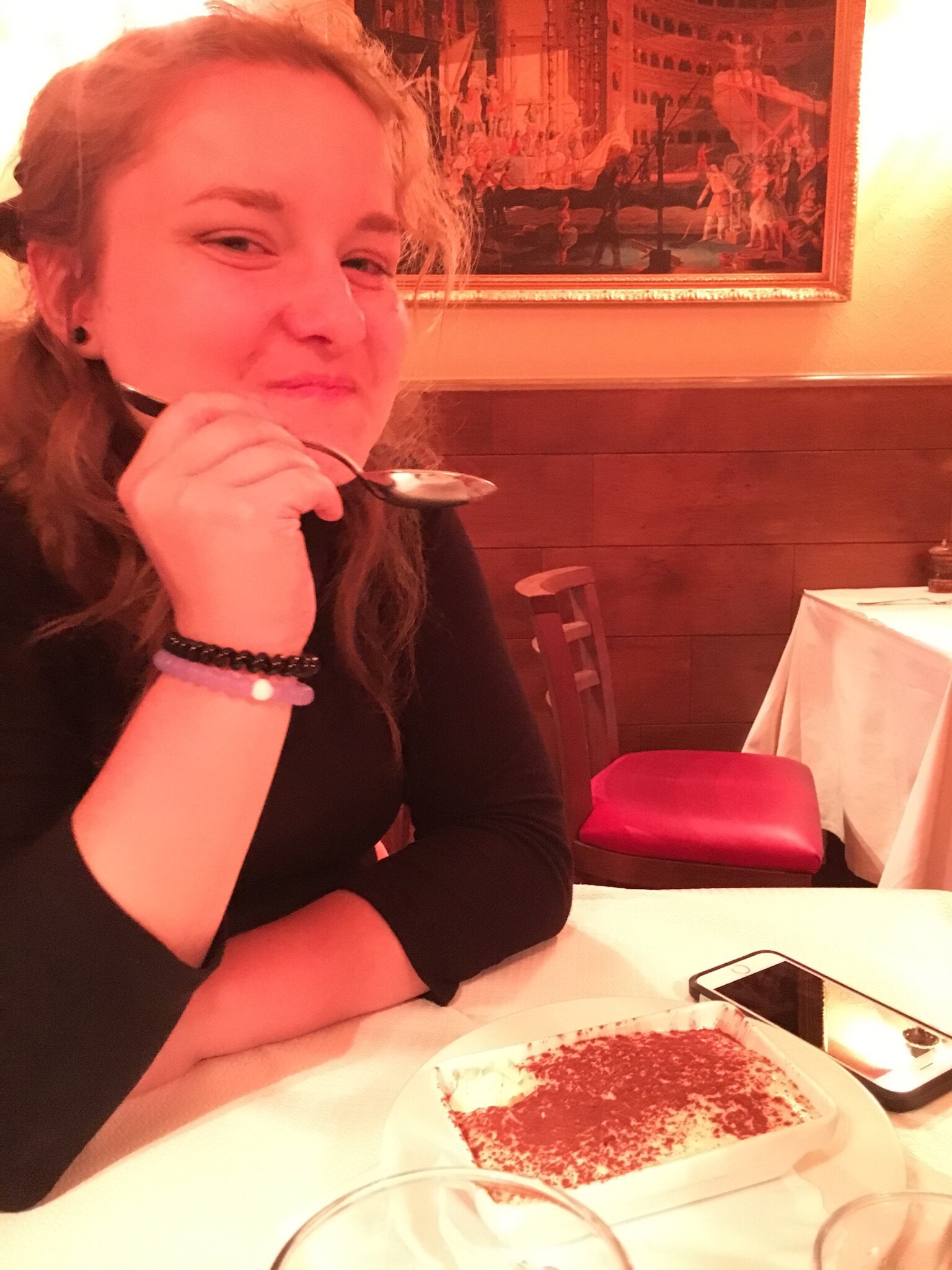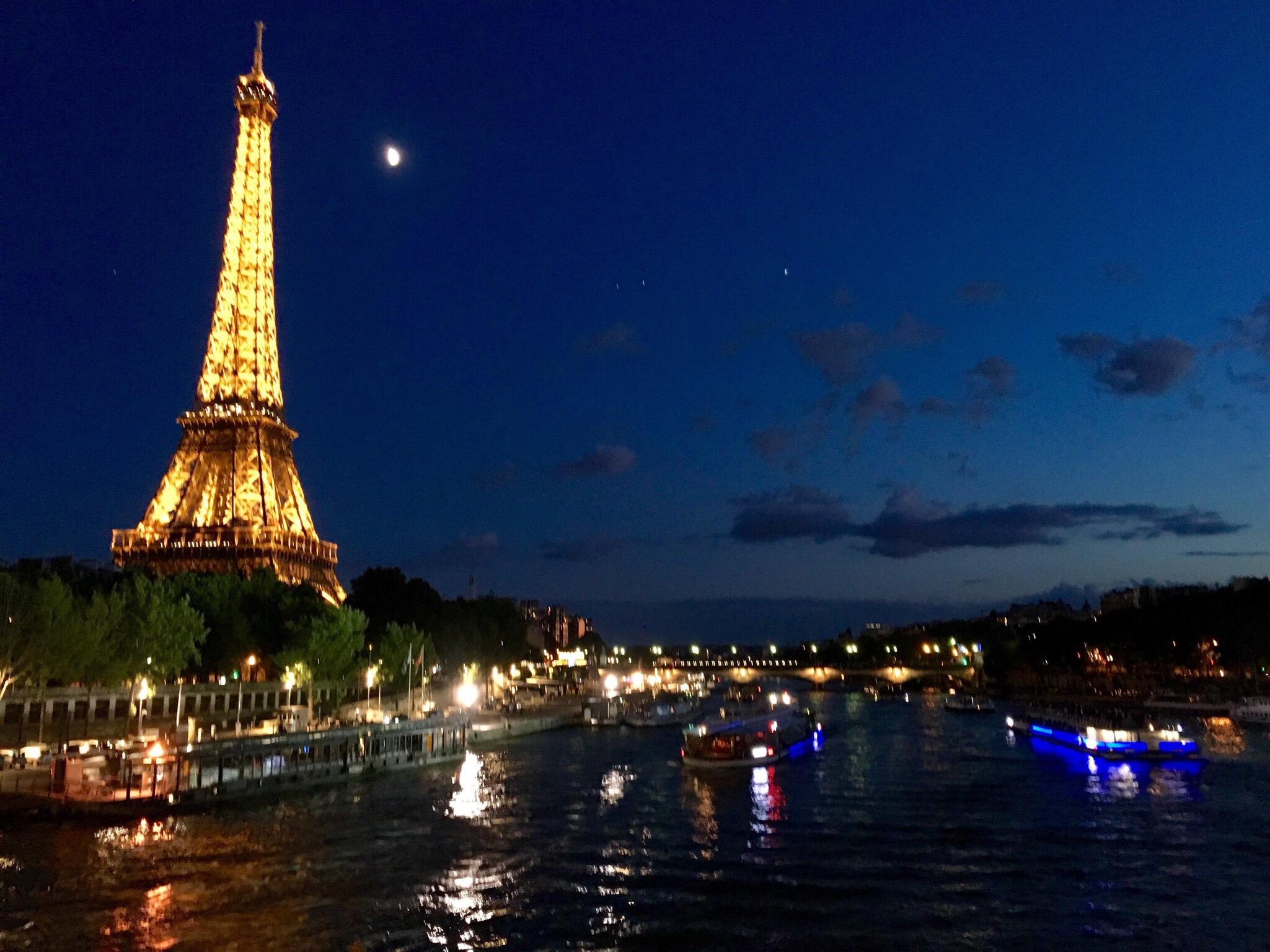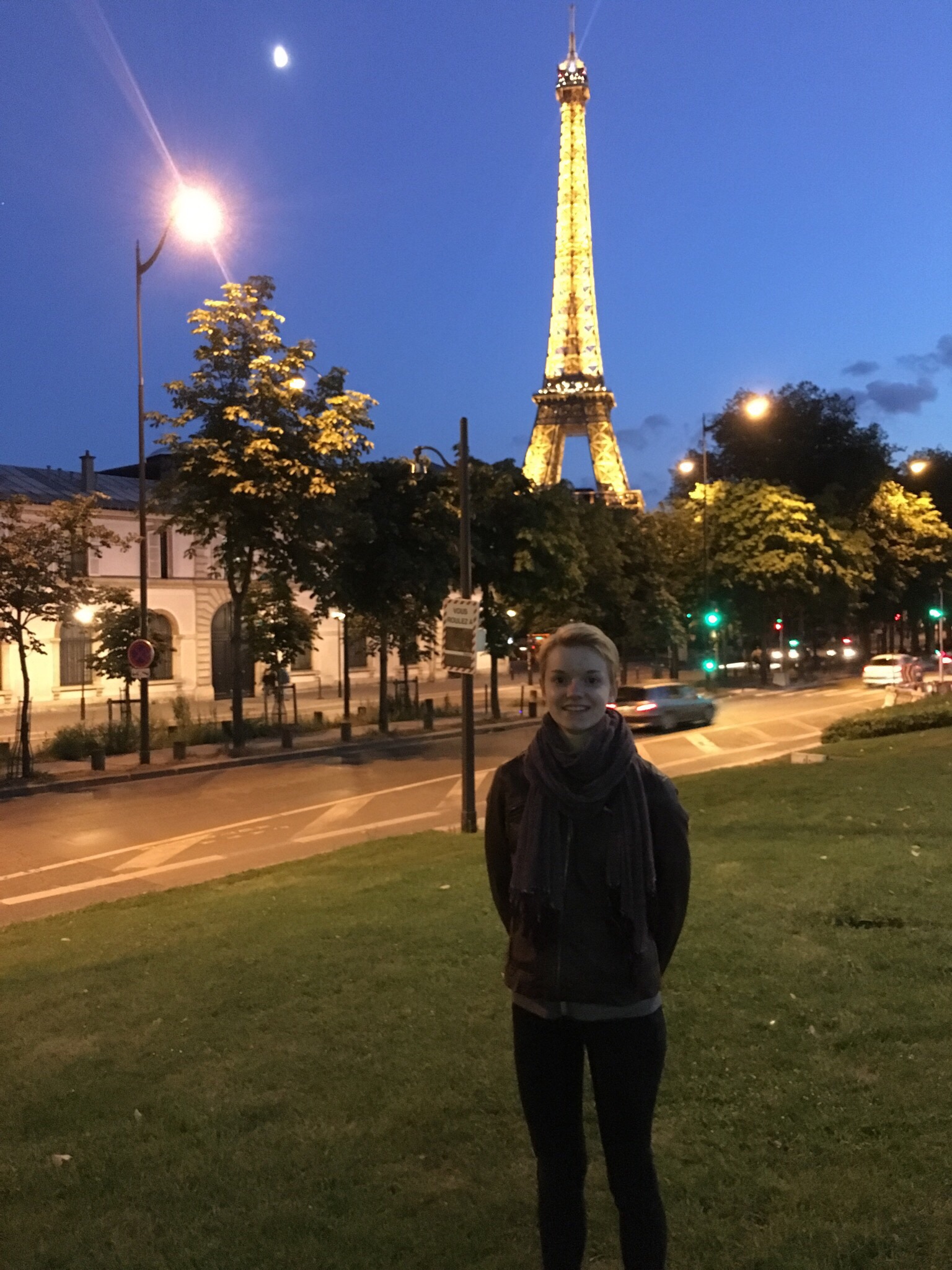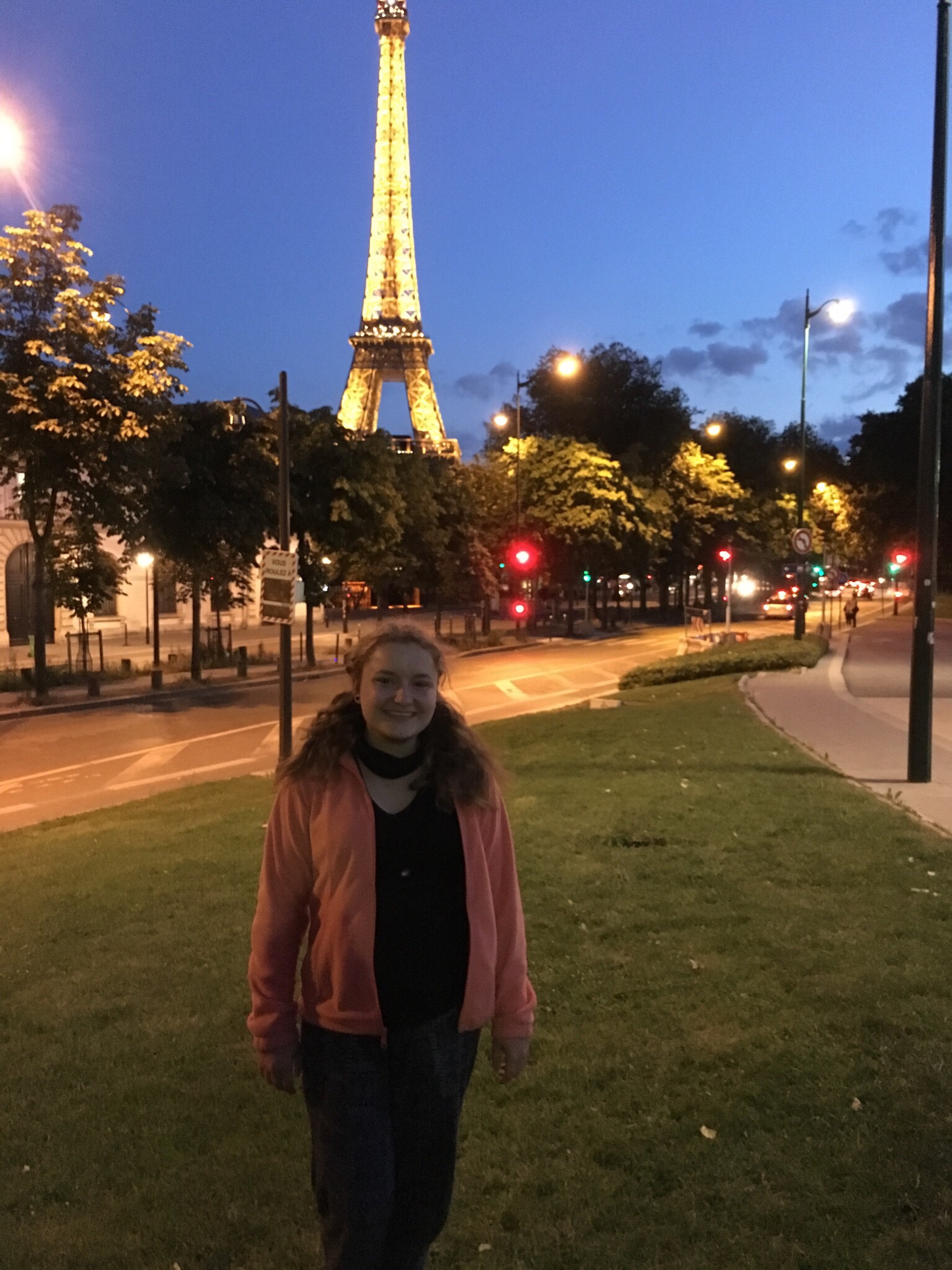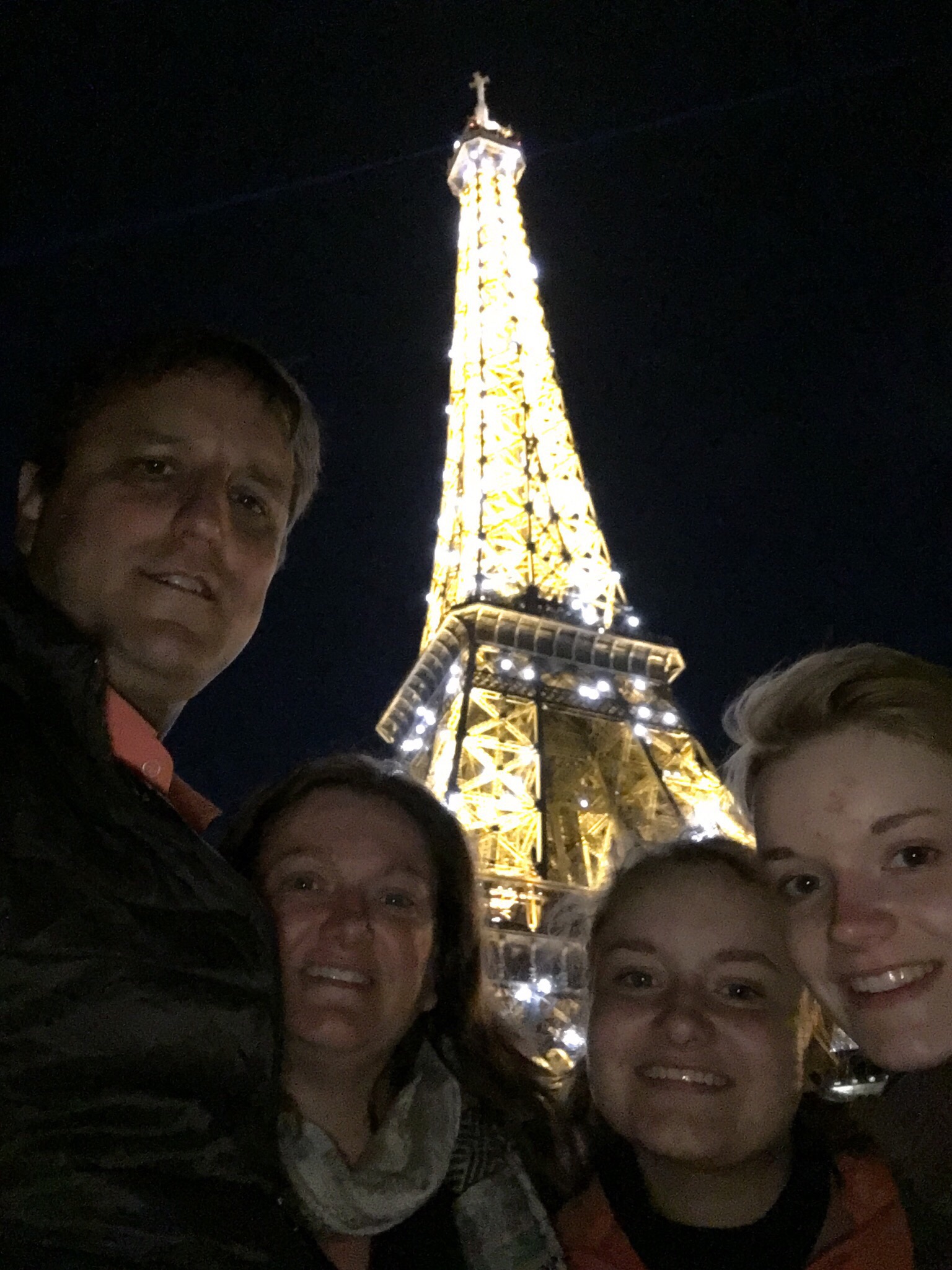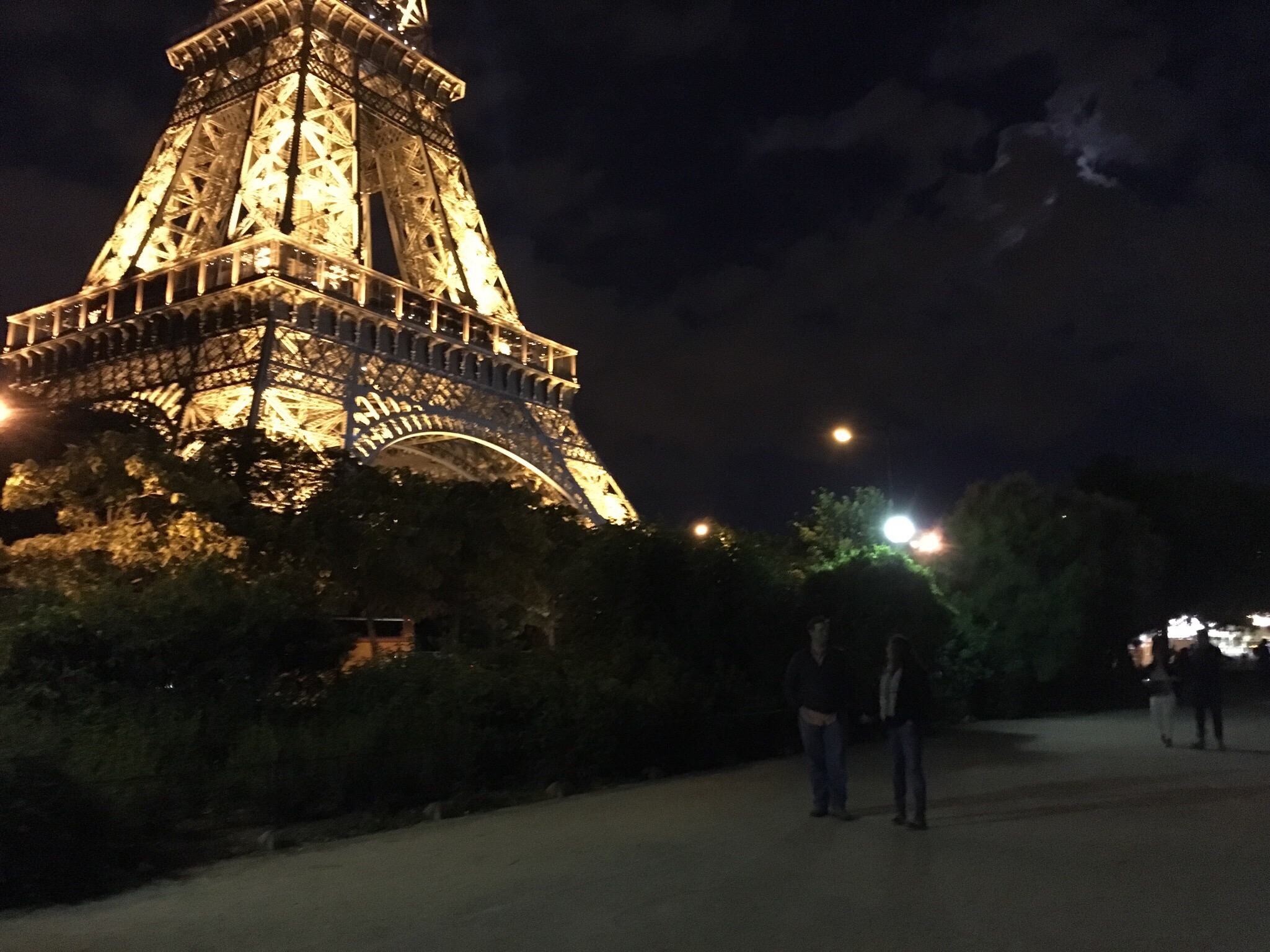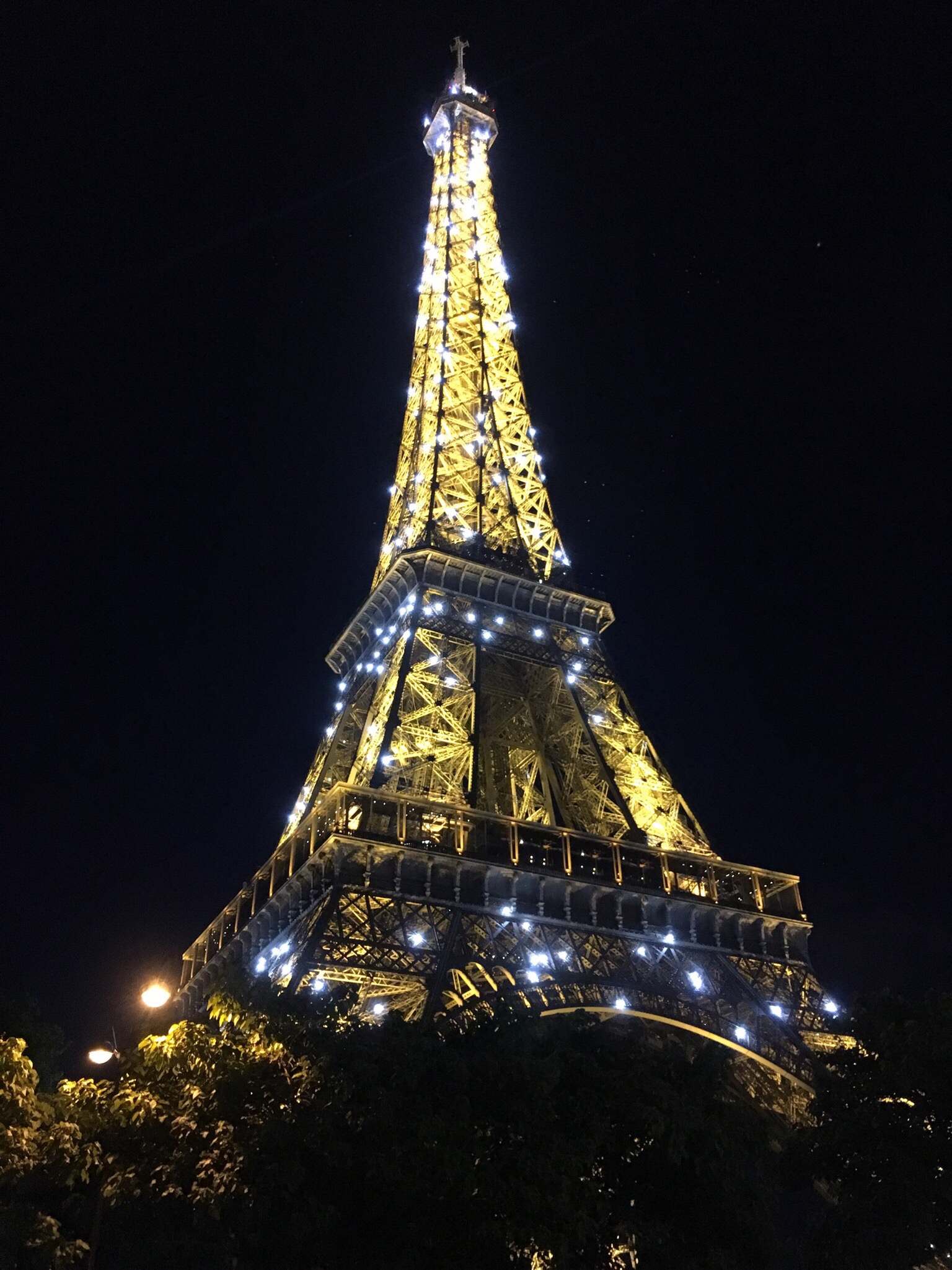Paris Day 3
Our first two full days in Paris were very busy with a lot of walking in big museums. Today, in contrast, we decided to take things a little more slowly and see a few things we wanted to see but that might be out of the main tourist spots. We started by slowly waking up and making a big breakfast. Mike and Julia worked on bacon and eggs while I walked our neighborhood in search of pastries. I had done this every morning and had previously walked down near the Eifell to find croissants. Today, instead, I walked in the other direction and found a very busy patisserie called Lapelosa Felice. There was a line weaving out the door, and the smell coming from the bakery was amazing. I did my usual French tourist communication and just pointed at a few things and held up two fingers for each. I walked away with a beautiful bag of delicious chocolate and vanilla filled pastries as well as a loaf of bread. I wish I had found this place earlier in the week because it was definitely better than the chain store where I bought croissants the other two mornings.
We talked about our options for the day, and the girls and I decided to go to the Monmartre neighborhood where we could pick up a free walking tour at 11 am. Mike had been battling a cold for most of the week and decided to try and sleep some of it off, so he set his alarm so he could meet us later in the day and went back to bed.
We Uber-ed our way to the Metro station in Monmarte. Our driver spoke wonderful English and was very friendly. He and Julia got into a big discussion about the United States police system because Europeans had been hearing a lot about the police shootings in Dallas and he had a lot of questions about violence and trust between citizens and police. He was very cautious in his questioning at first because it was obvious he didn’t want to offend us, but once he found Julia was very happy to talk, they chatted on for a long time before he dropped us at our destination. We found it can’t be guaranteed our Uber driver will speak English, but when that happens, they can be a good source of local information. This particular driver was happy to share his favorite places in Paris and gave us a small list of things to see.
?We were just in time for the Discover Walks Monmartre tour. There were three tour leaders, and they divided us into small groups before starting their tours. The Monmarte area sits on a hill just to the north of the Paris city but has its own history related to the military, religious figures, and the arts. One of the strongest stories involves Saint Denis, a bishop who got in trouble with the Romans for preaching Christianity. They planned to execute him but promised to first return him to his monastery at the top of the Monmartre hill. The story says that partway up the hill, the Romans decided it was too long of a walk and instead killed him straight away by cutting off his head. Saint Denis was upset about this and picked up his head and walked the rest of the way to the top, bringing special significance to the monastery.
The neighborhood is also famous for the arts. Picasso and others lived and worked in the Le Bateau-Lavoir building in the early 1900’s while the likes of Renoir, Satie, Van Gogh, Matisse, Degas, Toulouse-Lautrec, as well as writers Victor Hugo and Langston Hughes called this neighborhood home at one time or another.
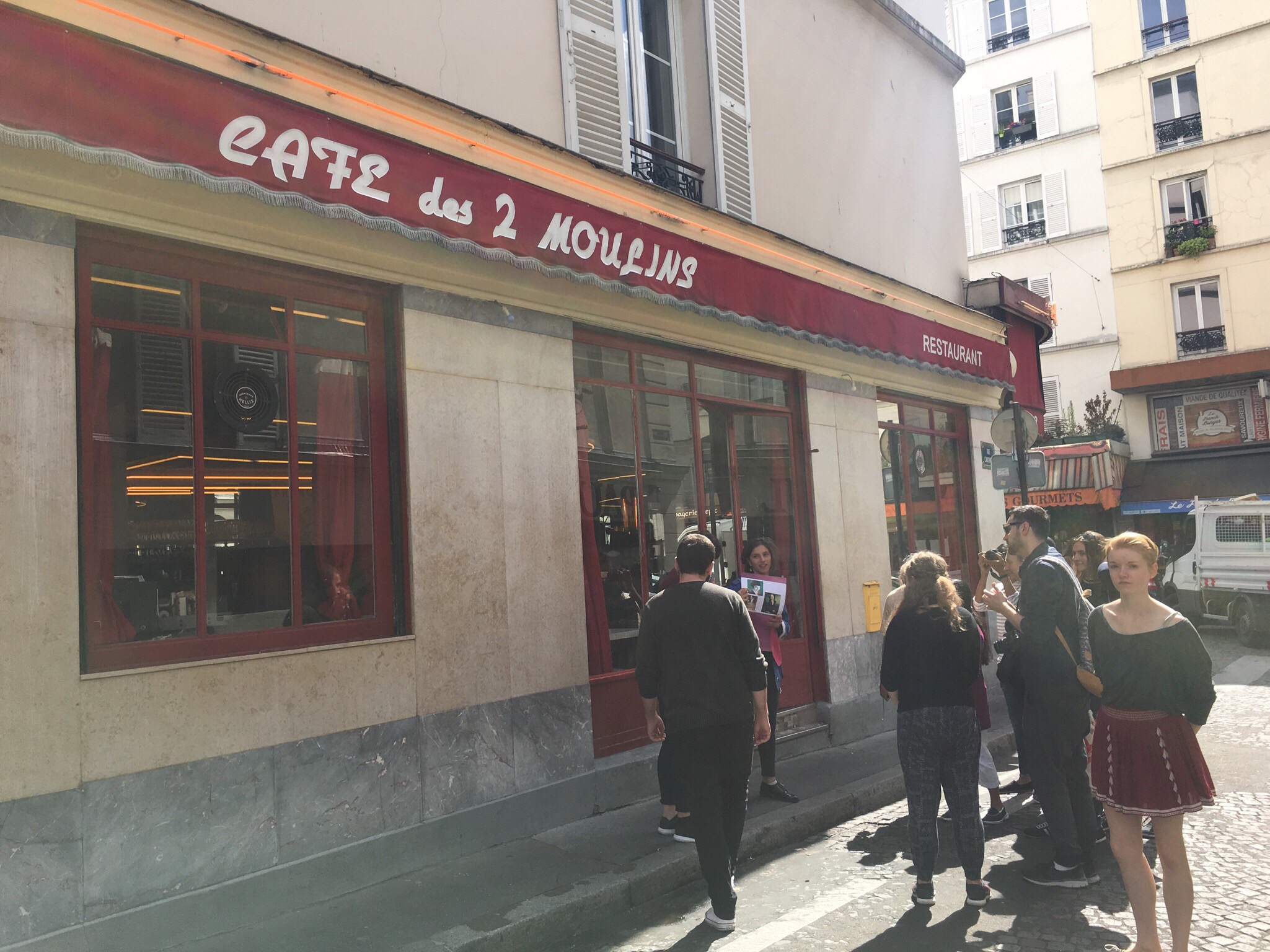
The movie Amelie was on my Netflix list before we left, but I never got around to it. This is the cafe where it was filmed, though, so we will still need to check it out.
Singer Dalida, one of the 6 most popular singers in the world, lived here, and our tour guide explained to her mostly English and American tour group just how popular this singer was before her death in 1987. Her home is still an important pilgrimage for her fans, and a bust in her likeness sits along one of the popular streets. You can touch it for good luck, and it is obvious many do.
Our favorite story of the region’s eccentric artists was about poet Gerard de Nerval, a 19th century writer who, according to legend, liked to take his pet lobster for walks — stopping at each fountain to splash him down. It seems unlikely, but he certainly had a lovely area to walk. The hilly pathways through the neighborhood and the vineyards set along the walk are still beautiful.
We also walked past the Moulin de la Galette, a reminder of the many windmills that once dotted the Monmartre hillside beginning in the 1600’s. In 1814, during the Franco-Prussian war, the Debray family defended their mill from the Cassocks and lost. One of the men’s corpses was nailed to the windmill as a warning to others who might dare stand against invaders. When the war ended and the mass grave for those lost in the war was covered nearby, the Debray family decided the building and its windmill needed to be a place of humor and life. They opened a restaurant that one day became the inspiration for Renoir’s Val du moulin de la Galette (1876). Our tour guide showed us painting as we walked the area.
Our tour ended at the highest point of the city, the Basilica of the Sacre-Coeur. The basilica was built beginning in 1875 as penance for the French defeat in the Franco-Prussian war. The defeat was interpreted as divine punishment for moral decline after the French Revolution. It is now seen as a place to pray for those lost in war. We were told you could even sleep overnight in the basilica if you promised to take on one of the prayer hours (someone has continuously been praying at the altar since 1885). For many visitors, the big draw today is the view of Paris you get while sitting on the front steps.
Walking down from the highest point in Paris meant a lot of steps, but it was a quick walk straight back to the Metro stop. Before taking a ride across town, we got our photo op at the Moulin Rouge, once the site of one of the hill’s windmills and now a cabaret. As seen in the movie by the same name, the Moulin Rouge is the birthplace of the can-can dance and once held circus-themed extravagant shows. It still hosts cabaret performances for mostly tourists, but it is definitely in the red-light district, and based on the many sex shops along the street, it doesn’t look like a place we’d wander to after dark. It was still fun to see, though.
Our next plan was to meet up with Mike on the other side of town near the Place de la Nation metro, so we took the plunge and had a friendly metro worker help us get the right tickets and get on the right train. The Nation station sits where guilloines were placed during the French Revolution and where possibly 40000 people lost their lives in the years 1793-1794. When those people died, they needed burial. At the height of the reign of terror, 1306 victims were executed between June 14 and July 27, 1794. Picpus Cemetery, a private cemetery associated with a small chapel, Notre Dame de la Paix, holds the mass graves required for those June/July deaths. After that time, the only people permitted burial in the cemetery were relatives of those buried in the mass graves. Today, the cemetery sees many American visitors because while the Marquis de Lafayette, a hero of the American Revolution, lived until 1834, his wife lost her mother and sister to the guillotine in those June/July months, and he and his wife, Adrienne, are buried in the small cemetery.

Picpus Cemetery: enter the gate, find the guy who takes your two Euro, grab a map, and enter the courtyard. It sounds easy, but it is relatively hidden in plain site along the main street.
Lafayette brought French forces to the aid of the colonists during the American Revolution and helped them defeat the British and win independence. His agreement was that the United States would then return the favor and come to France’s aid if they fought their own Revolution. The United States was not in a position to send aid, however, when France went to war with Britain in 1793, and issued a Proclamation of Neutrality instead of sending aid. This created a very poignant moment when, in 1917, the United States joined forces with France during WWI. U.S. Army Colonel Charles Stanton visited Lafayette’s grave and placed a flag, saying, “Lafayette, we are here.”
To be honest, we may not have sought out this tiny cemetery if I weren’t so totally in love with Daveed Diggs’ performance as Lafayette in Broadway’s Hamilton, but I am thankful that performance led to my learning more about the real Lafayette and seeking his grave as one of those “as long as I’m in Paris” moments. I loved seeing how the Daughters of the American Revolution always keep an American flag flying over this grave in this small corner of Paris so far away from other tourist walks. It also meant we could look through the gate and see the mass grave of the many who died during the revolution. The gate through which the bodies were brought still stands, and the quiet, shaded back of the cemetery feels so separate from everything else happening in the city. Before leaving, we also visited the chapel where the names of those buried in the mass graves fill two entire walls.
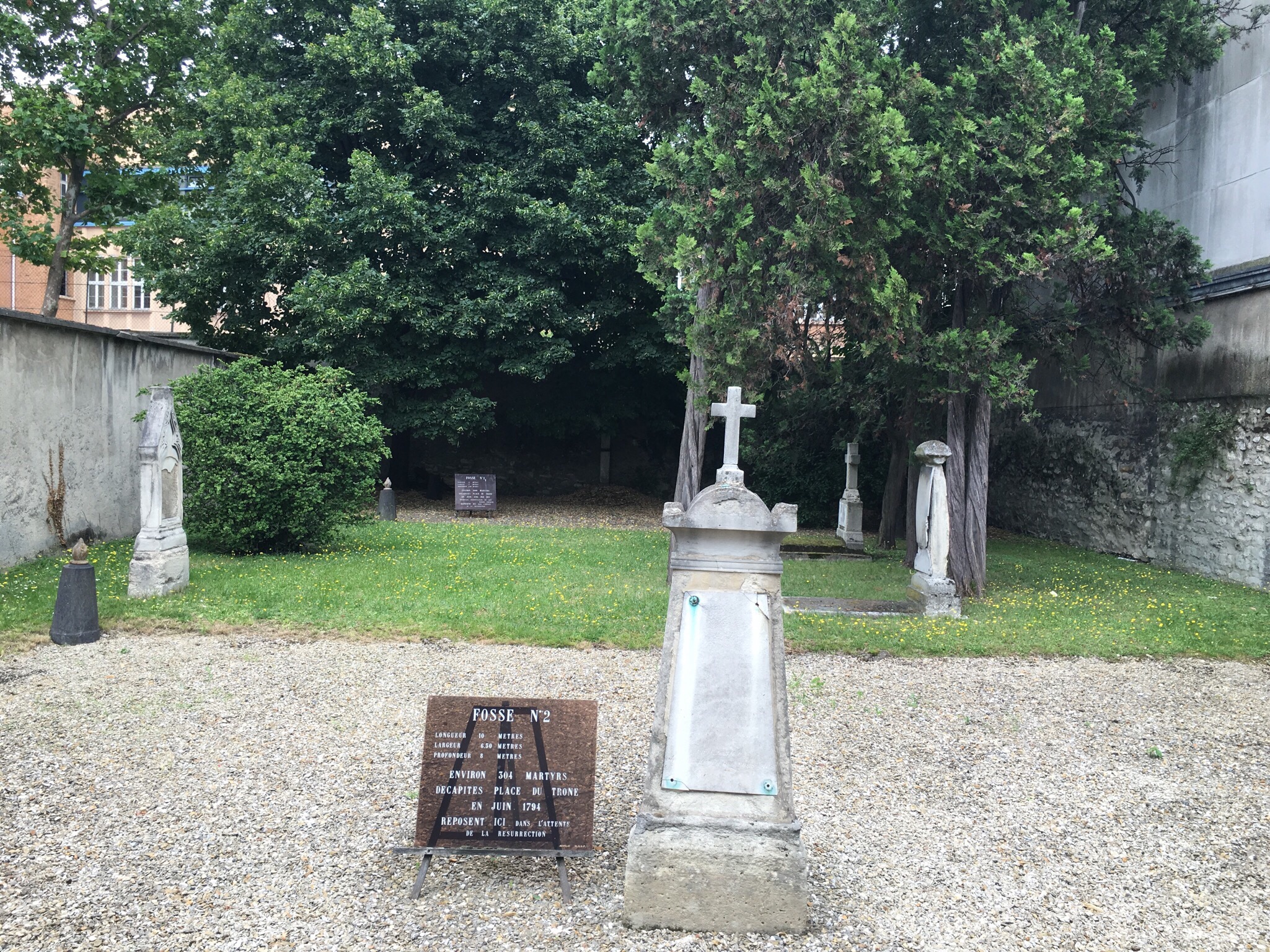
Holding the camera through the gate: Here you can see two monuments marking the first and second mass graves from the summer of the Reign of Terror
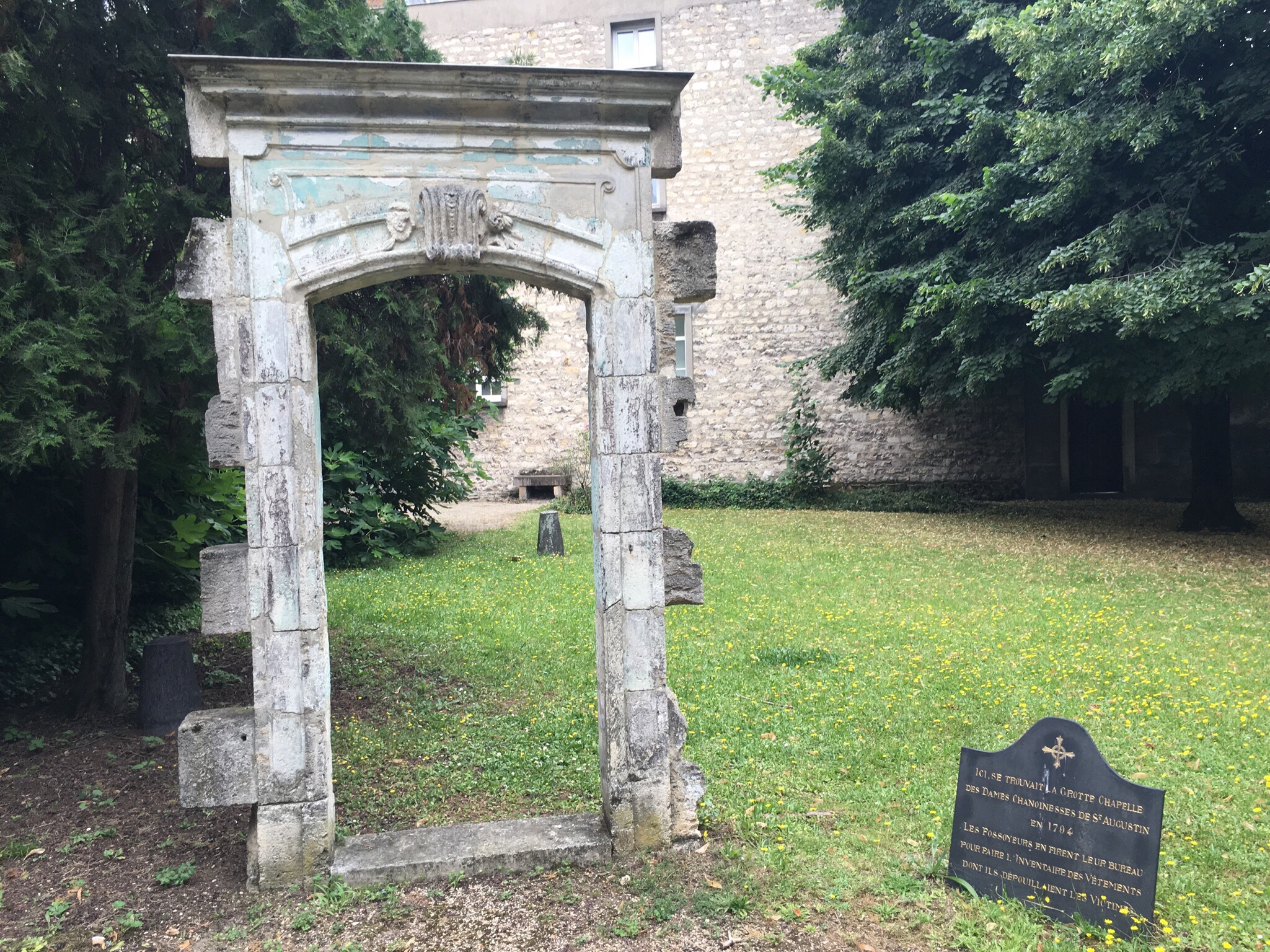
Doorway marking the location of a small chapel that once was used as an office by the gravediggers who prepared the bodies for mass burial during the revolution
Our next stop was Museé Curie, a museum established in 1934 on the site where Marie Curie had her laboratory and research facility. This is where she performed the research that led to research into radioactivity and her eventual death from exposure to that research. The museum is only open a few hours every week, so we felt lucky we could work it in to our list of visits. Many of the exhibits were exclusively in French, but we had a chance to see her laboratory, her office, and then peruse exhibits of her writings and works.
From the Curie Museum, we walked a few blocks to the Museé national du Moyen Age, or Museé Cluny, a wonderful small museum with a large medieval collection. It sits in a former town house used by the abbots of Cluny as far back as 1334. Part of the structure is now the museum, part is gardens, and part contain the Roman thermal baths (part of which can still be visited). I specifically wanted to see The Lady and the Unicorn tapestry, so the family agreed to follow me with the understanding that, while we were a little over-museum-ed lately, we would focus on the tapestry and walk through otherwise. Our museum pass made this easy to do because we didn’t feel obligated to spend a lot of time. It was a good stop, though, because the building itself was really interesting to walk through.
The Lady and the Unicorn tapestries are said to date from the 1500’s, and they were known and discussed back in that time. They were rediscovered in 1841 at Boussac Castle, but they had not been stored well and needed care. Museé Cluny took them at that point and keeps the six tapestry cycle on display.
We joked about where the tapestry may have been in its missing years, and the girls pointed out it is seen in the Hogwart’s Castle in the Harry Potter movies (fun crossover connection):
Our last stop for the day was the Paris Pantheon, a former church that operates as a mausoleum where the bodies of important French citizens are buried. We only had 45 minutes until the building closed, so we did a quick look around the central dome, including a stop at Foucault’s pendulum, now a copy of the original that first demonstrated the rotation of the earth.
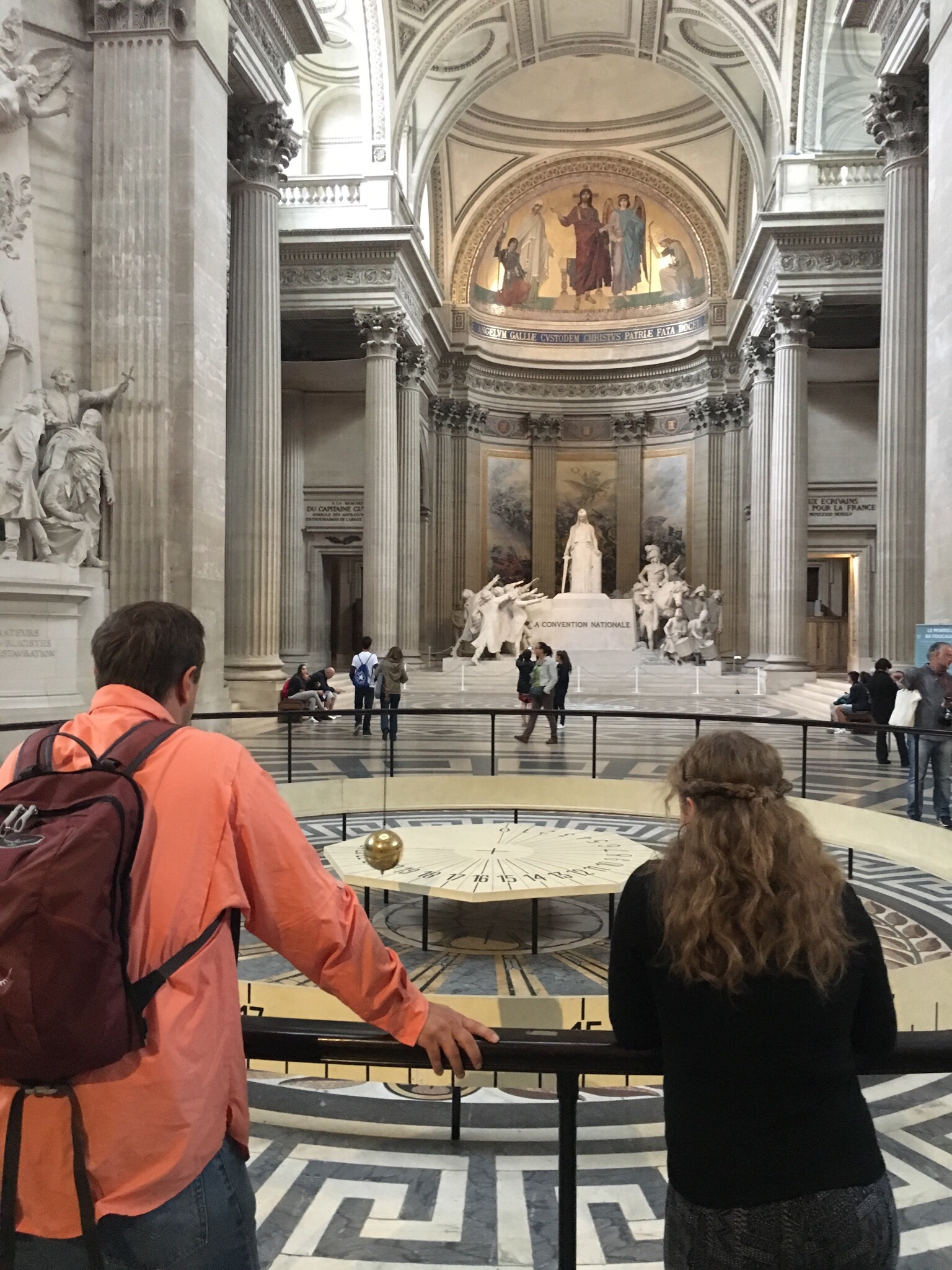
Foucault’s most famous pendulum was demonstrated here at the Pantheon; the one here now is an exact copy made after the original fell and caused serious damage to it and the flooring

This sculpture stands where the altar was placed (when the building was a church); the soldiers on the right represent France, and the men on the left represent the National Convention, the governing body that, among other things, ordered the executions of Louis XVI and Marie Antoinette
In the crypt, we were passing quickly through the burial places for Voltaire, Rousseau, Hugo, Moulin, Zola, and Curie when we had to stop. We were moving quickly, but a small collection of people had gathered at the grave in front of us. A little girl, maybe 8 years old, was hugging the bust statue in front of her. She was crying a little, and her family was taking pictures. We gave them their space and quiet time and then noticed she was hugging the bust of Louis Braille, the man who invented the alphabet and means of written communication for the blind. As the girl pulled away and we realized she was definitely sight-impaired, we also became very emotional. For some people, walking through the crypt was just a way to courteously pay respect to important French citizens. For others, it was an important thank you. I obliviously took a photo of the whole scene before realizing what I captured, but it was a very personal moment for this family and I won’t post that picture here. It was one of the most poignant scenes of the trip, though.
Outside the Pantheon, we could see the Eiffel from the steps. We had already walked a good distance, though, so we voted to call an Uber and head home for a nap before dinner.
After a two hour nap/break, we had to come to terms with the fact that we had spent 4 days within two blocks of the Eiffel Tower and hadn’t yet really walked over to see it. As the sun set, we walked to the base of the tower and took a few pictures.
The entire Champ de Mars, the long grassy park area in front of the tower, was closed off and staffed by security in preparation for the July 14th celebration. This gave us an excuse to search the neighborhood for a decent restaurant instead of picking up a picnic. That’s when I realized that while I slept, everyone else had already eaten leftovers. We compromised on Trattoria Dell’Angelo where I had a really good crispy pizza while everyone else indulged in dessert.
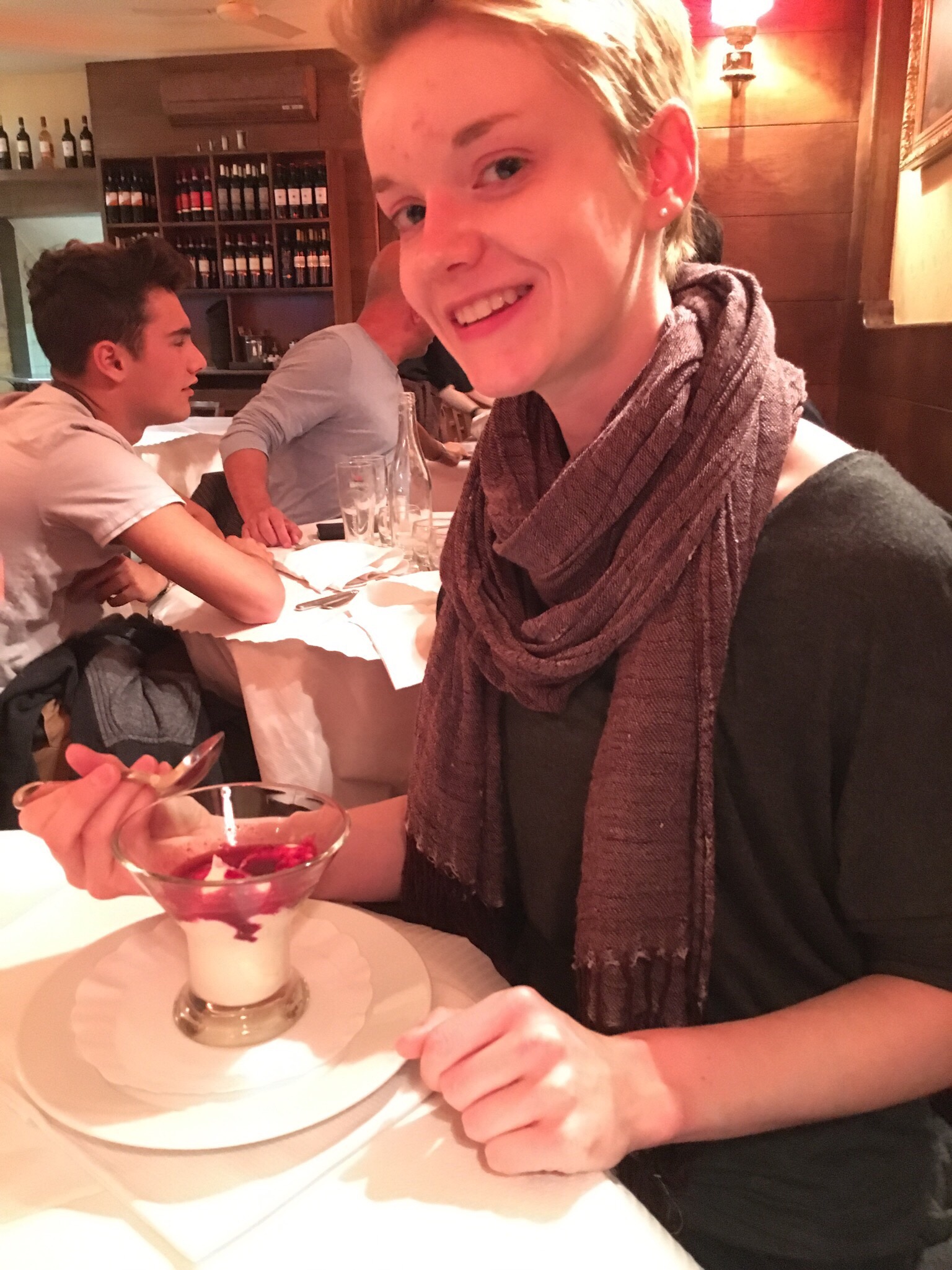
Interesting note: the family next to us ended up in line with us at the airport two days later. Obviously, this restaurant is a favorite of tourists
The Eiffel is beautiful at night, so we walked to the river and did a big loop over the Passerelle Debilly bridge and then back to the Eiffel side by the the Pont d Lena bridge. The river and its sites were all lit up at night, and while it was not overcrowded (we expected that would happen for the fireworks tomorrow), the crowds ramped up a little as 11:00 approached and the Eiffel twinkled for 5 minutes.

